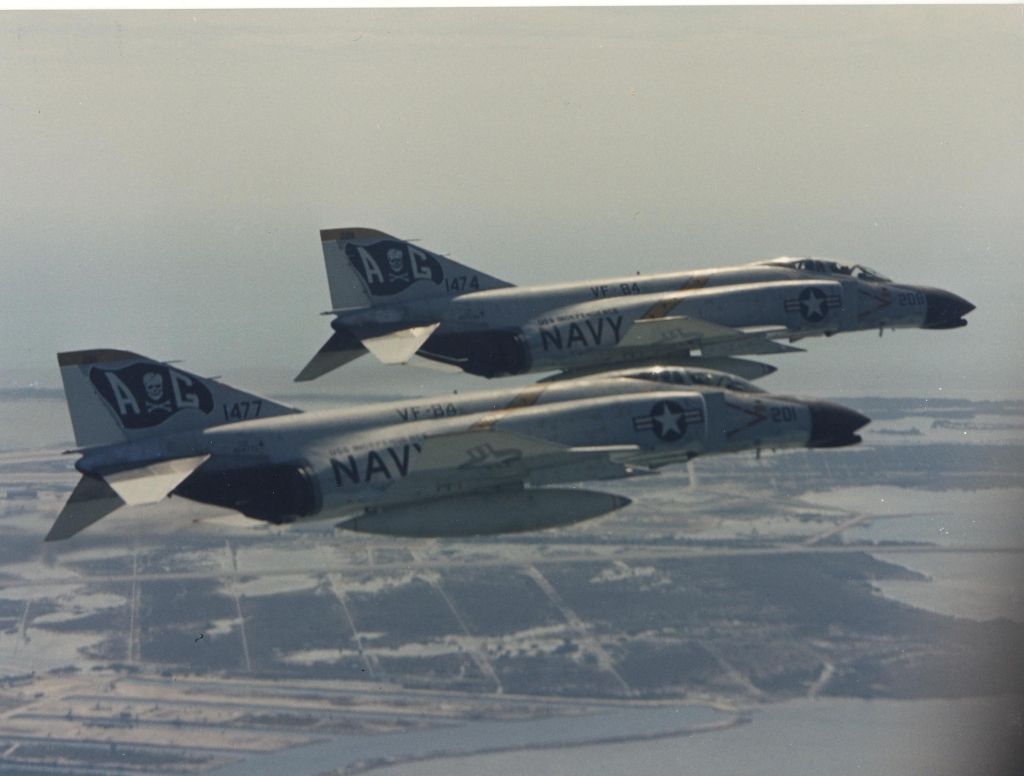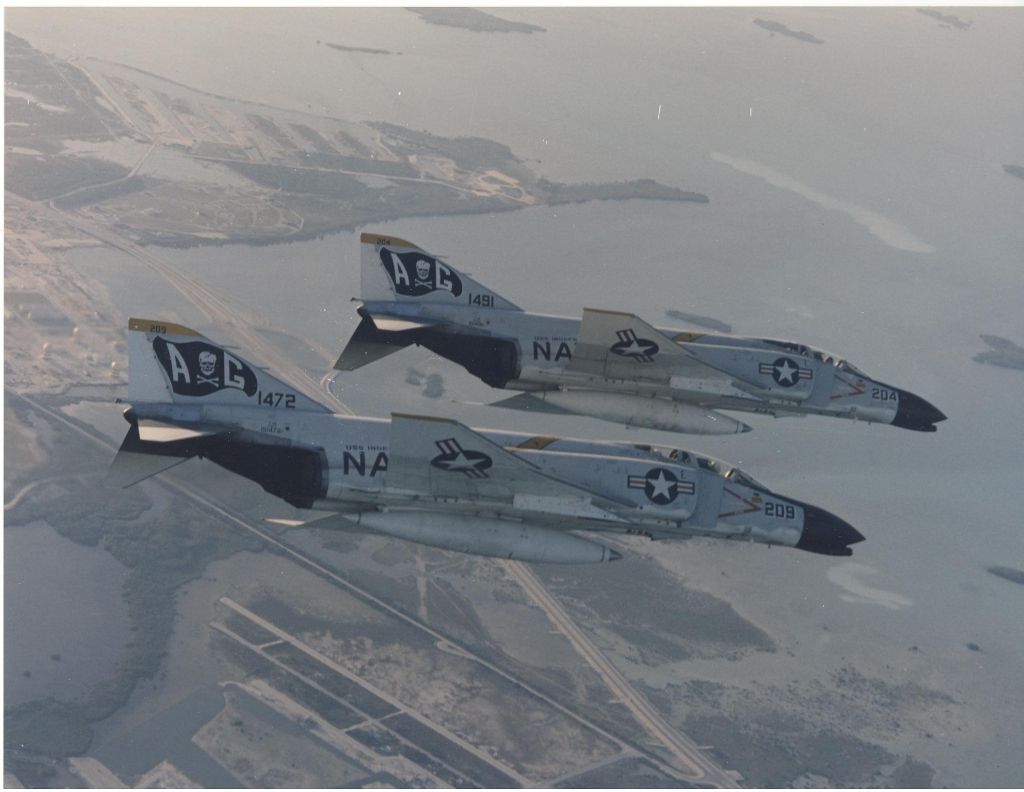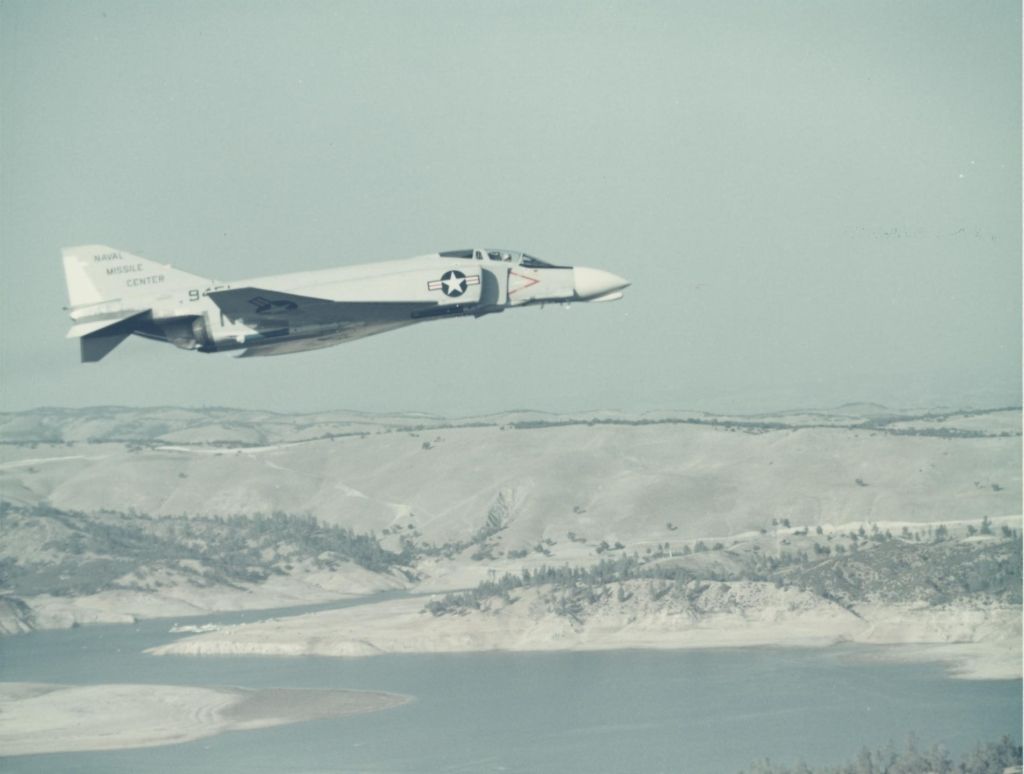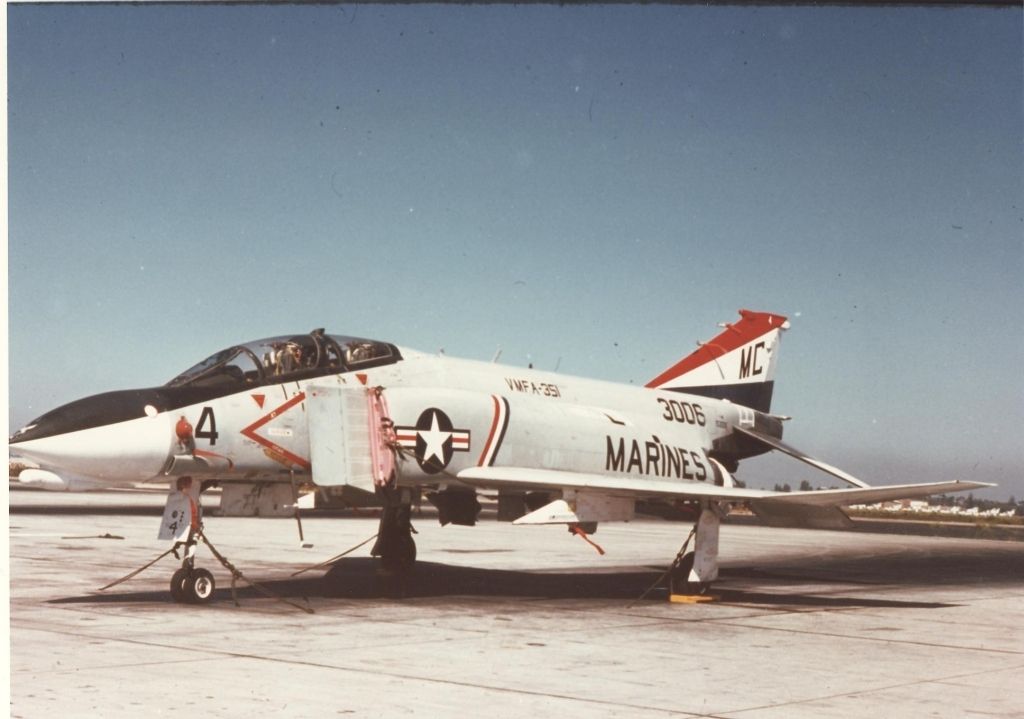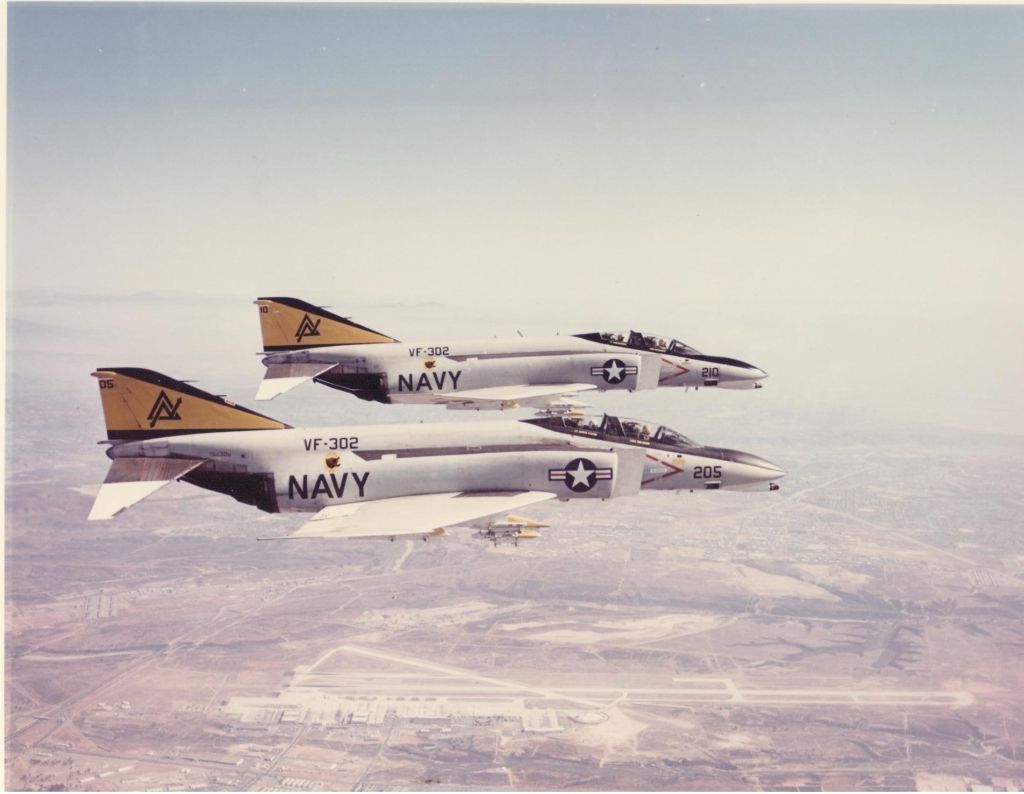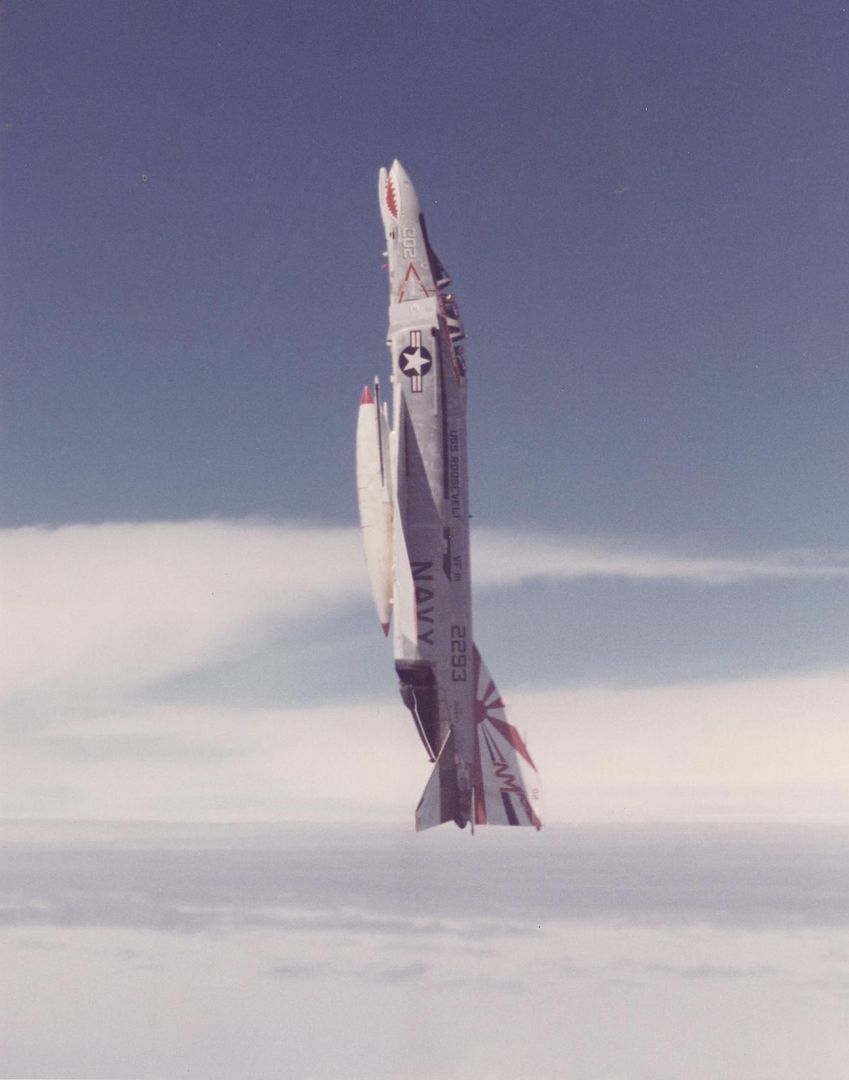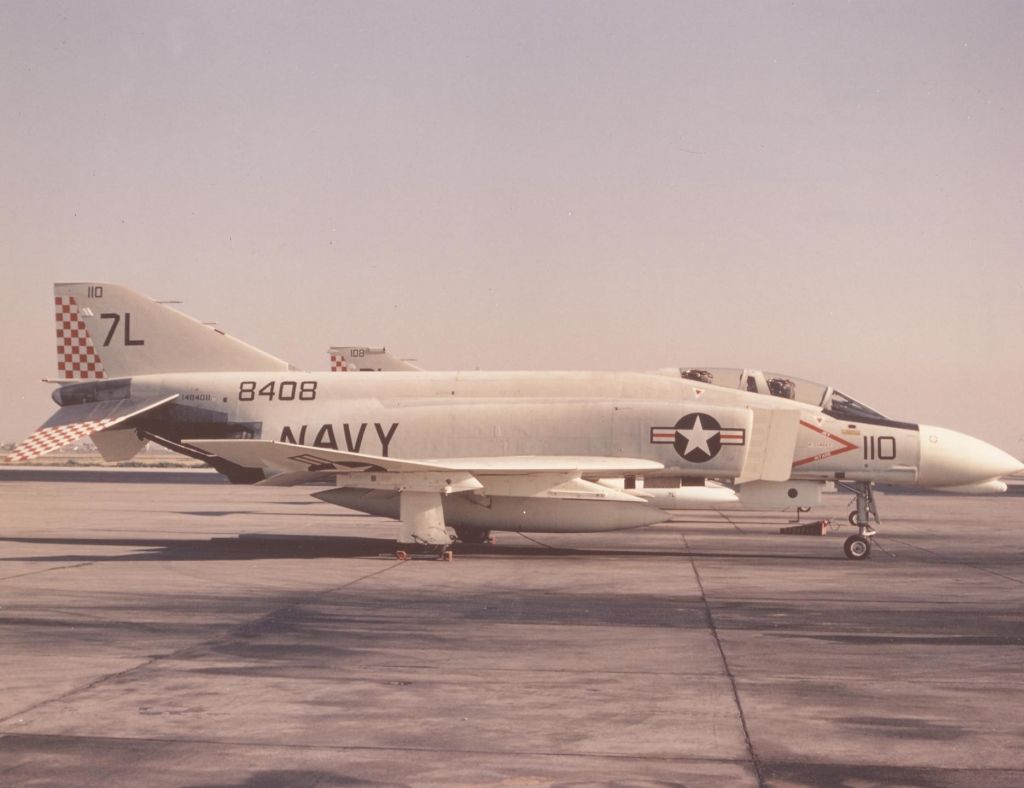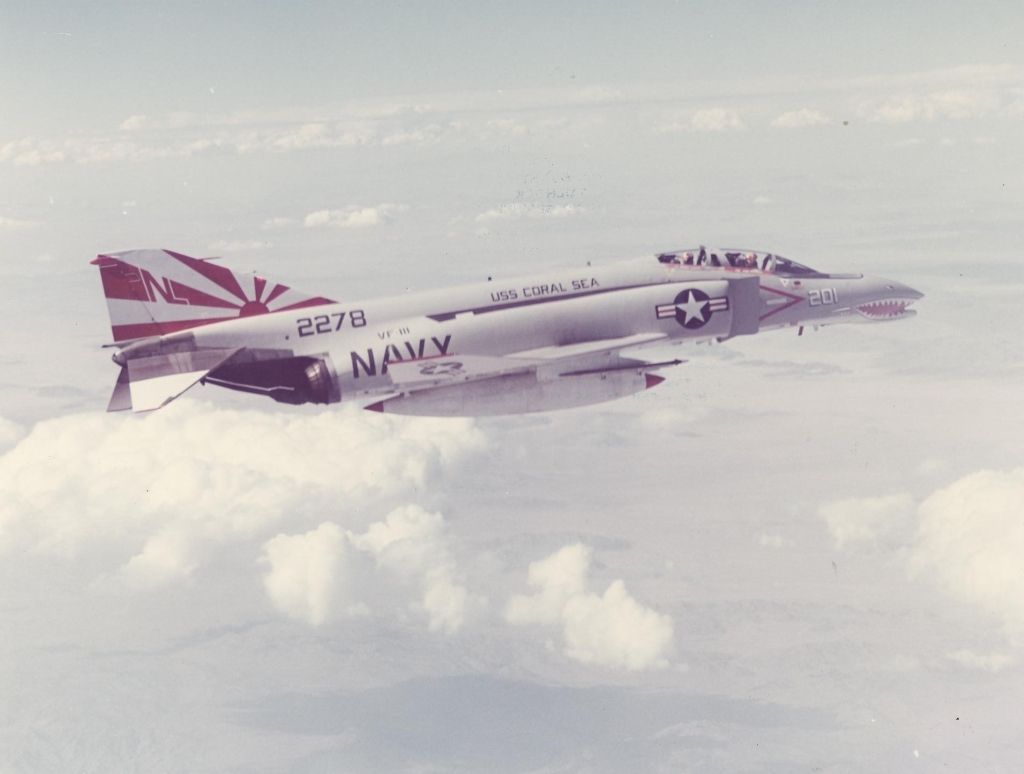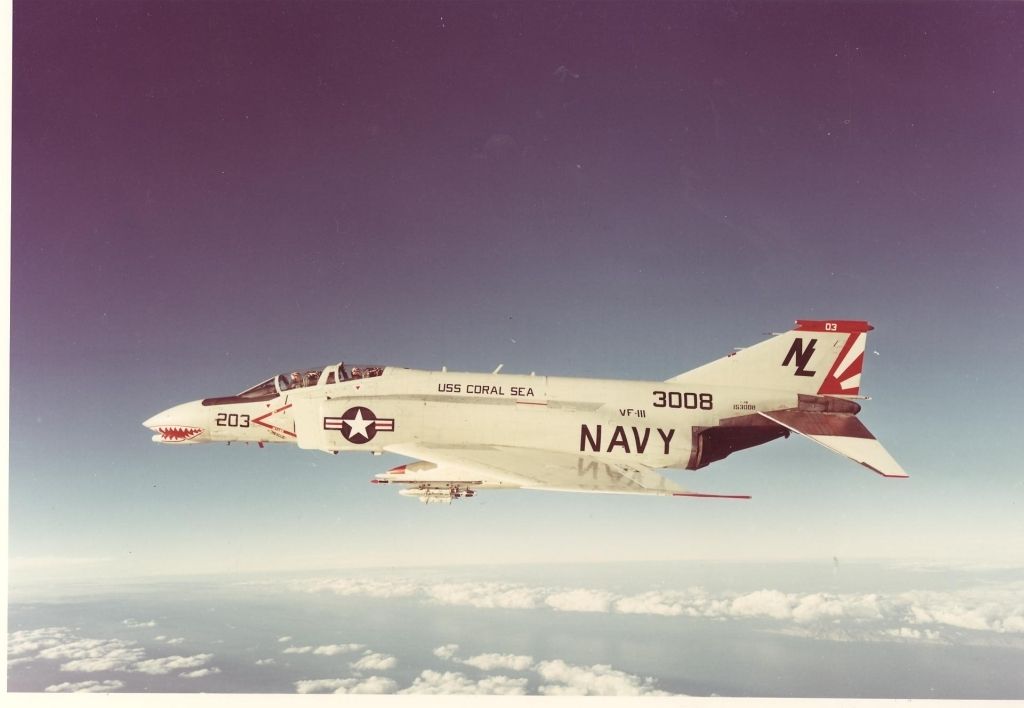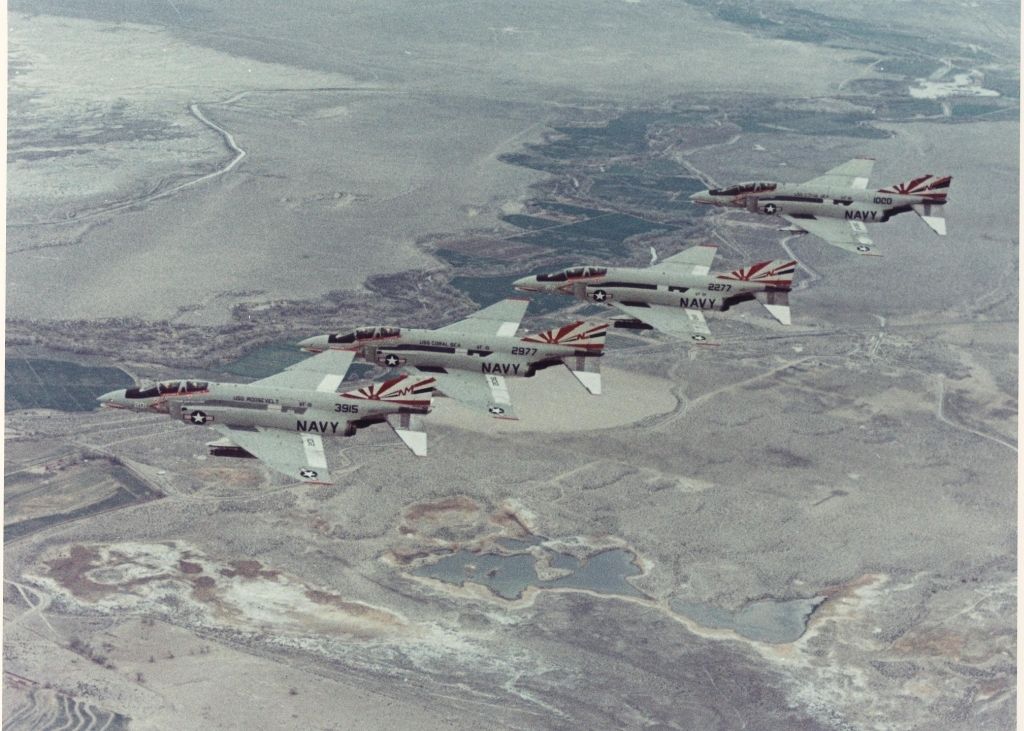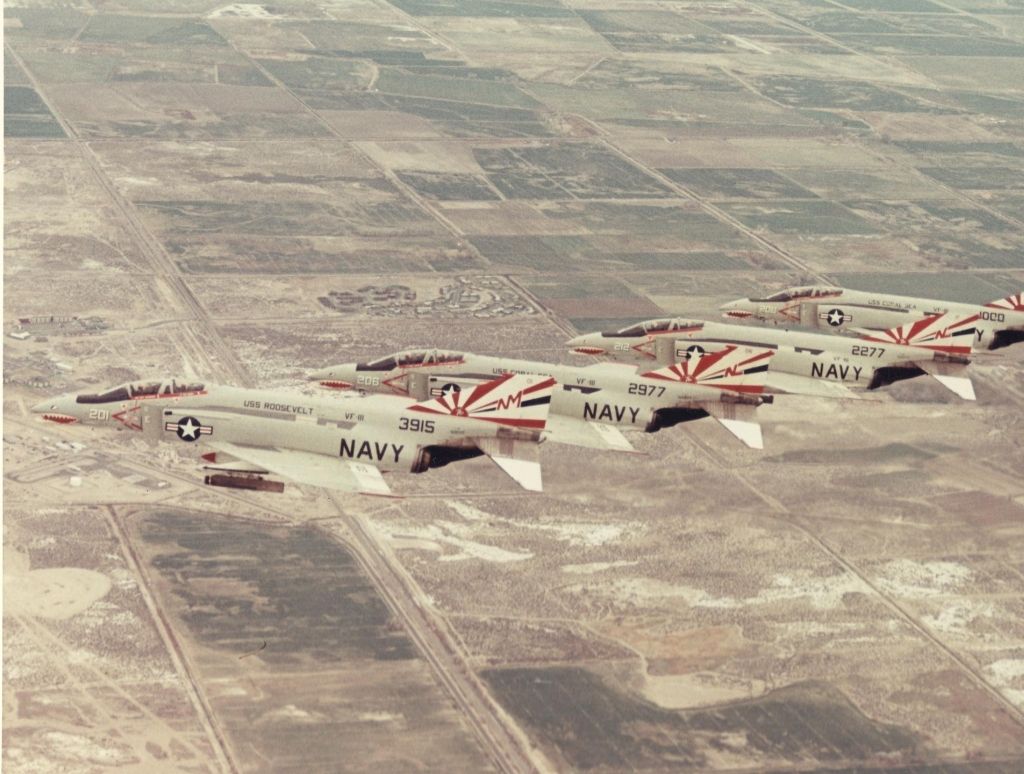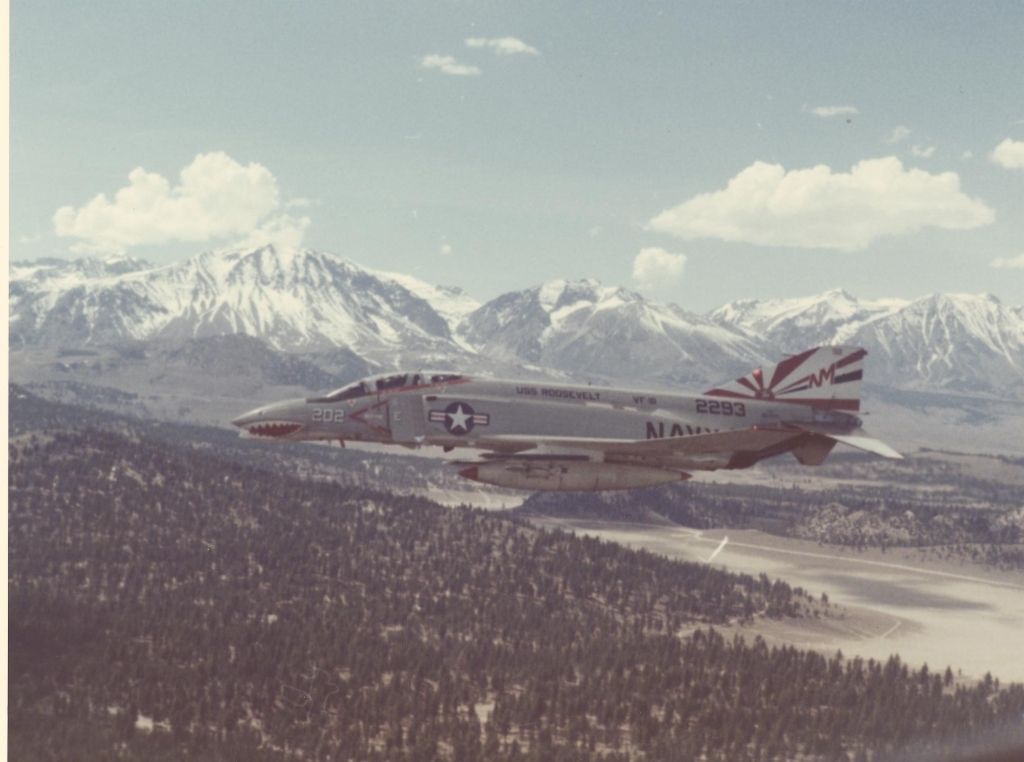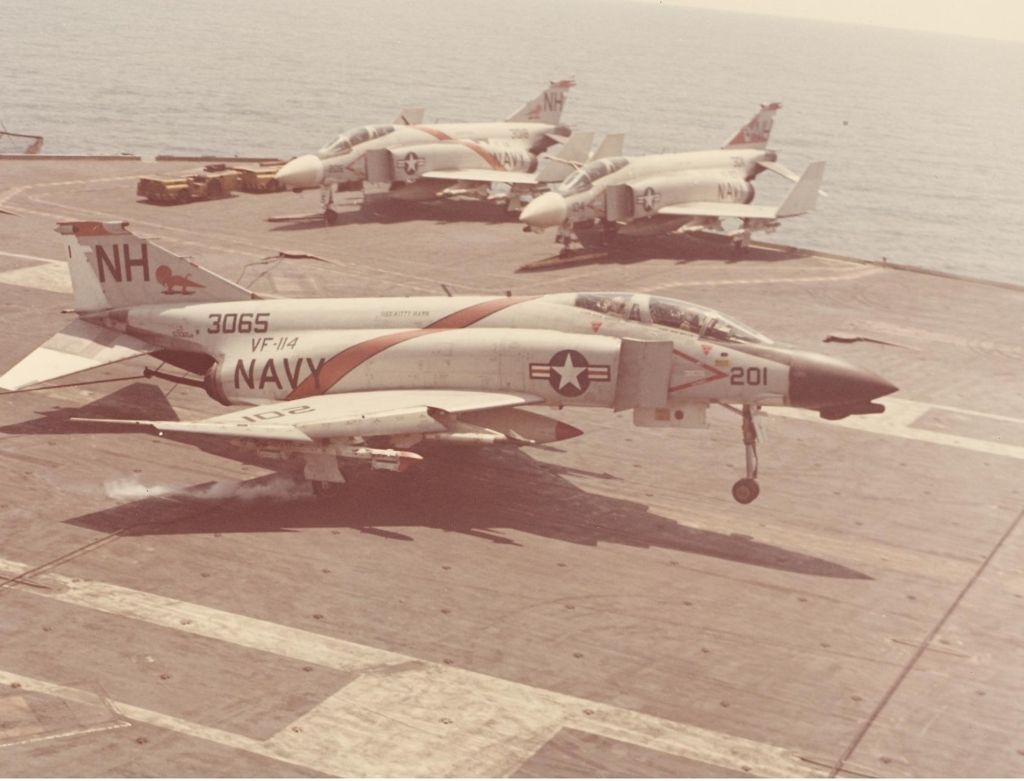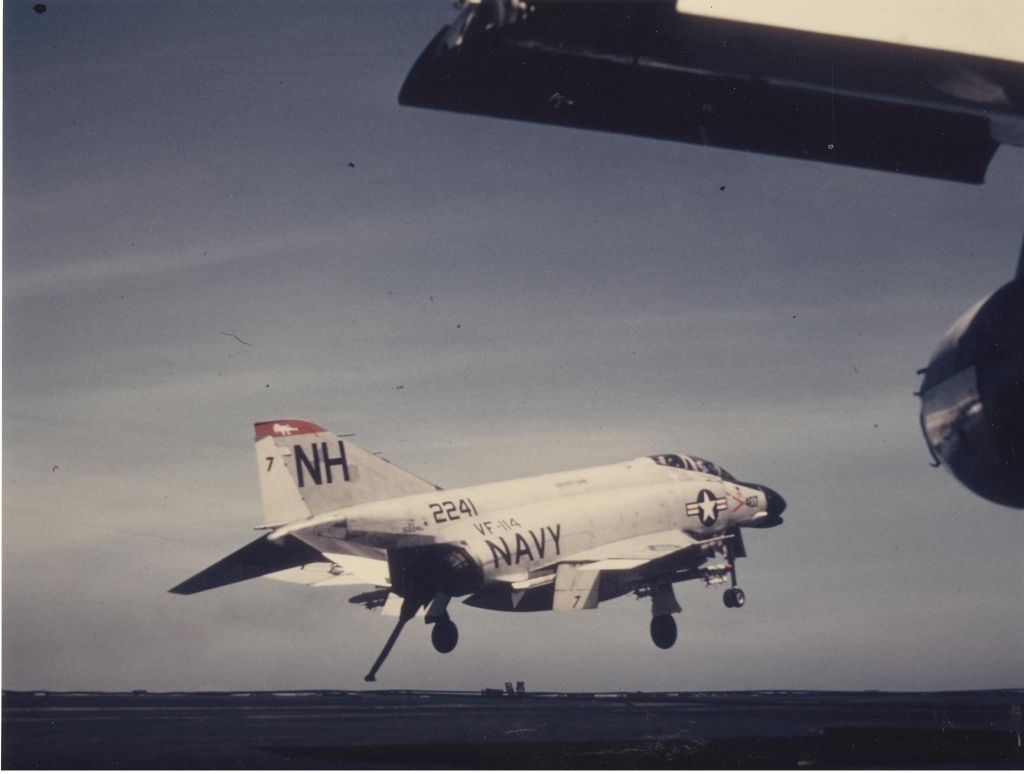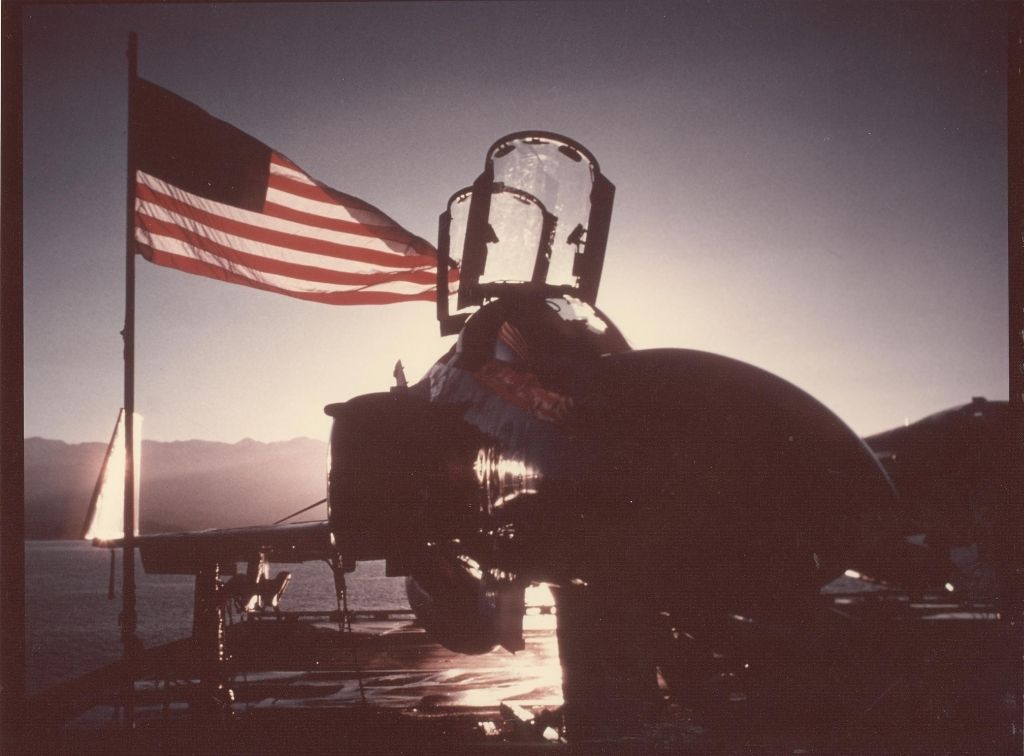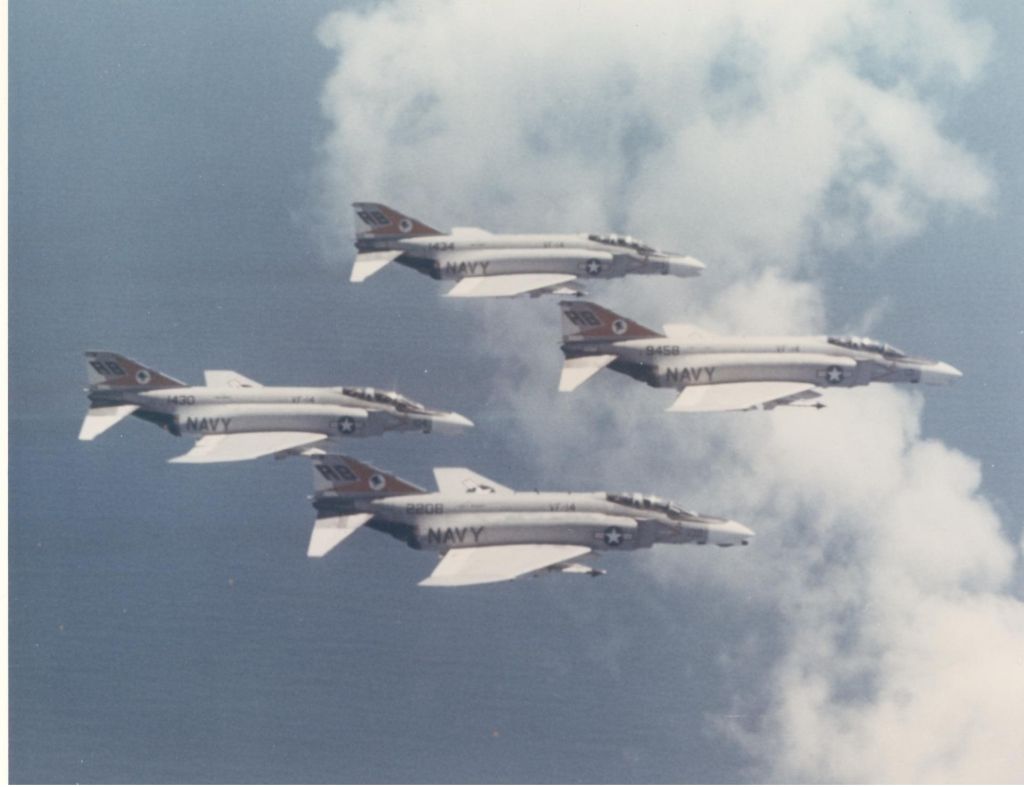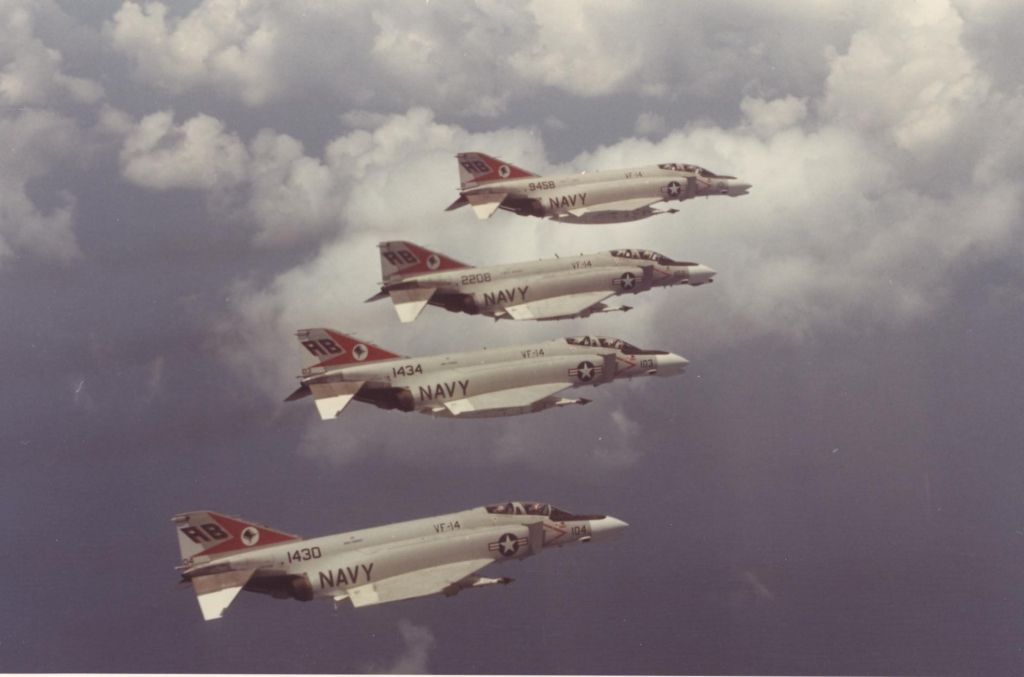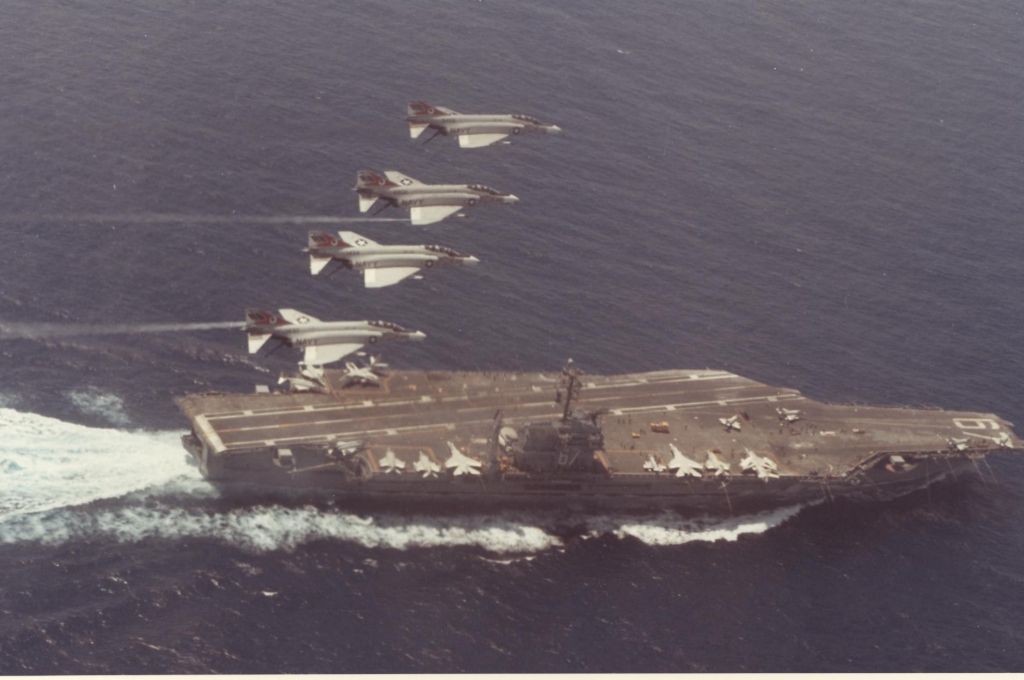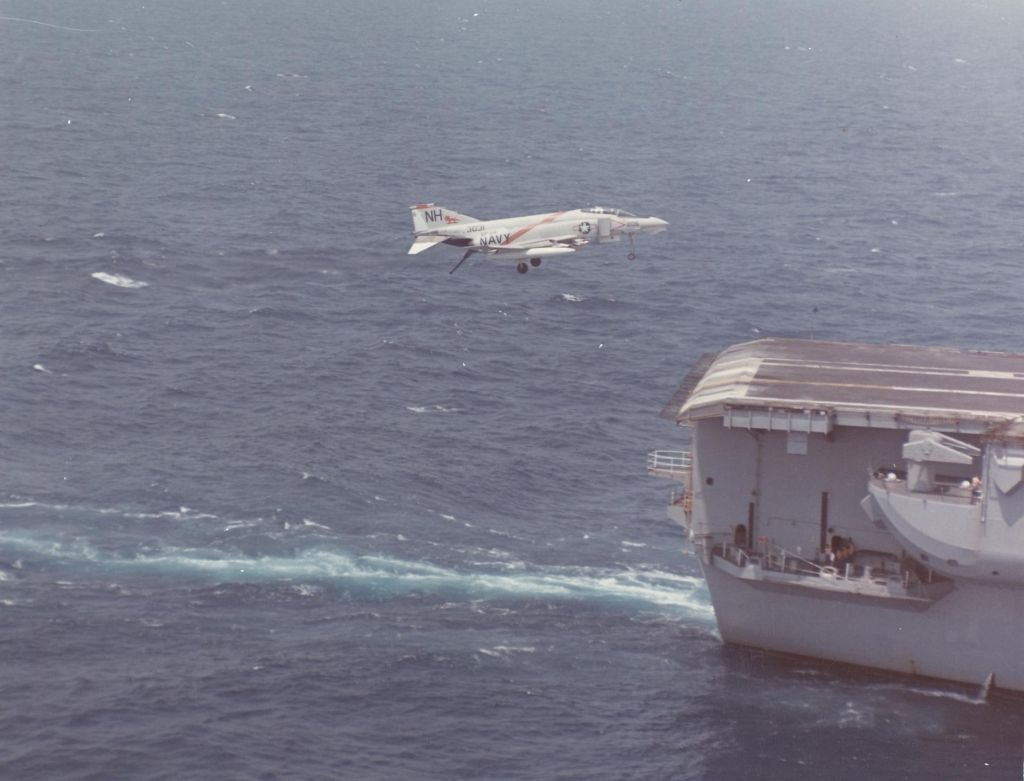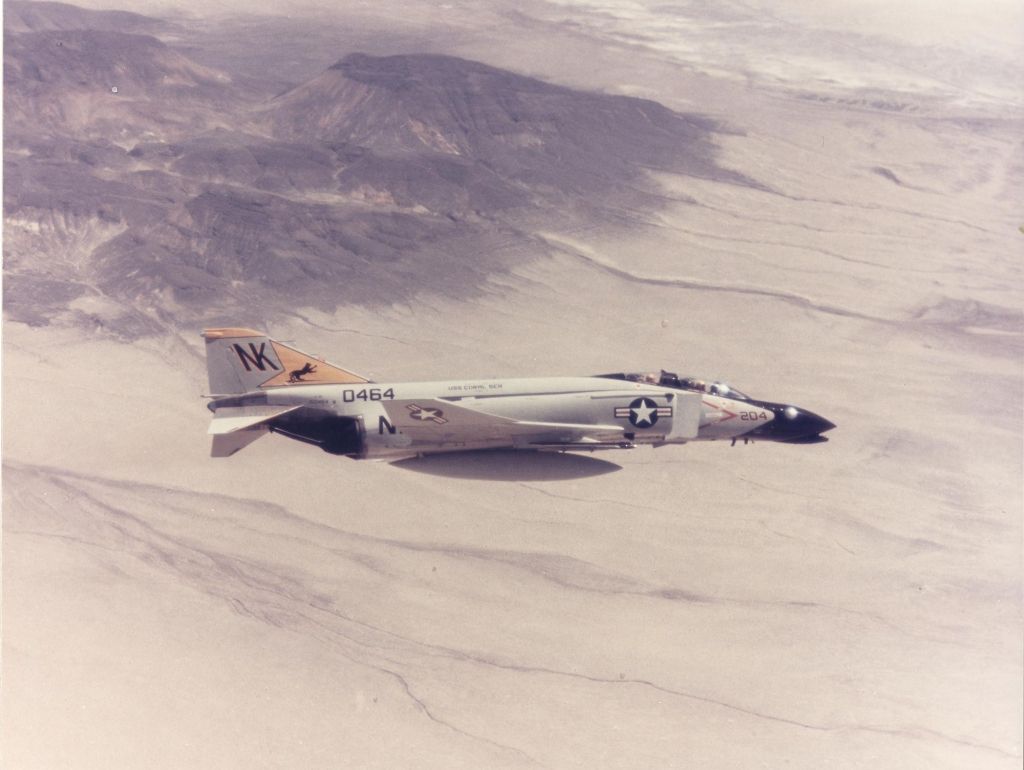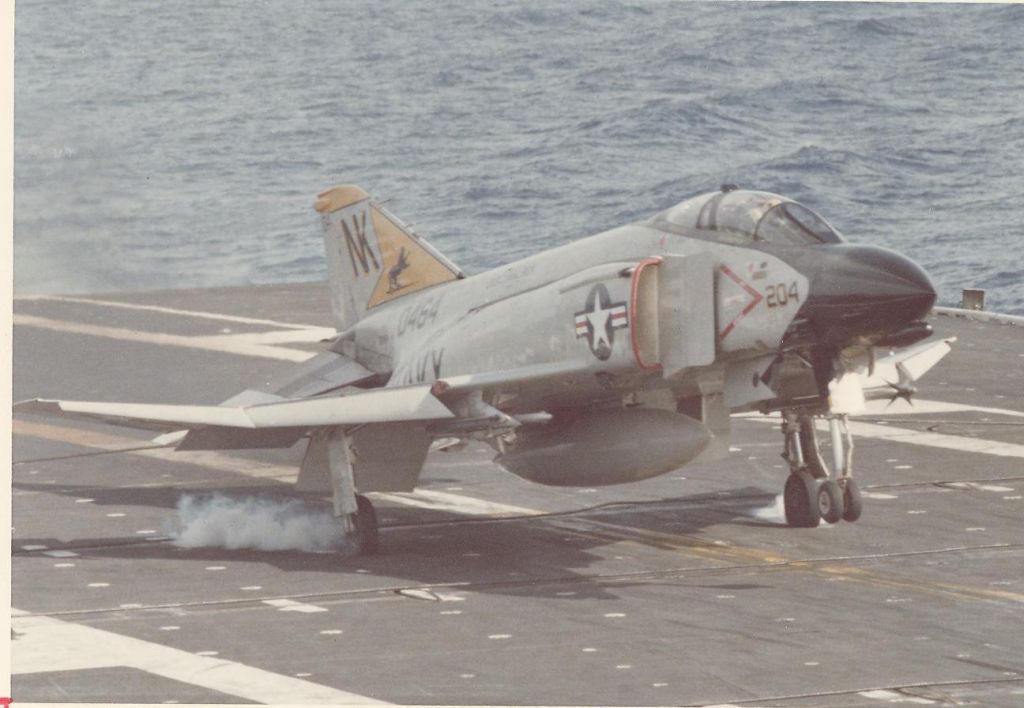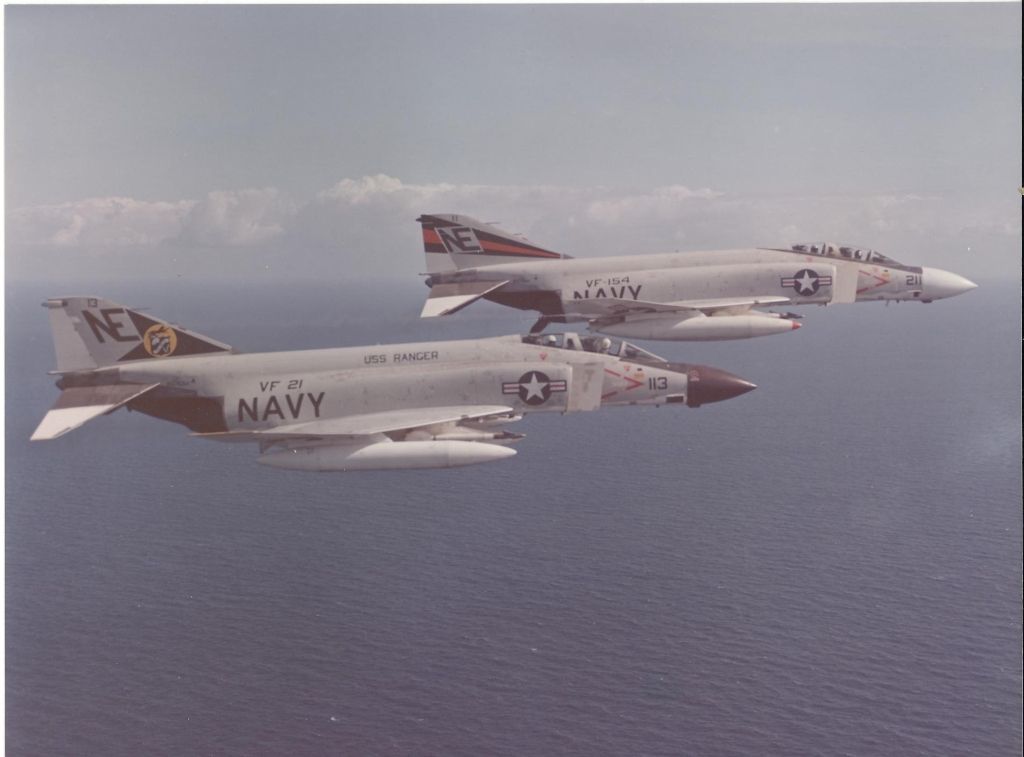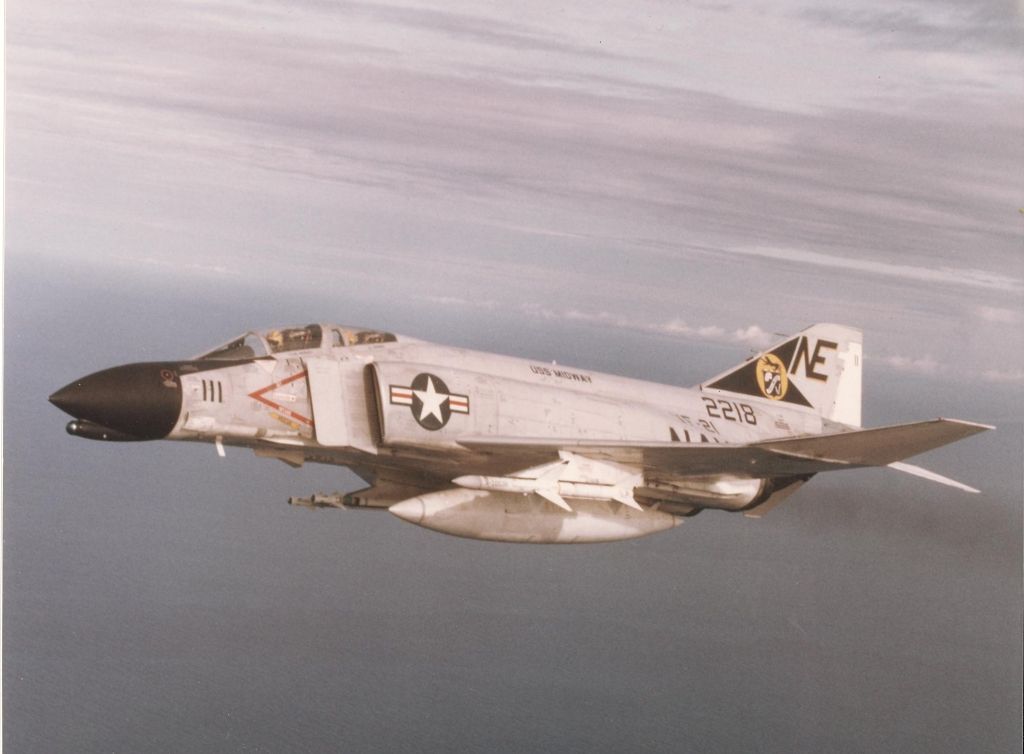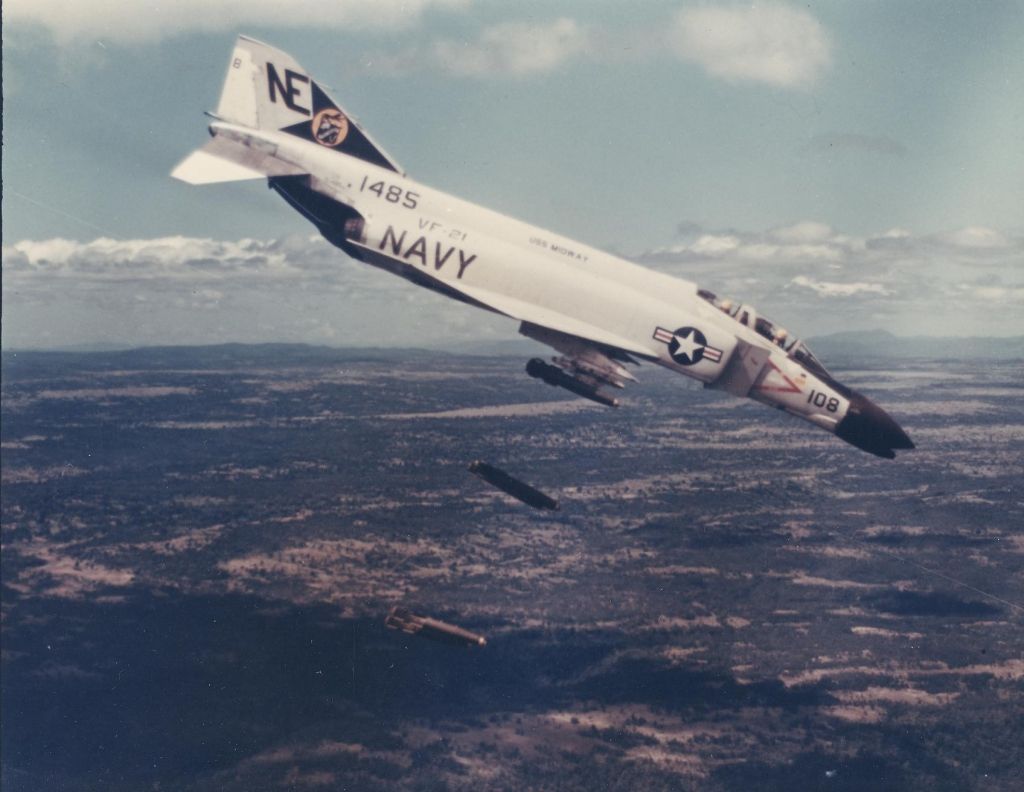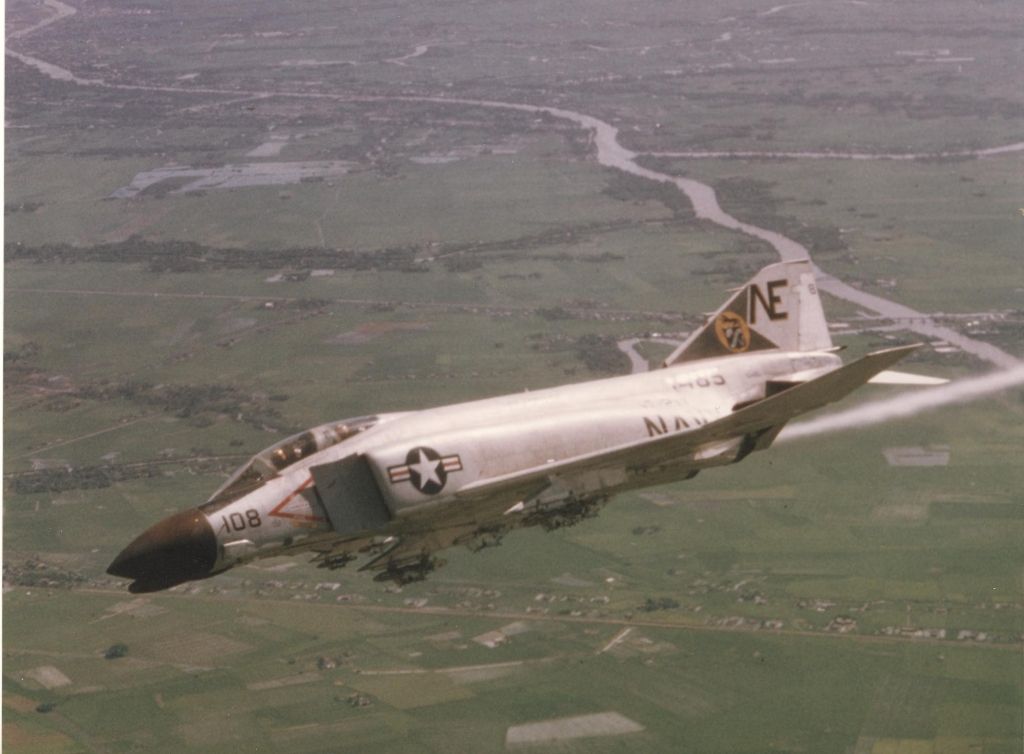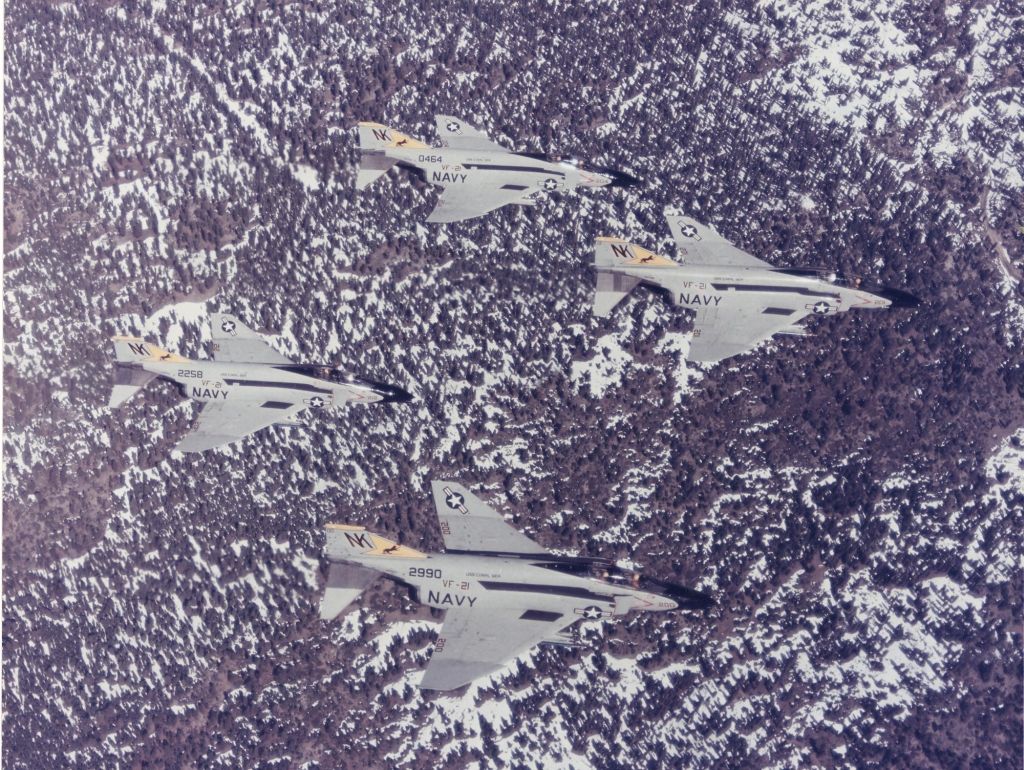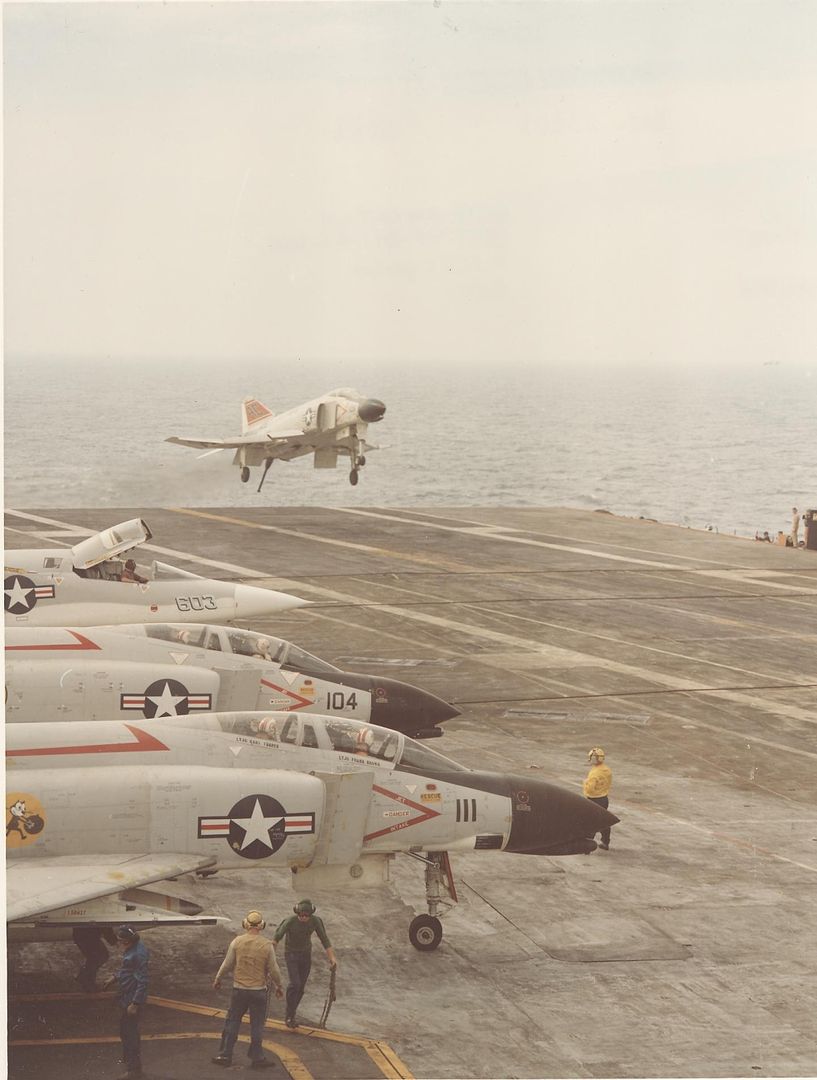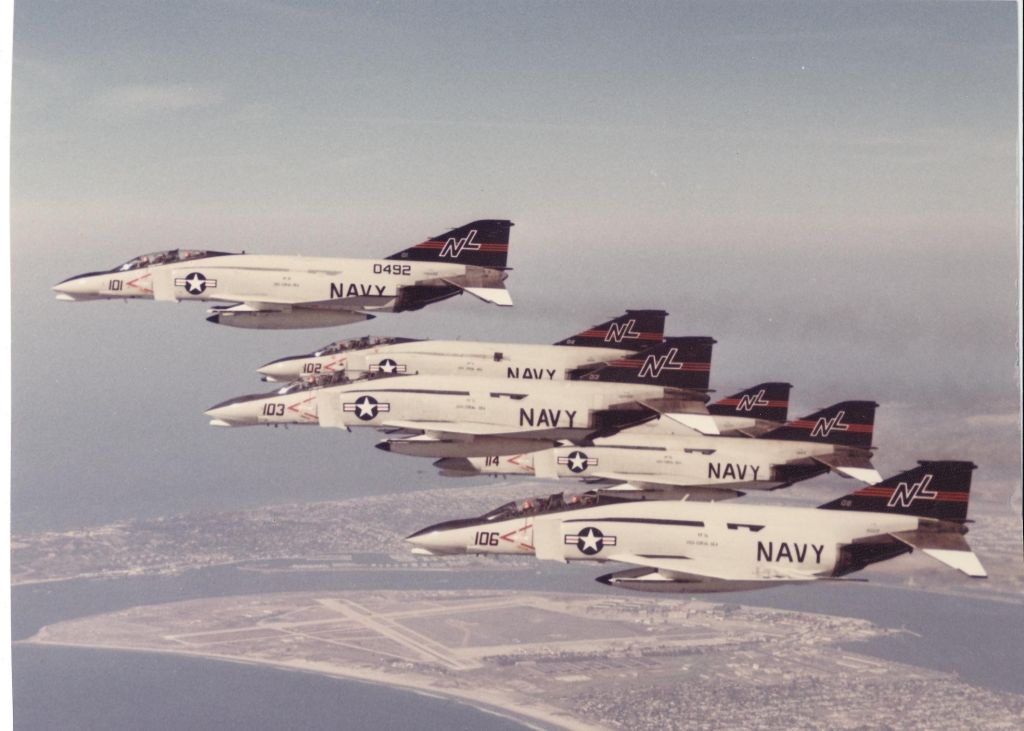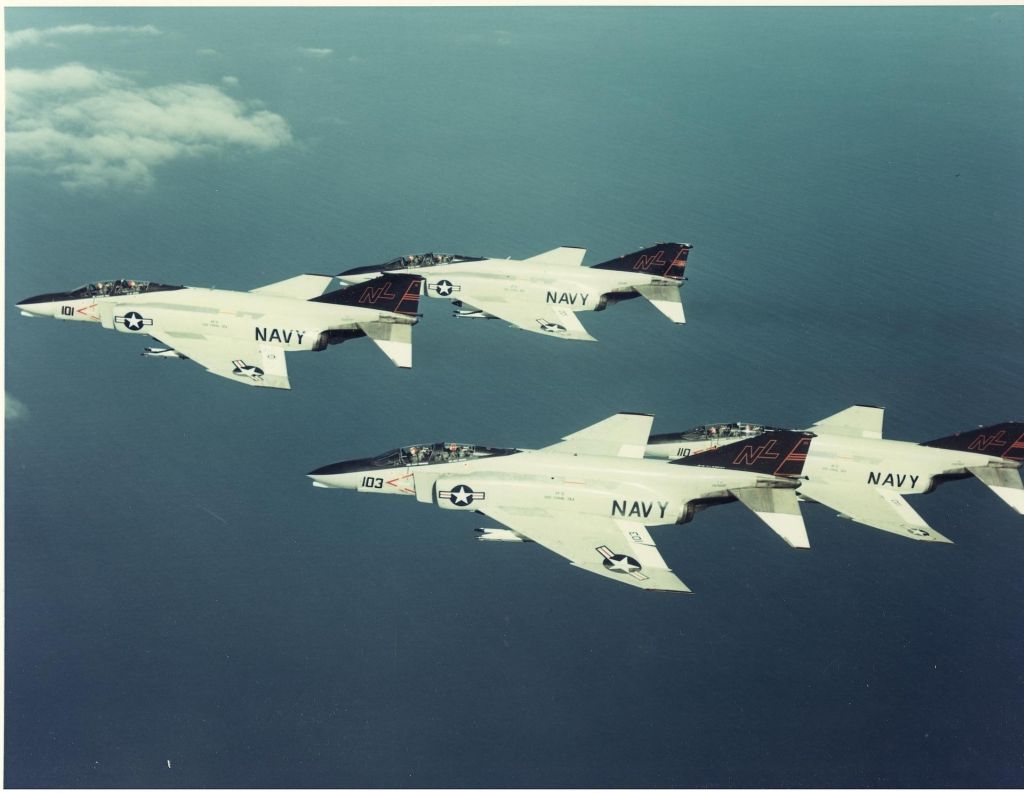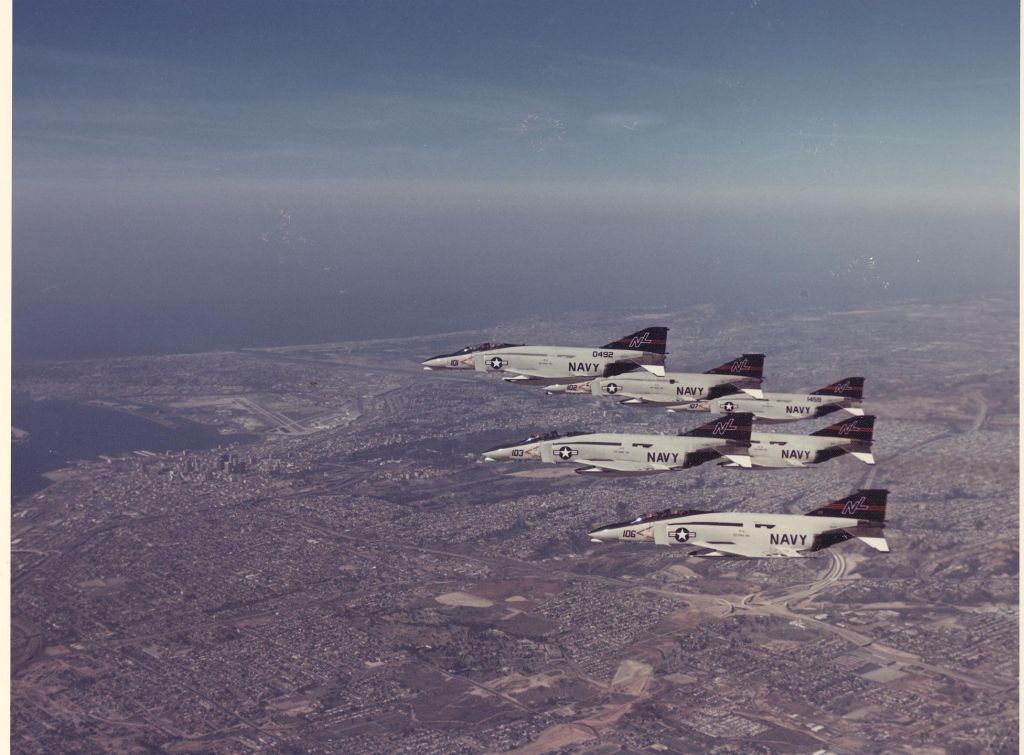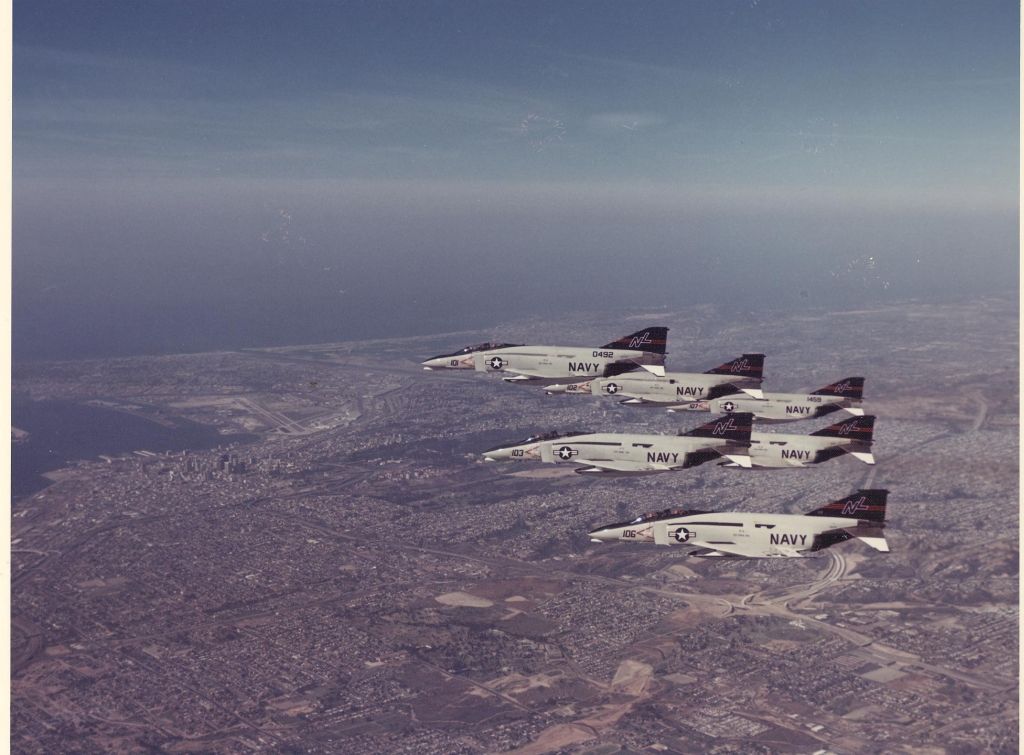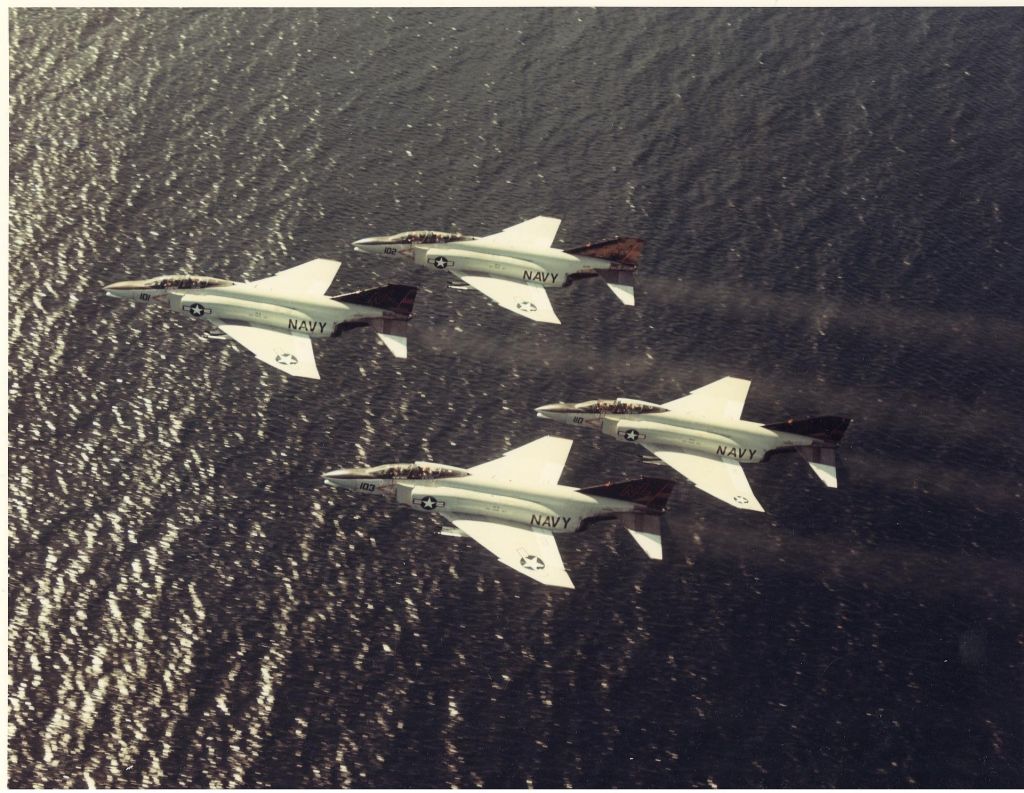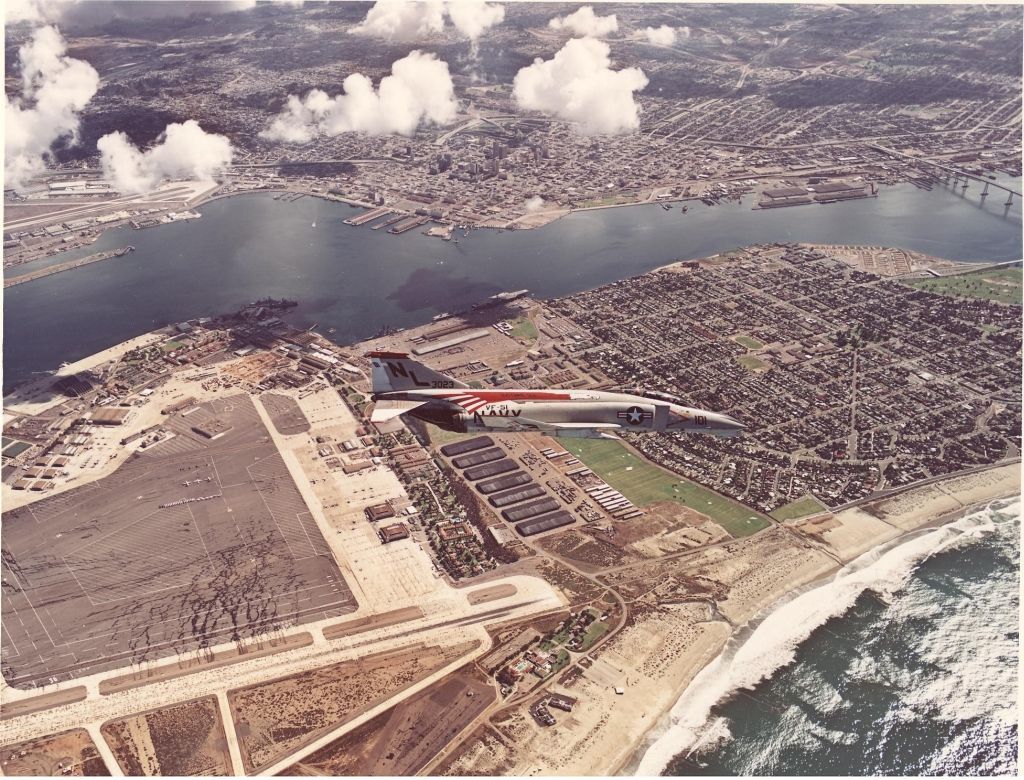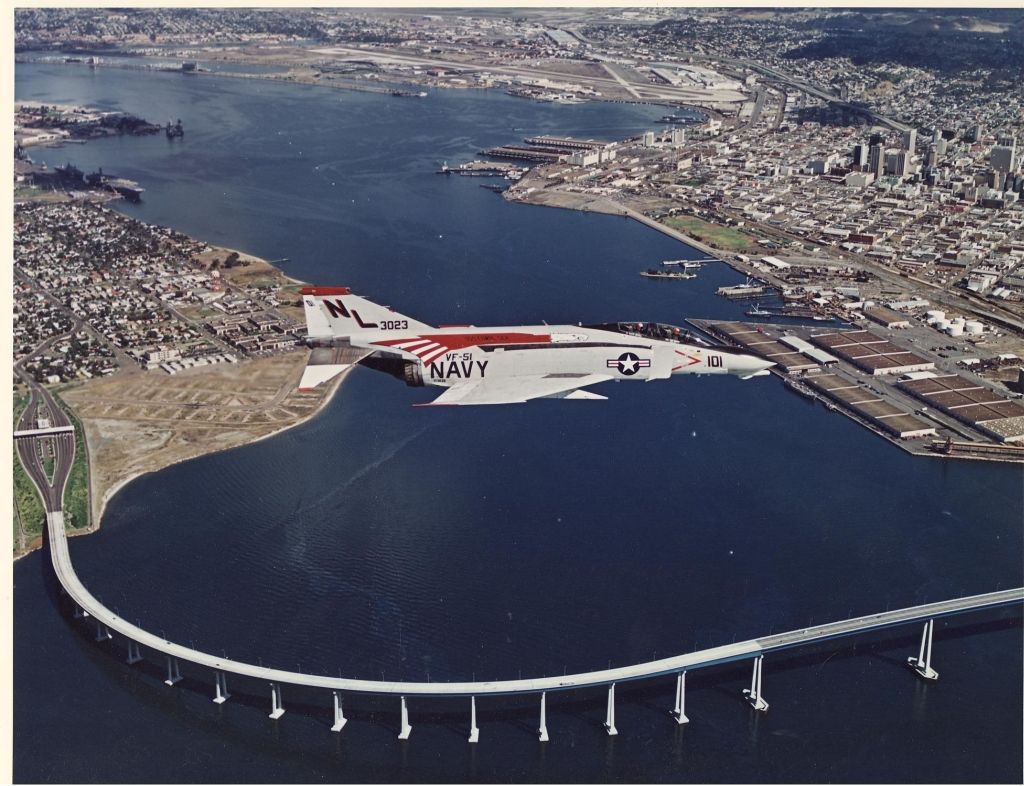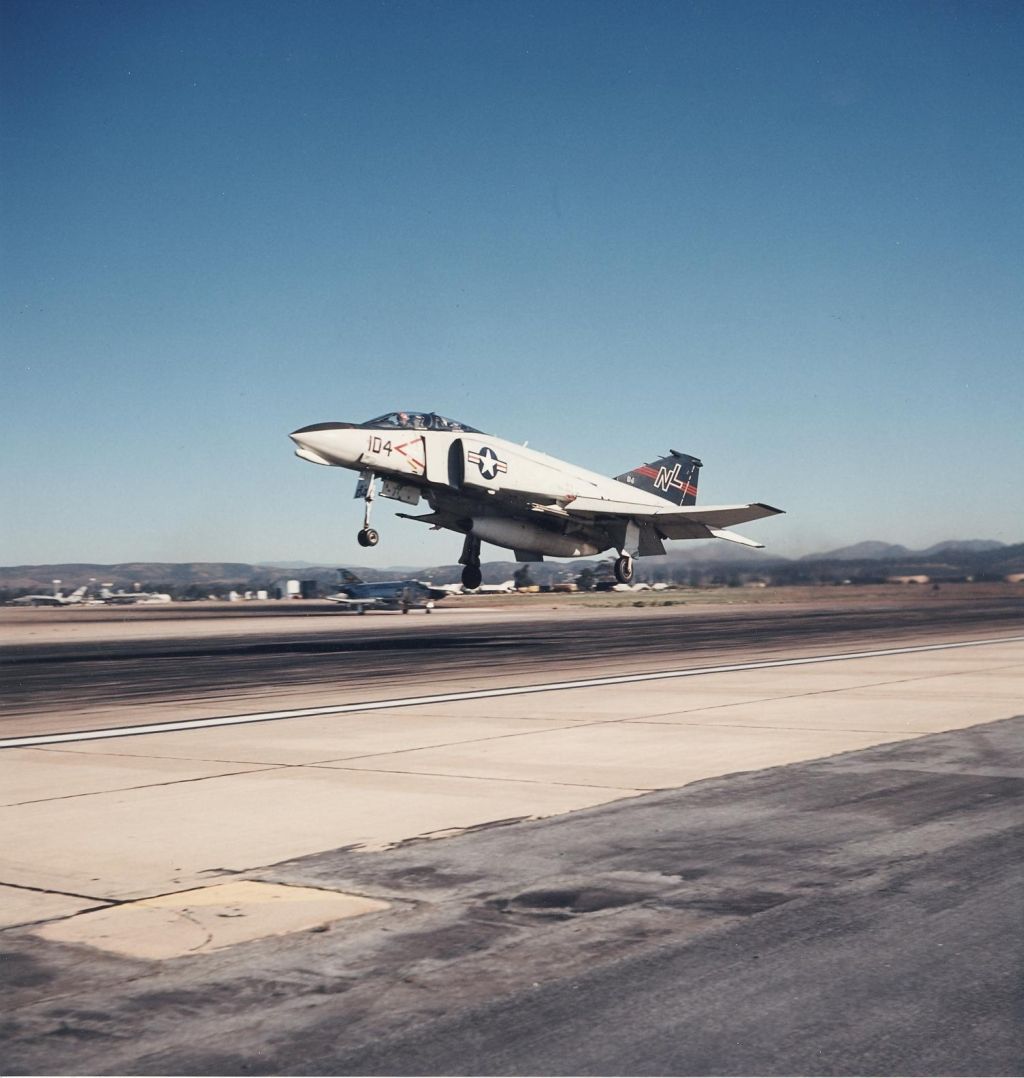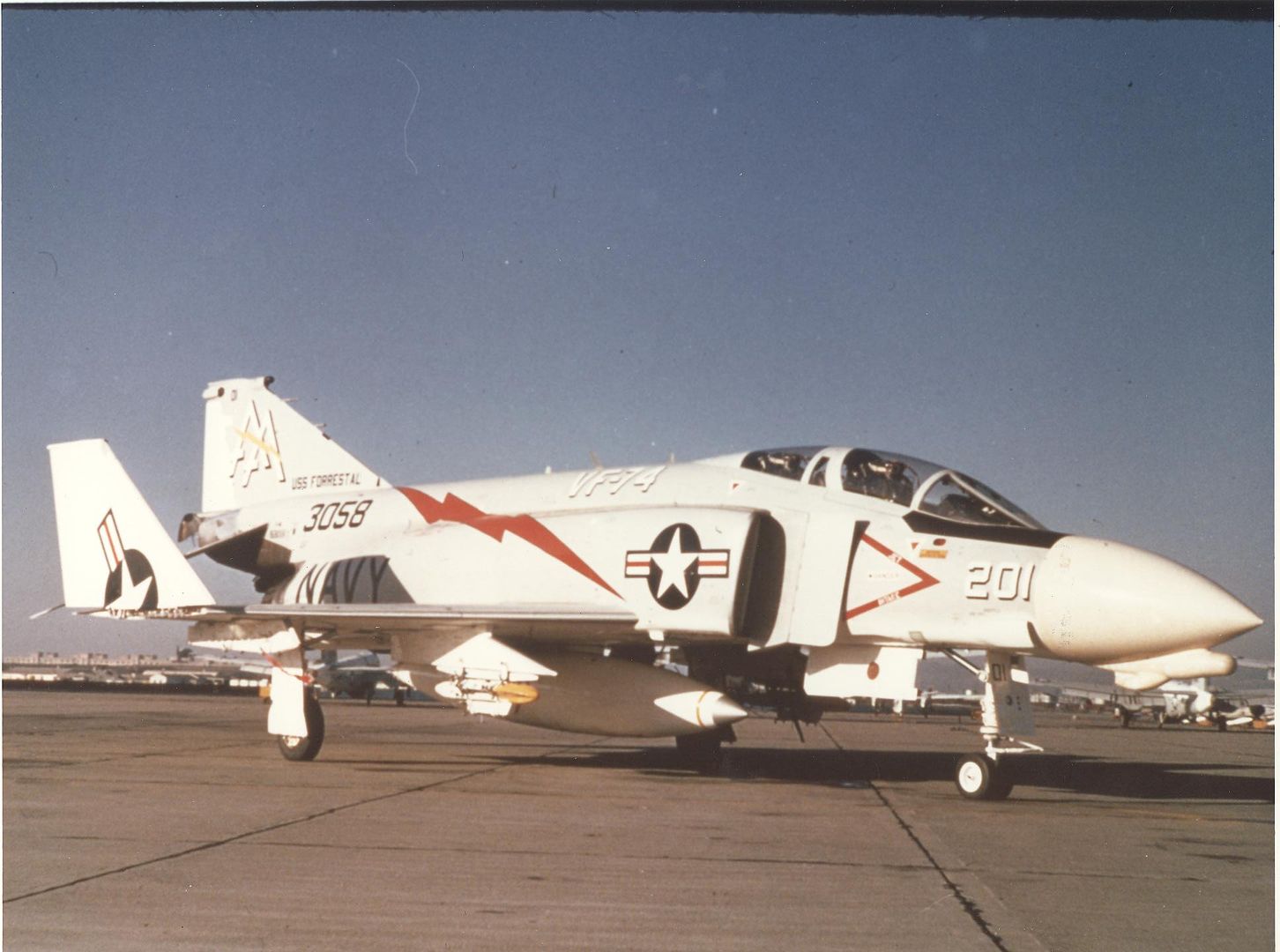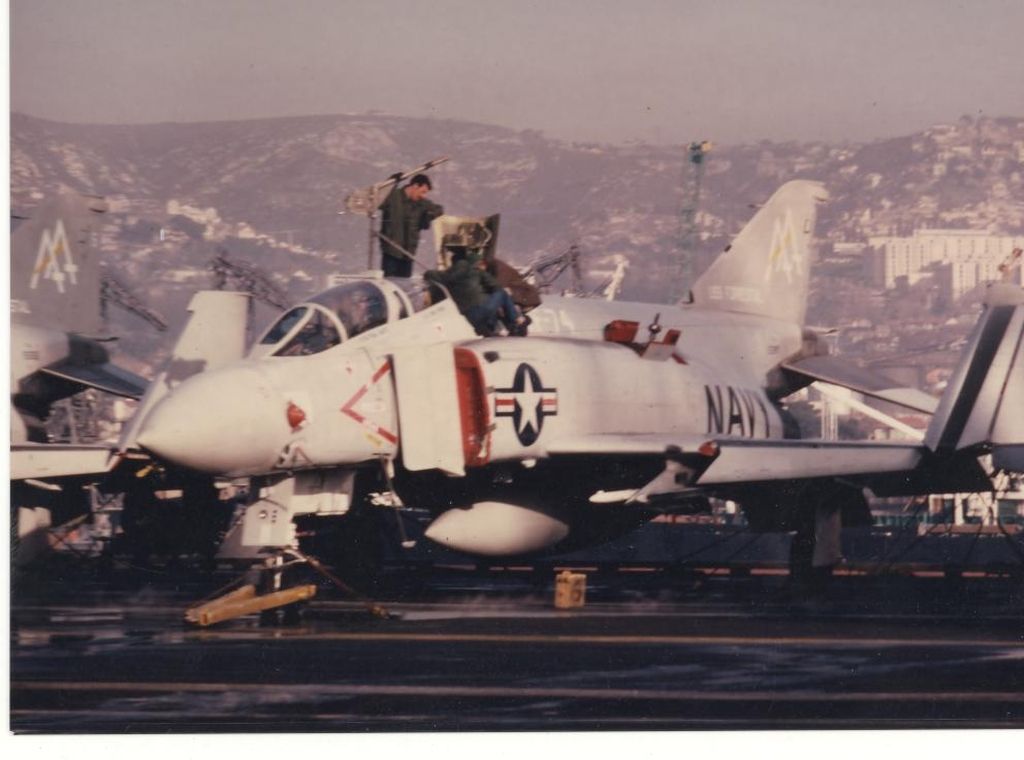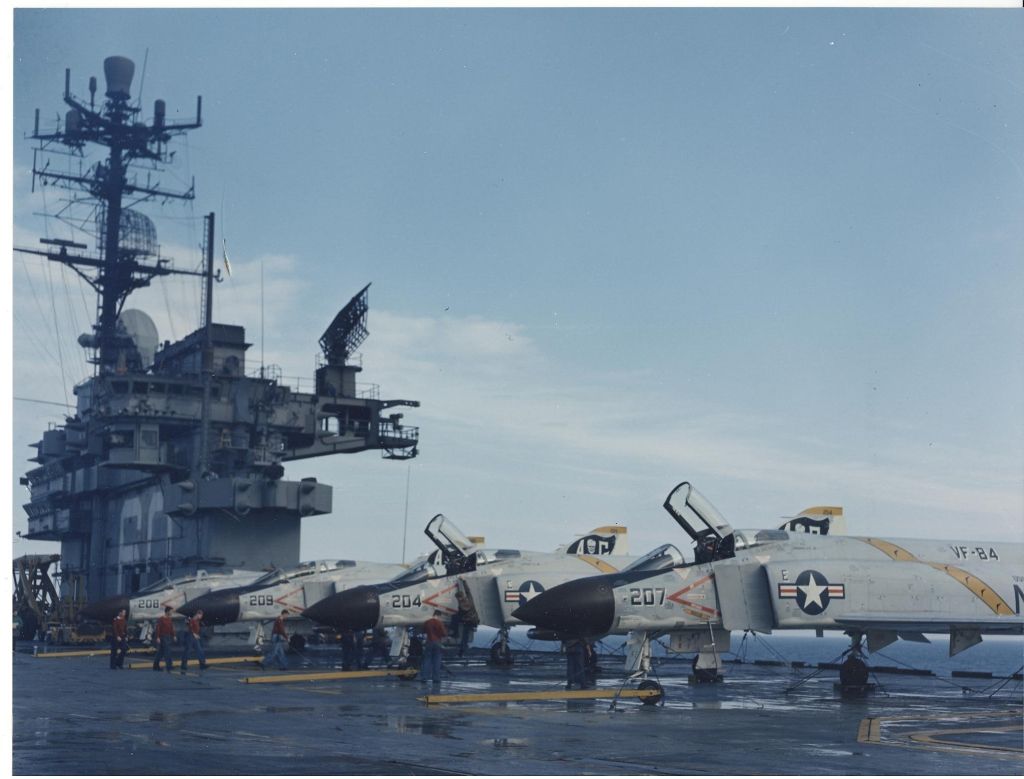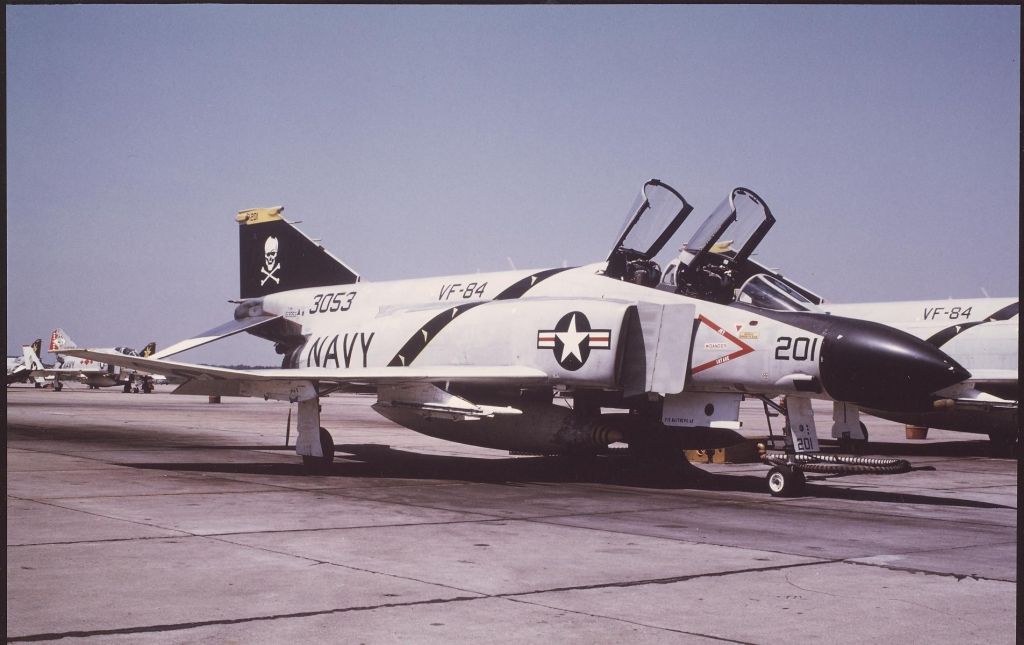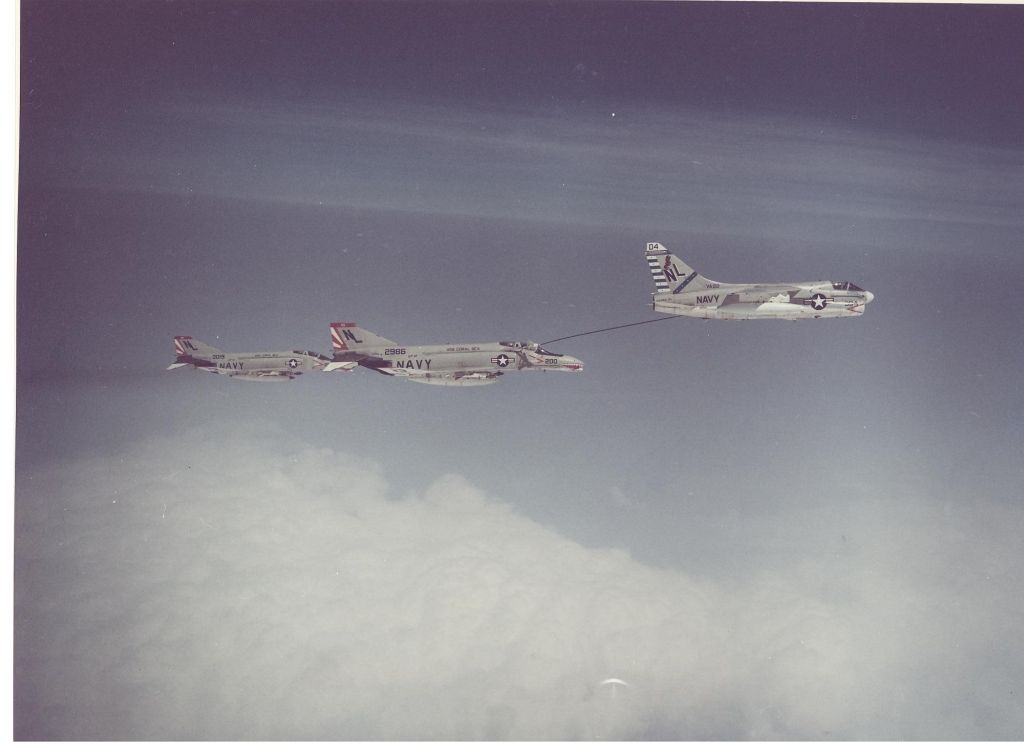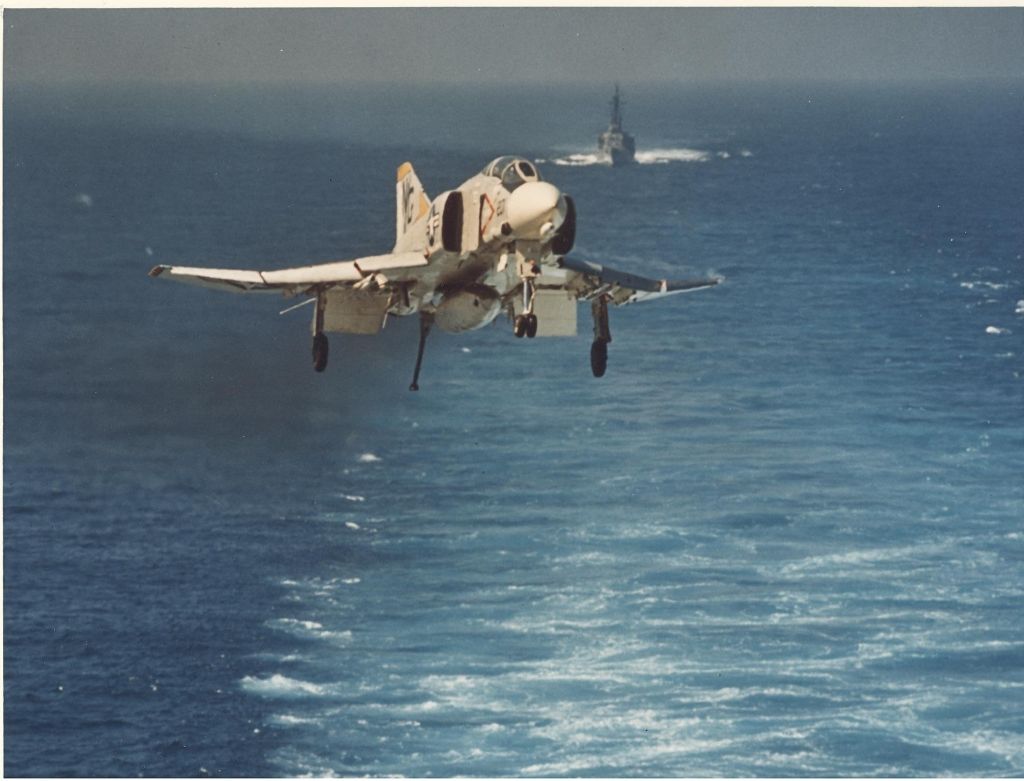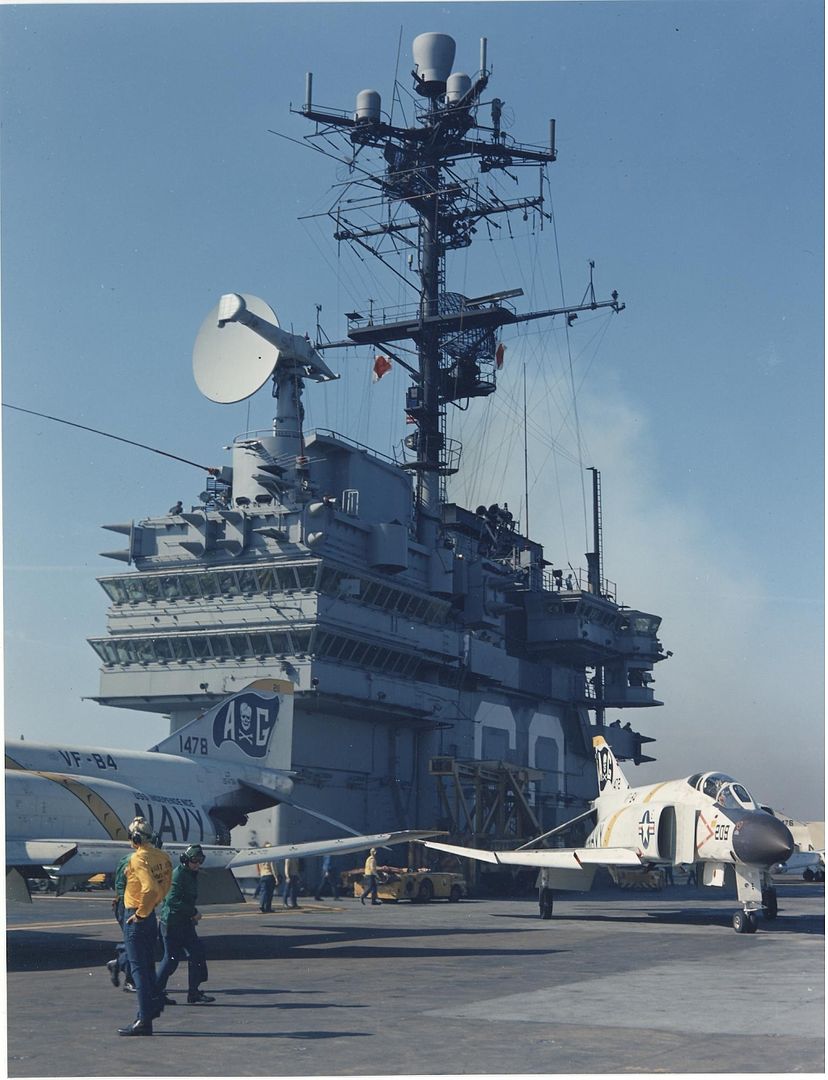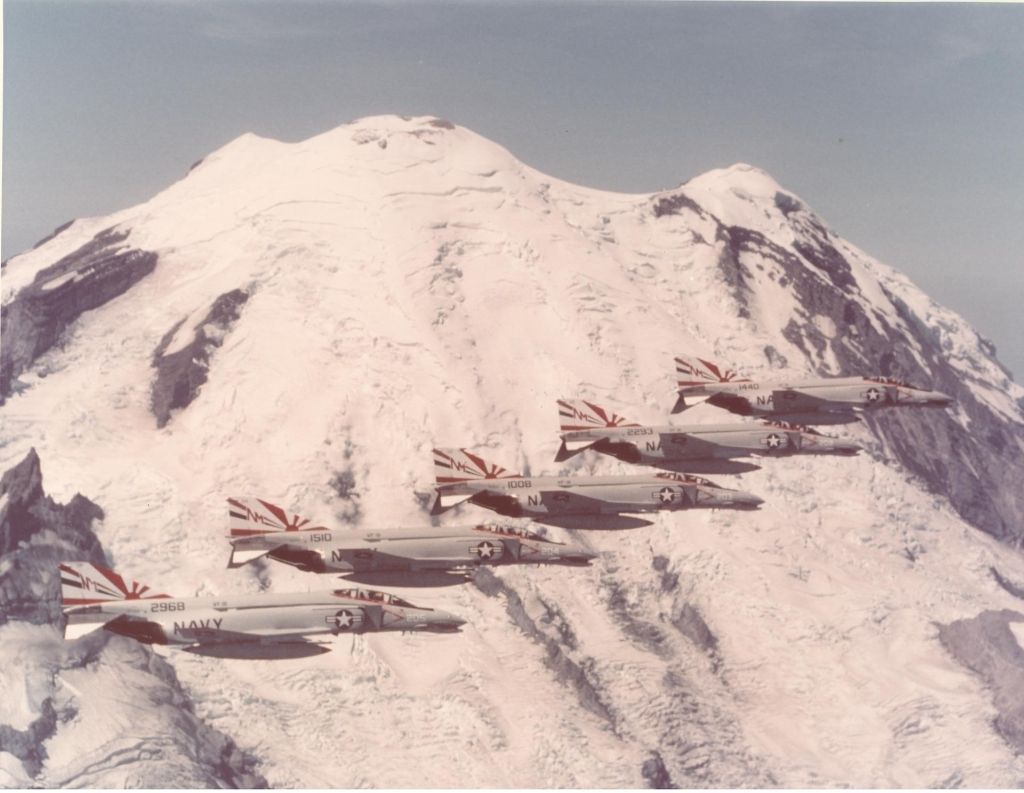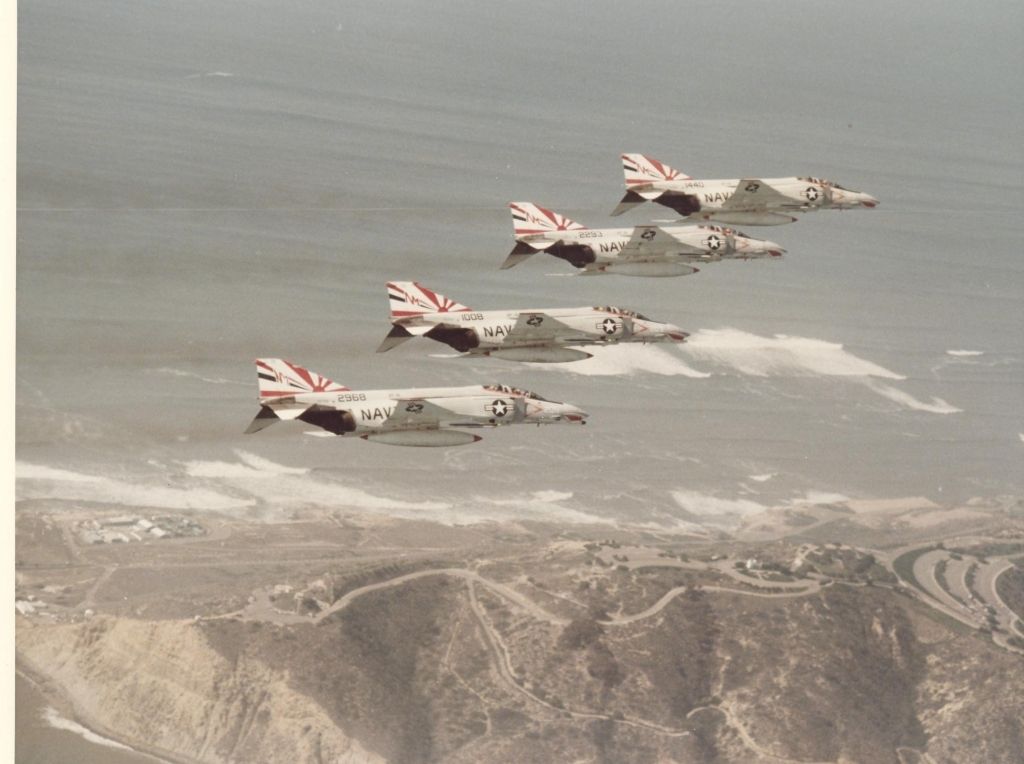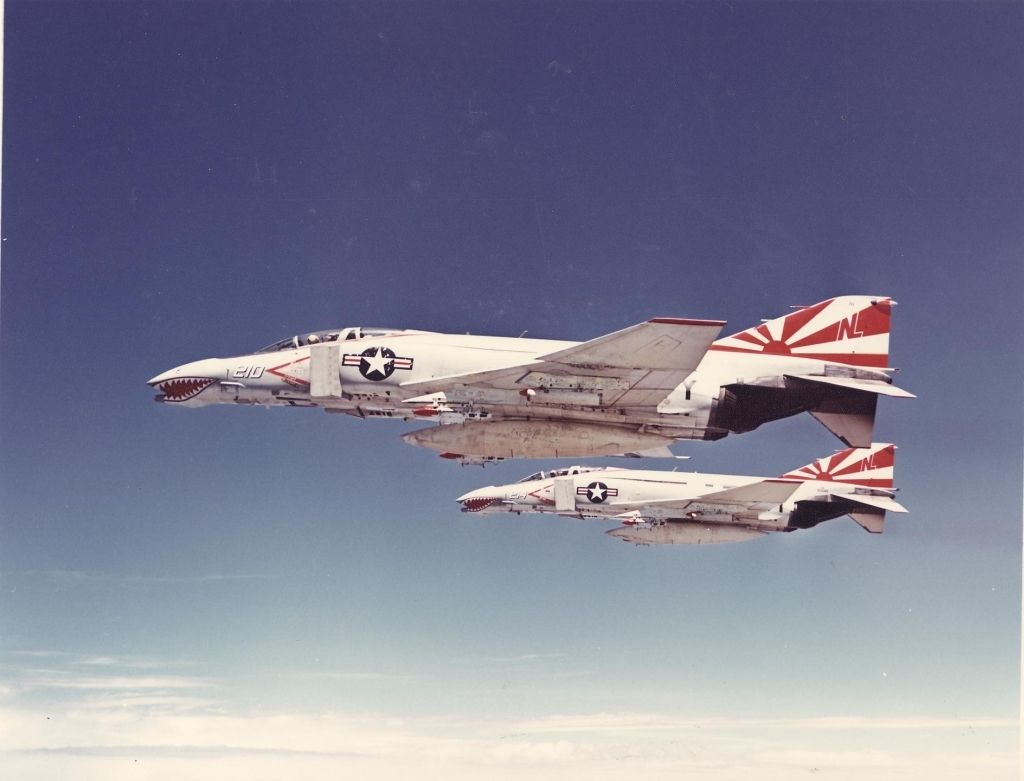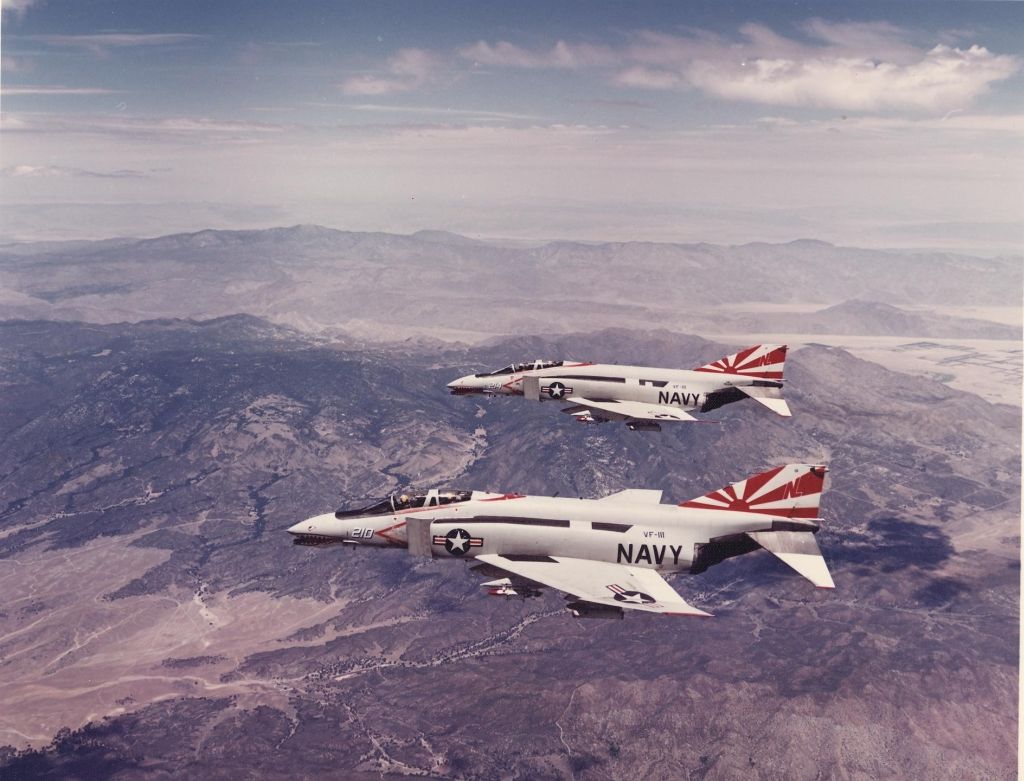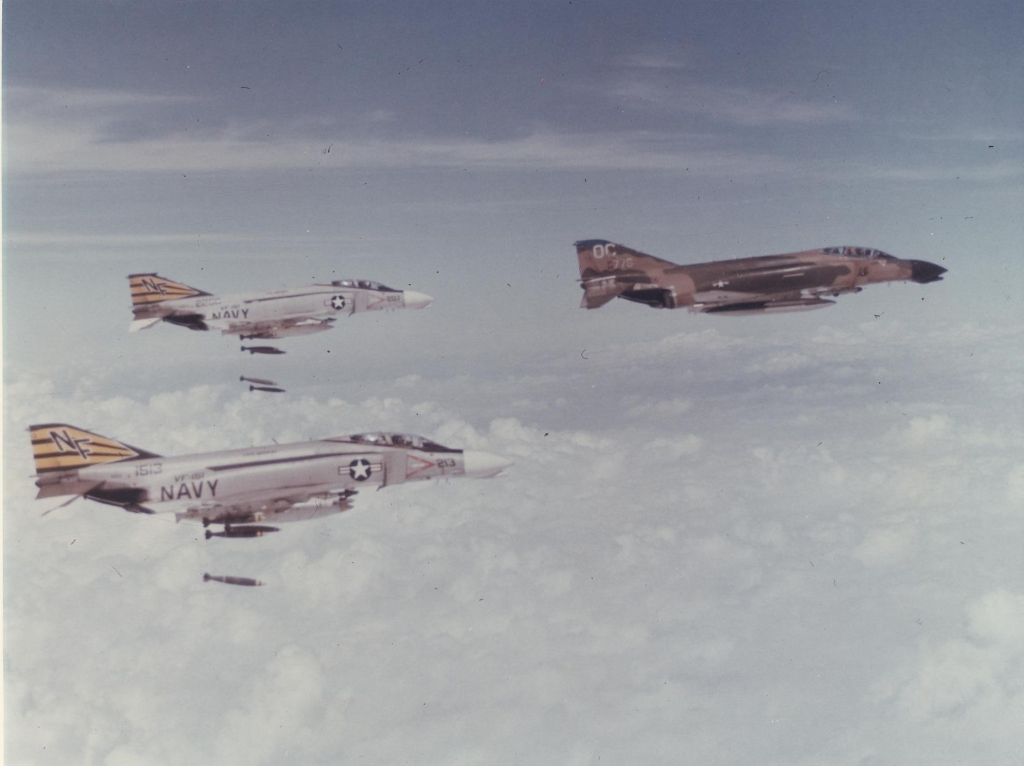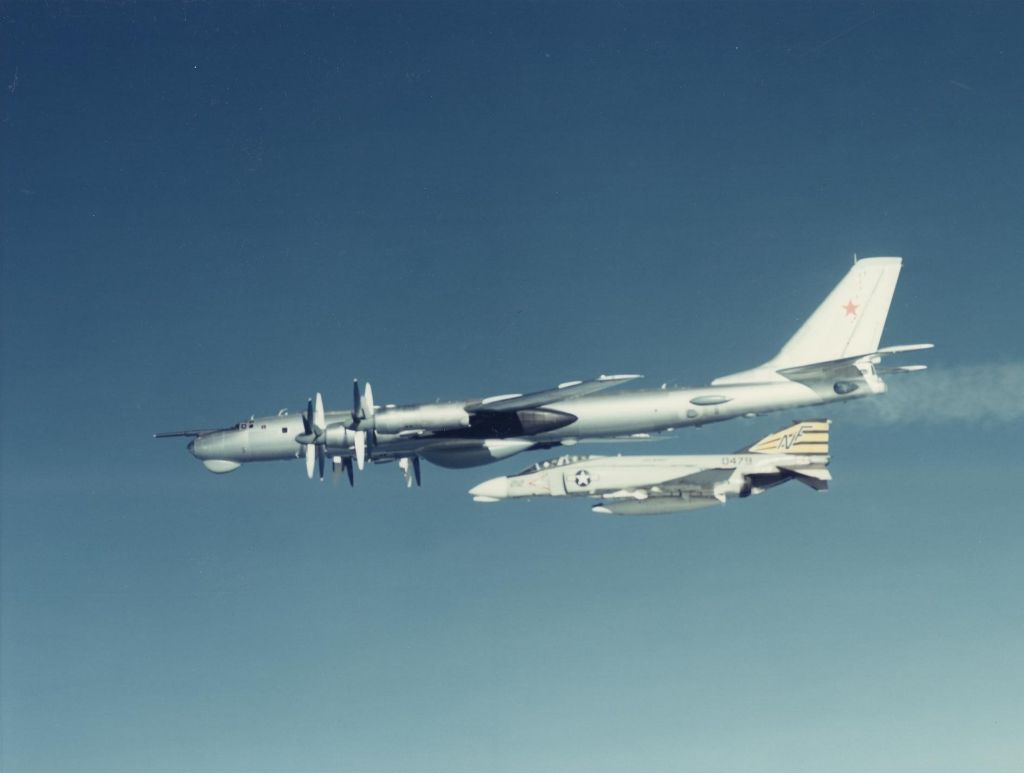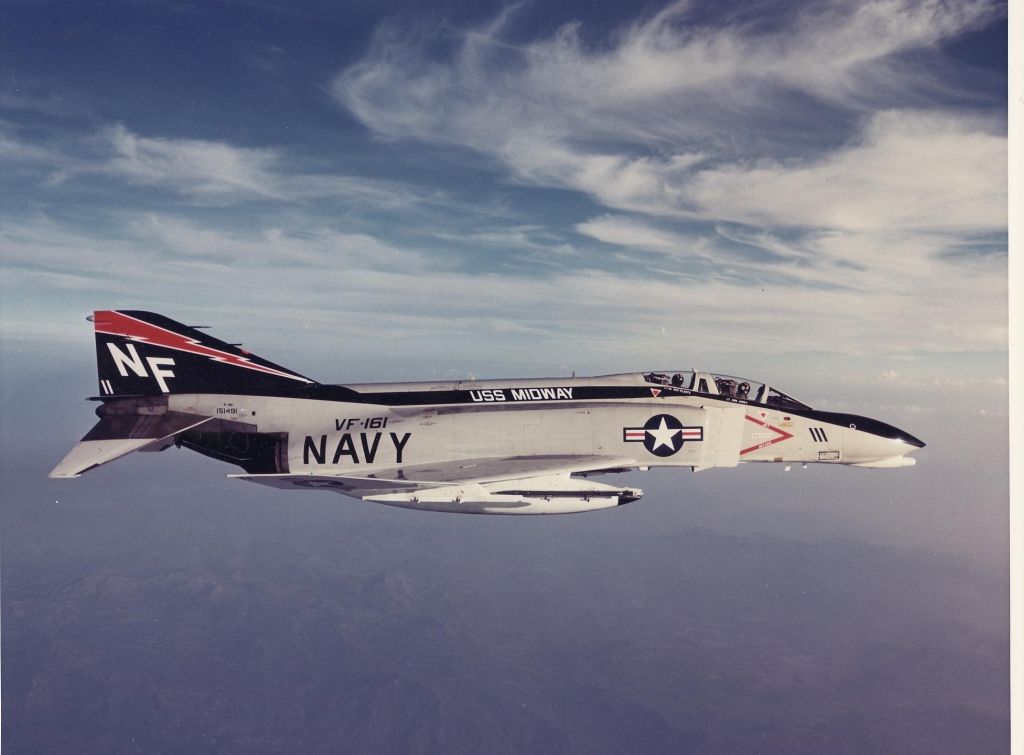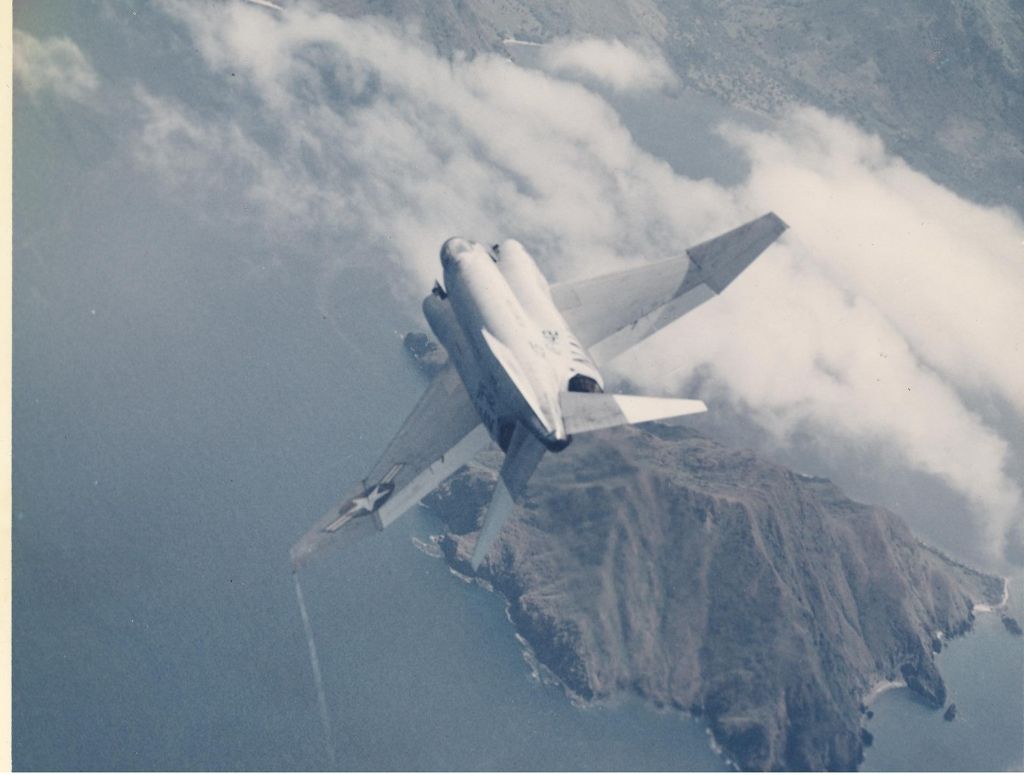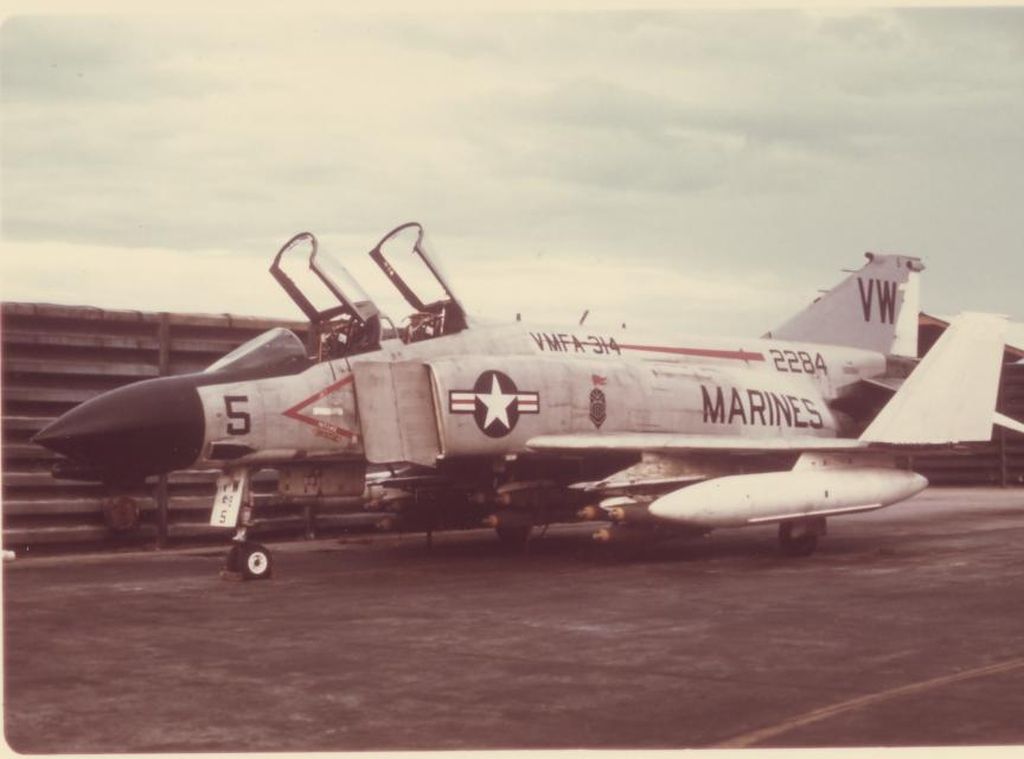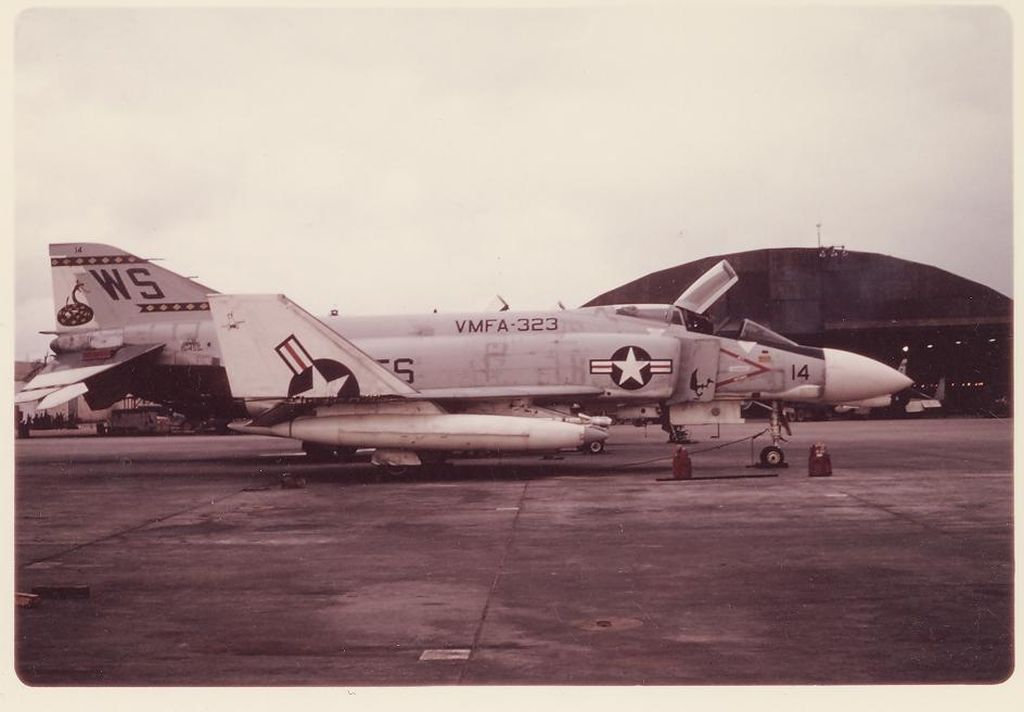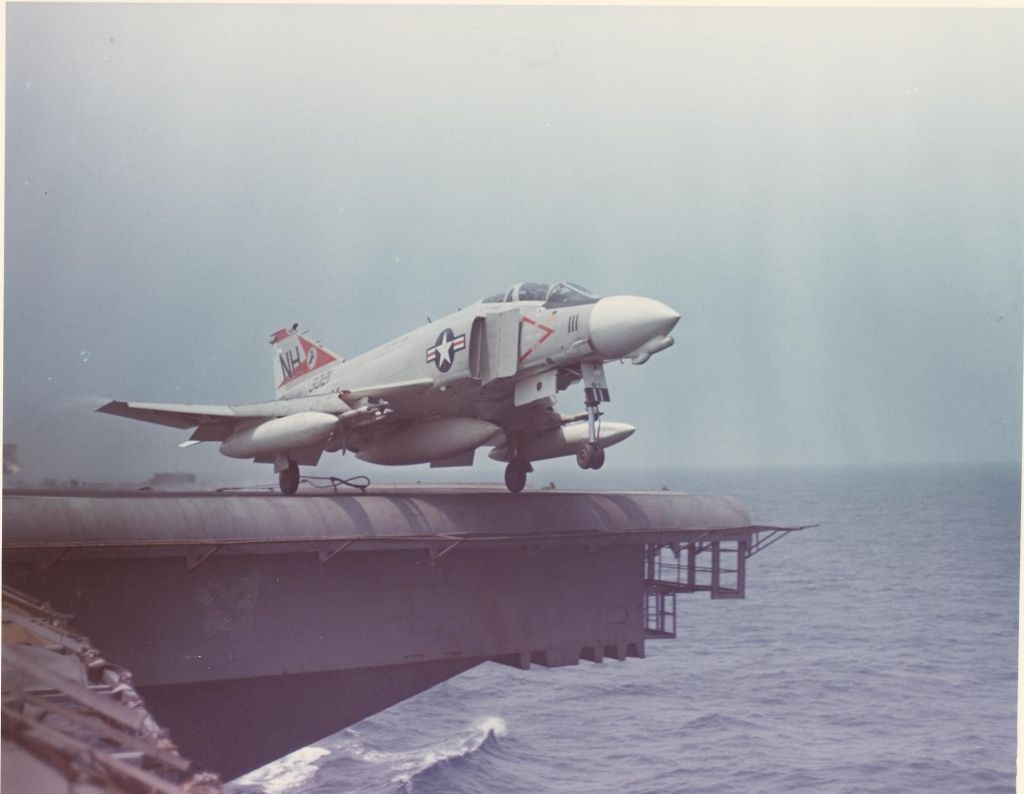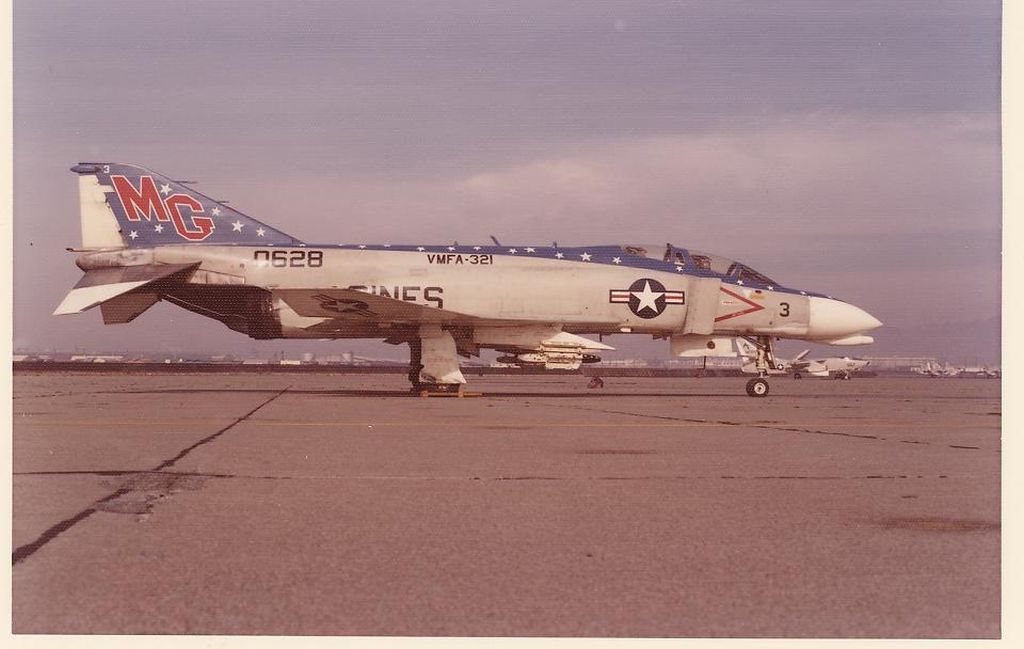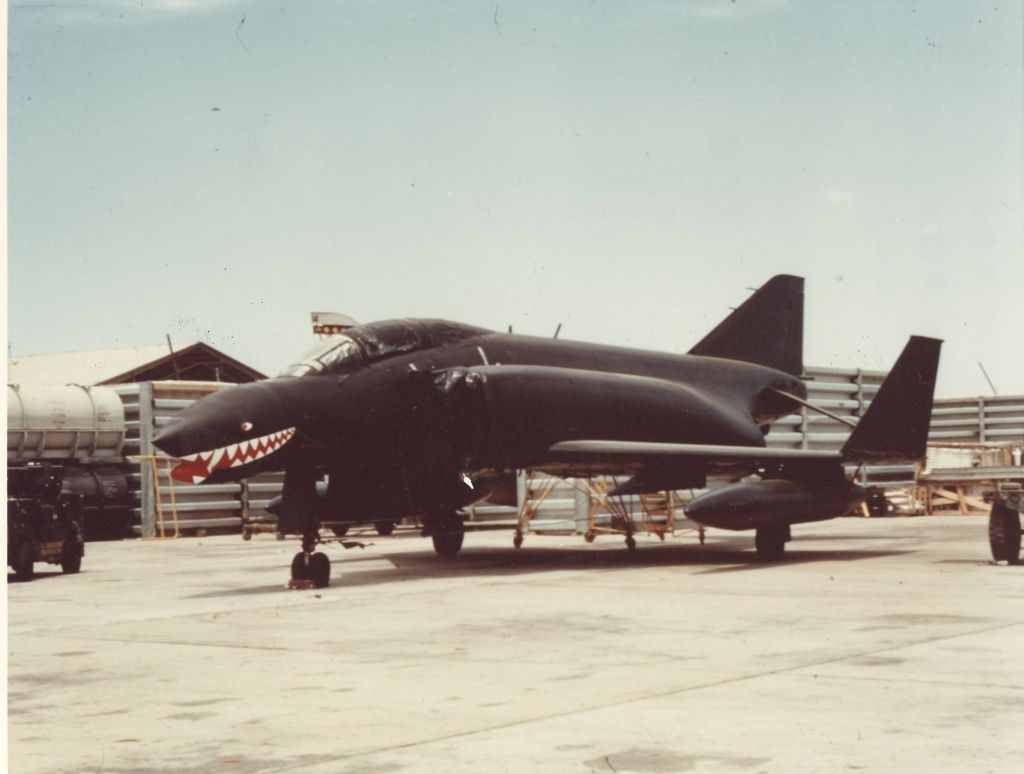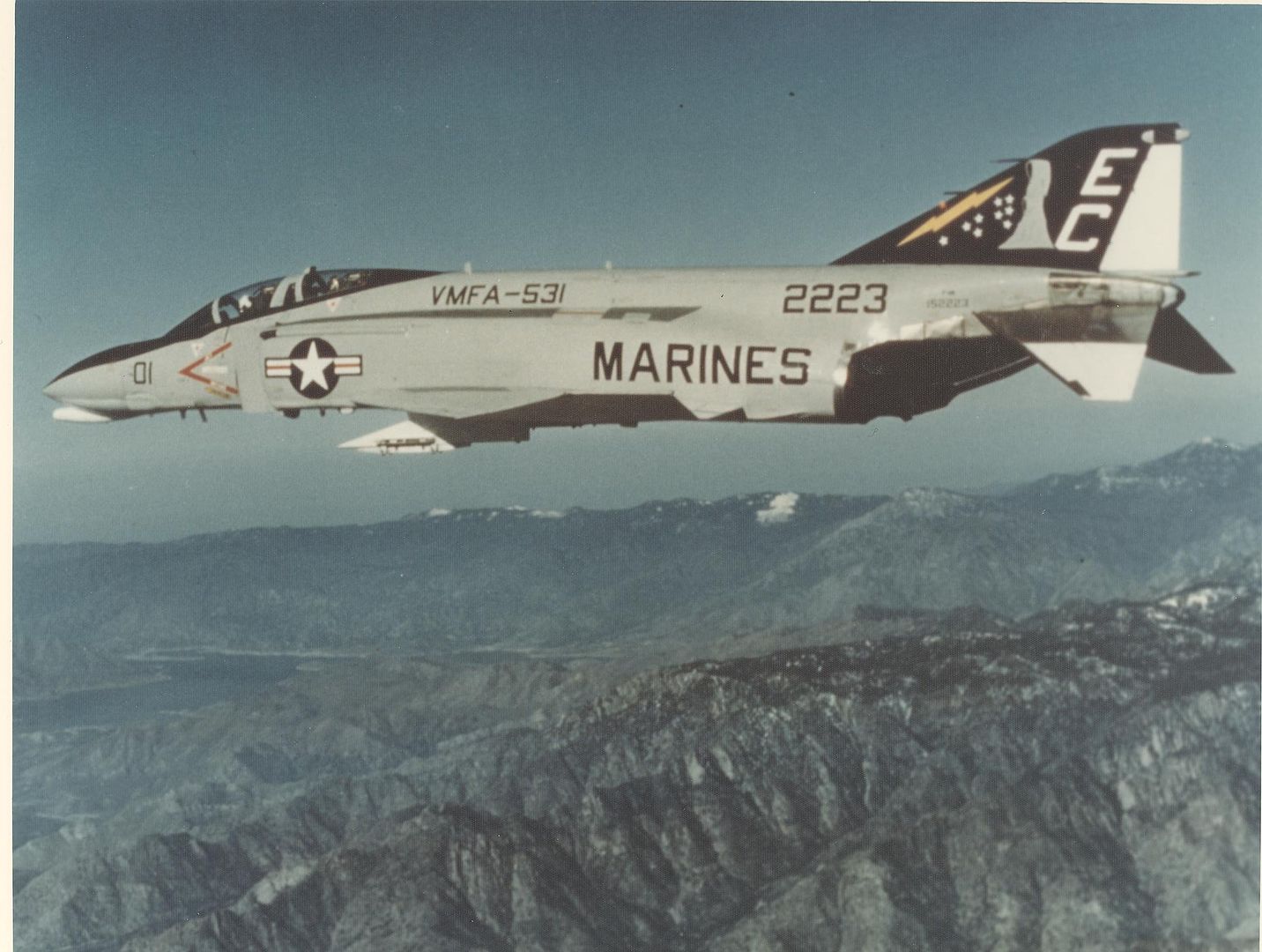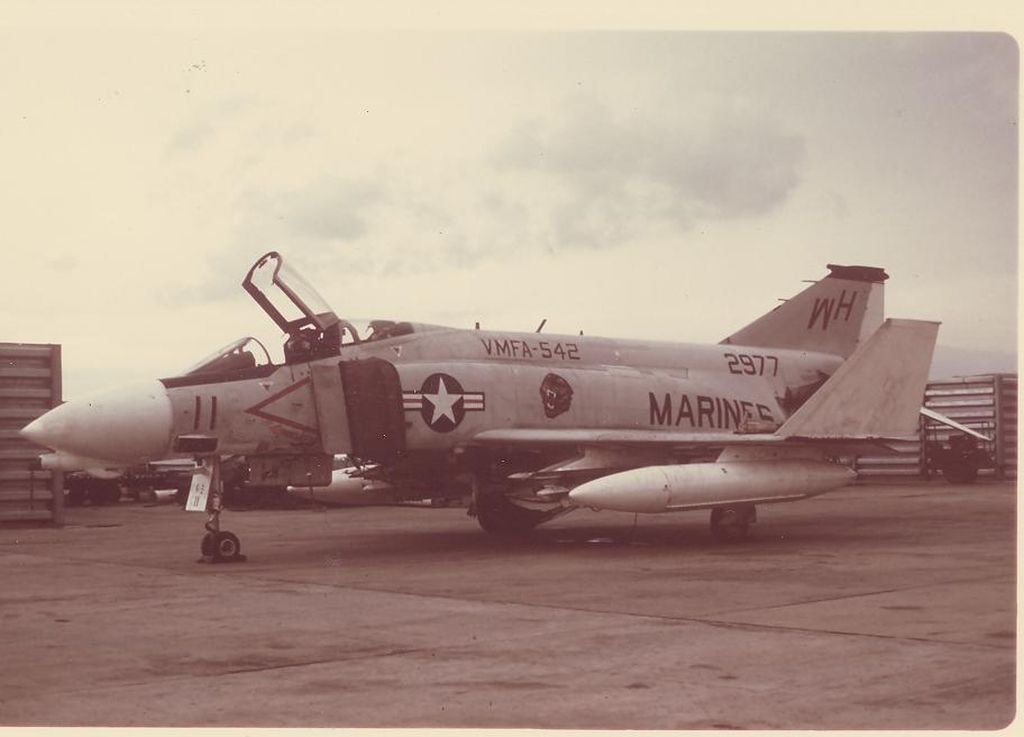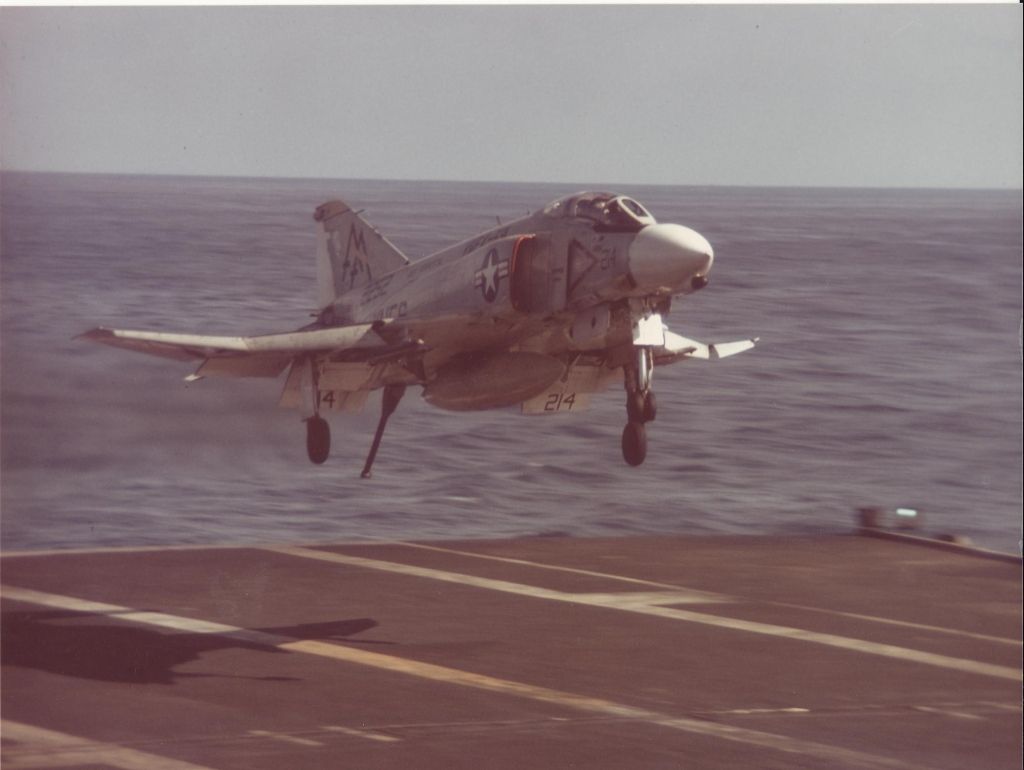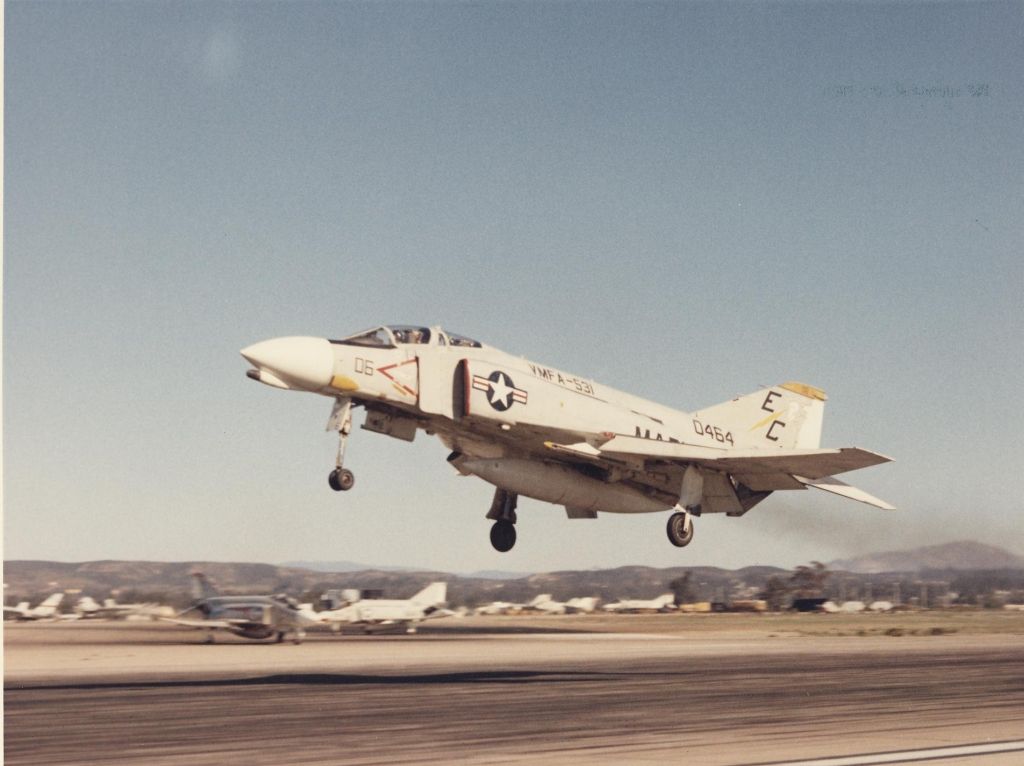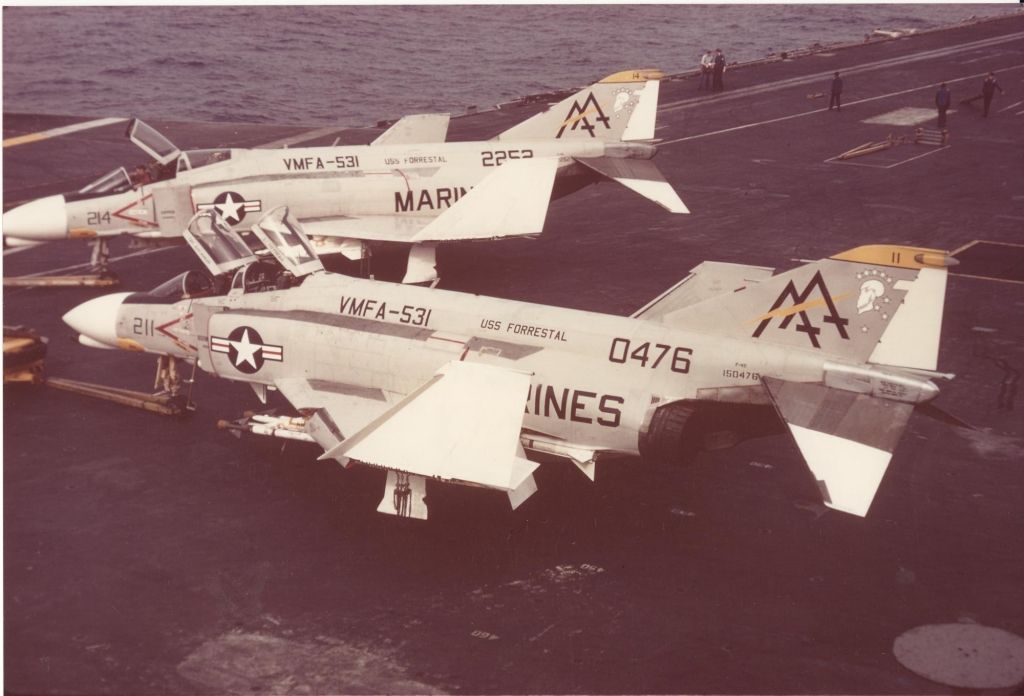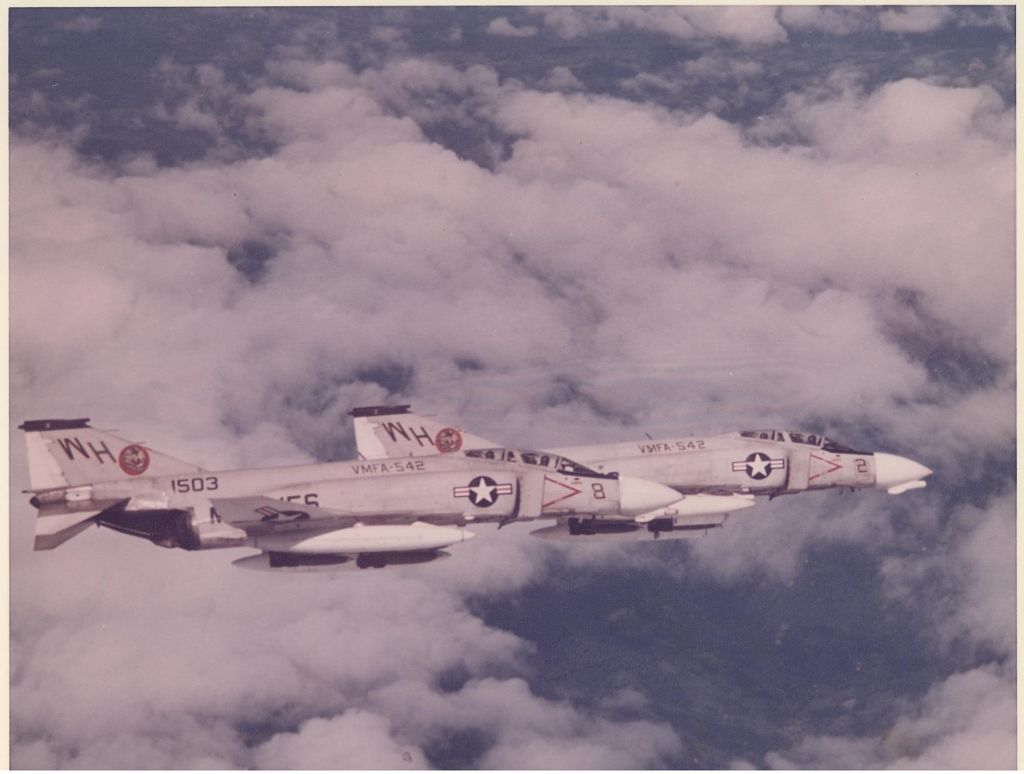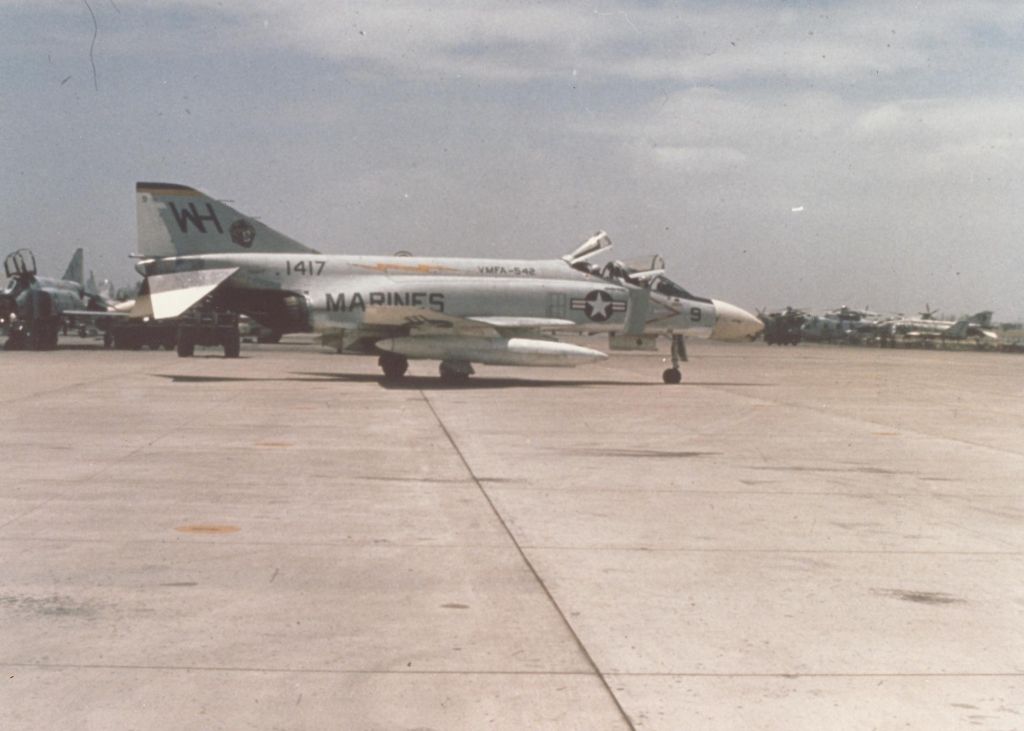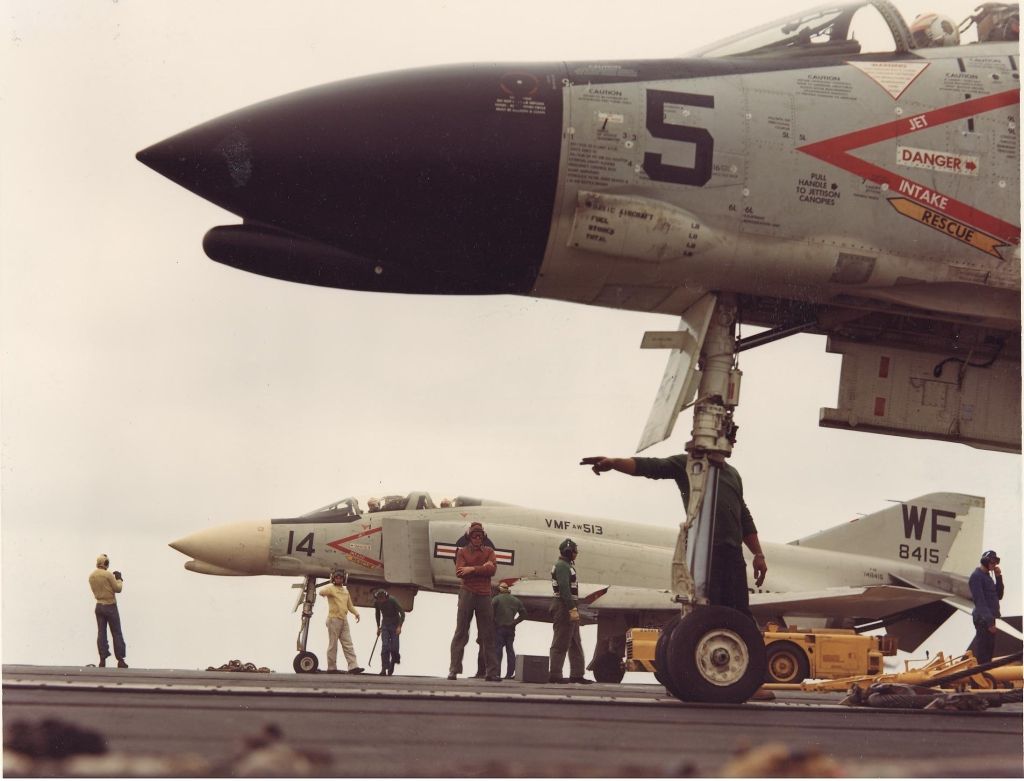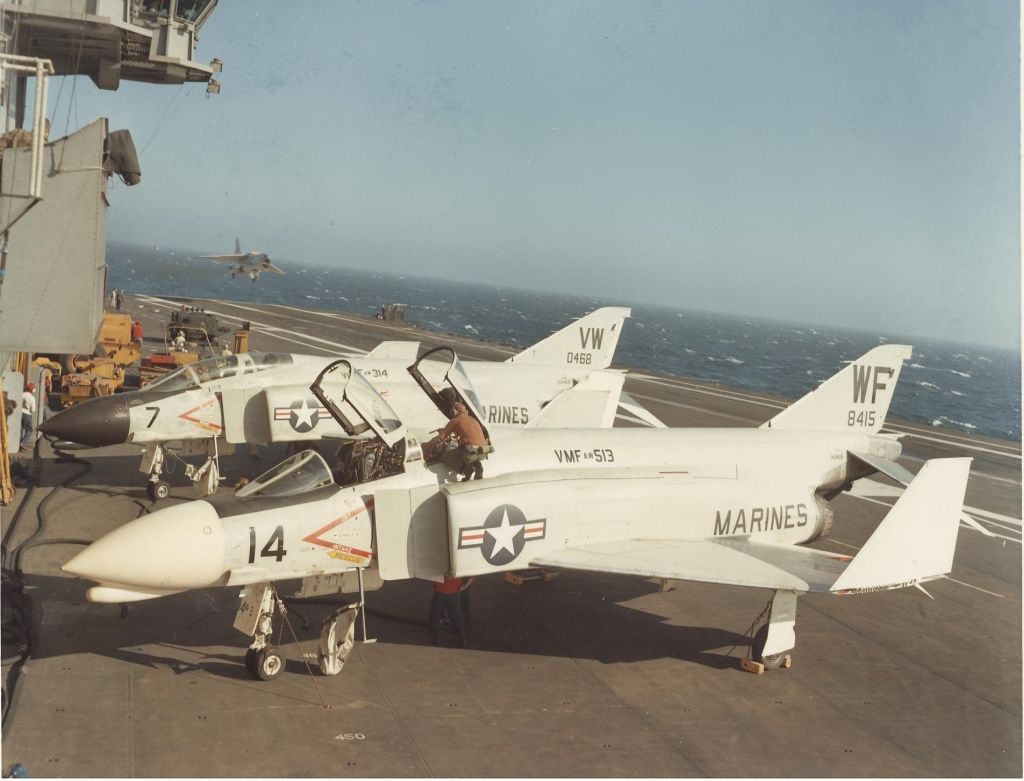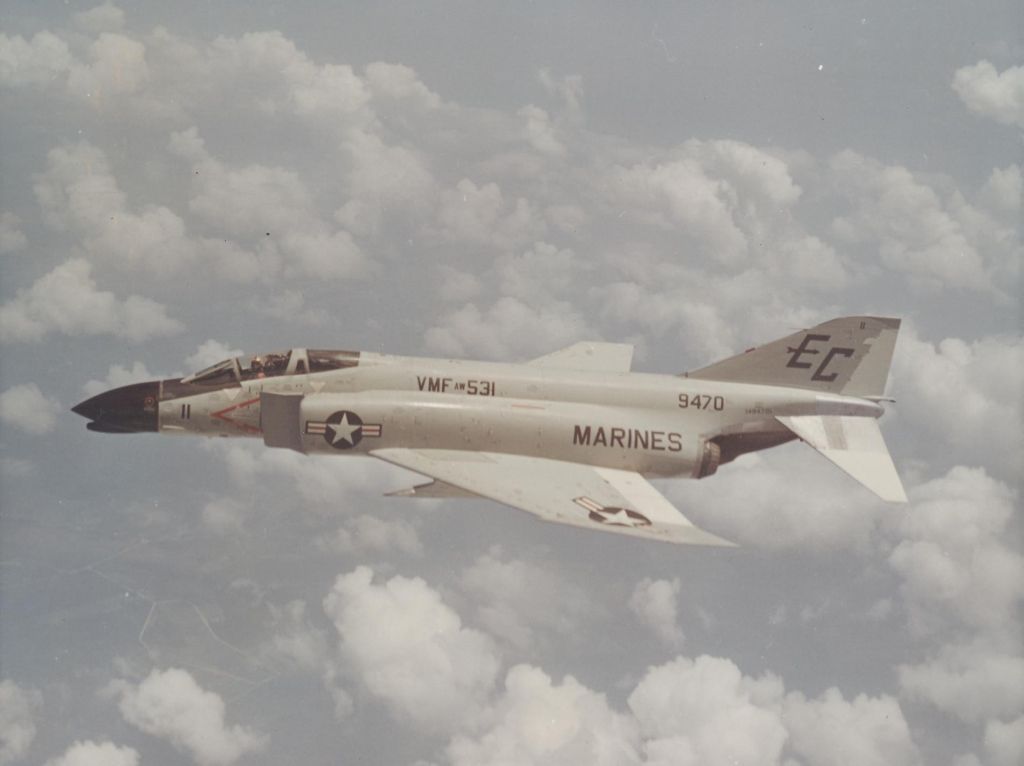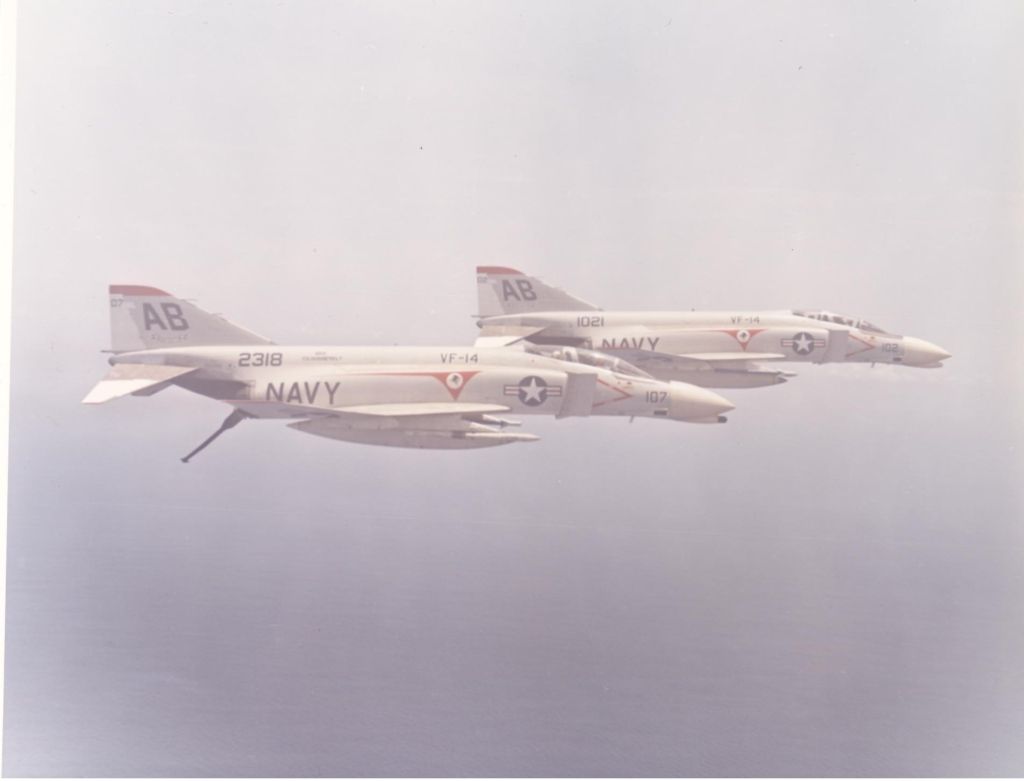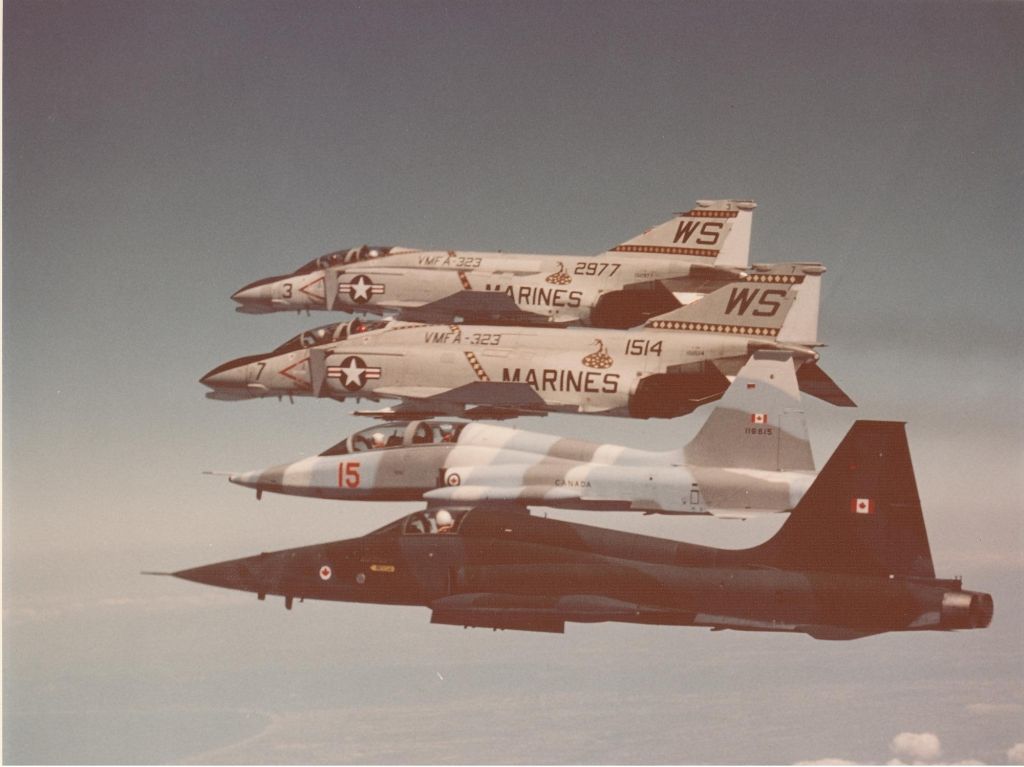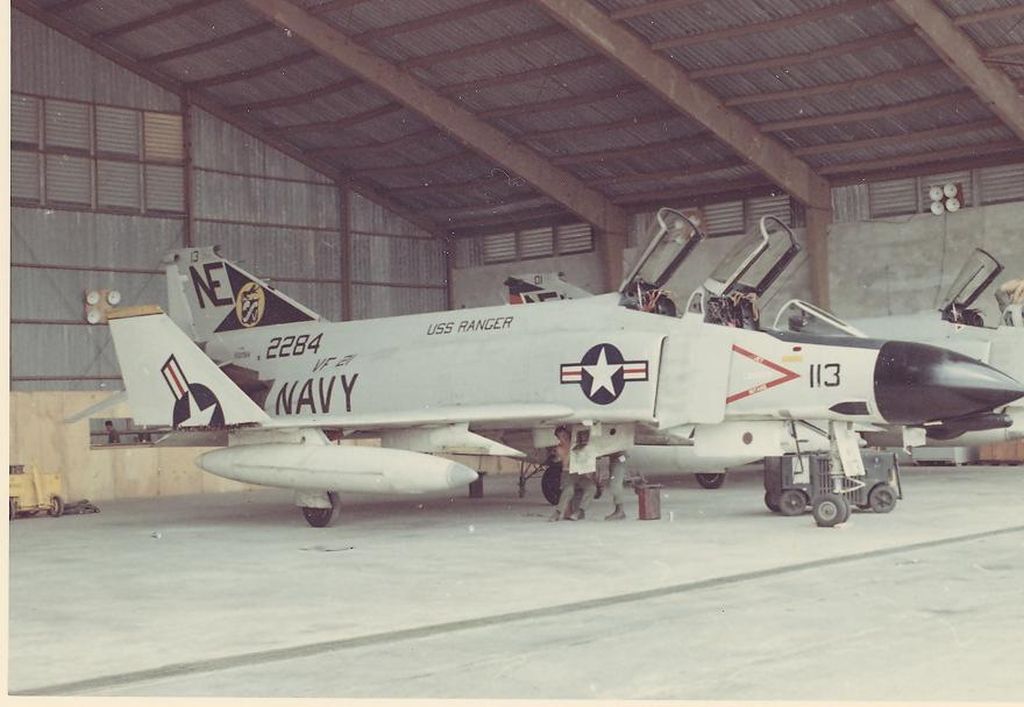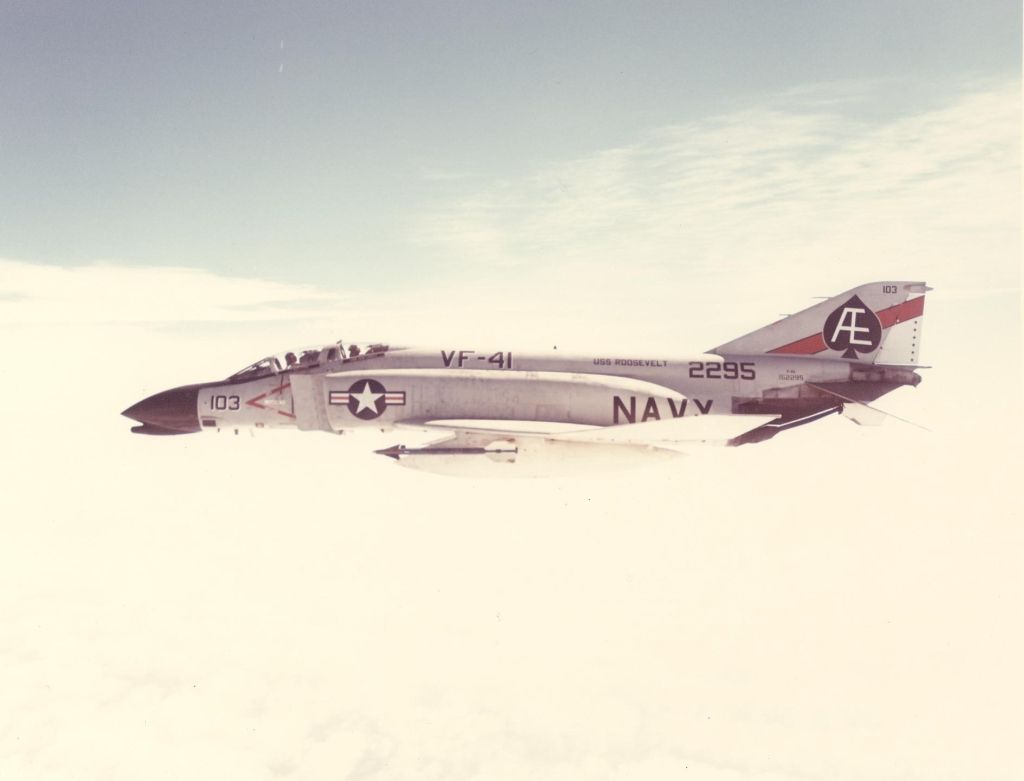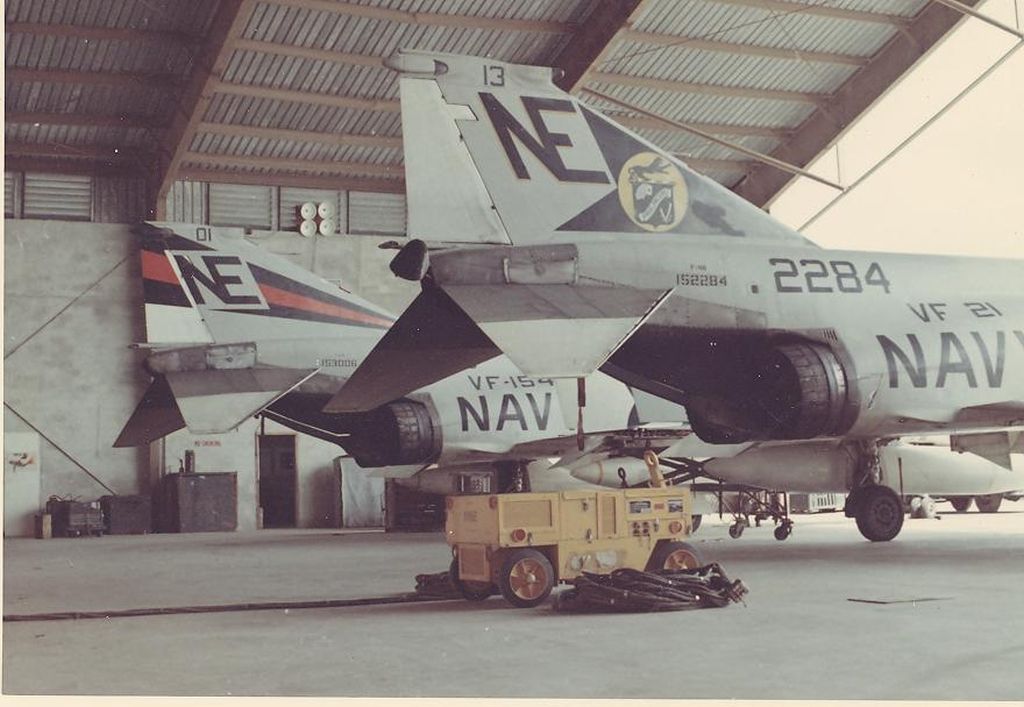Forums
- Forums
- Duggy's Reference Hangar
- USAAF / USN Library
- Phantom II
Phantom II
Post a reply
- Go to Previous topic
- Go to Next topic
- Go to Welcome
- Go to Introduce Yourself
- Go to General Discussion
- Go to Screenshots, Images and Videos
- Go to Off topic
- Go to Works in Progress
- Go to Skinning Tips / Tutorials
- Go to Skin Requests
- Go to IJAAF Library
- Go to Luftwaffe Library
- Go to RAF Library
- Go to USAAF / USN Library
- Go to Misc Library
- Go to The Ops Room
- Go to Made in Germany
- Go to Campaigns and Missions
- Go to Works in Progress
- Go to Juri's Air-Raid Shelter
- Go to Campaigns and Missions
- Go to Works in Progress
- Go to Skinpacks
- Go to External Projects Discussion
- Go to Books & Resources
-
12 years agoSat Oct 12 2013, 02:12am
 Main AdminText By Greg Goebal as always thanks.
Main AdminText By Greg Goebal as always thanks.
* The McDonnell Aircraft Company was founded in 1939 by James S. McDonnell. The company survived the war years through subcontract work for major aircraft manufacturers such as Grumman and Vought. The McDonnell firm did develop a prototype twin-piston-engine interceptor during the war, the XP-67 "Moonbat", but it did not reach production.
At the end of the war, the company produced the US Navy's (USN) first operational jet fighter, the "FH-1 Phantom", which performed its initial flight in 1945. Only 60 FH-1s were built, since its performance wasn't much better than that of current piston-engined fighters, but it did lead to the much more successful "F2H Banshee", a scaled-up and improved Phantom. First flight of the Banshee was in 1947, and 895 were built, with the type performing service in the Korean War. The Banshee was followed by a swept-wing fighter, the "F3H Demon", which performed its first flight in 1951, with a total of 521 built.
McDonnell was only getting warmed up. As a follow-up to the Demon, in the early 1950s the company began design studies for a more advanced naval fighter-bomber, with the effort conducted under a team led by Herman D. Barkey. Early concepts envisioned a single-engine aircraft with four 20 millimeter cannon. Since the Demon was the starting point for these designs, they were given company designations of "F3H-C", "F3H-E", and "F3H-G".
The F3H-C and F3H-E were single-seat, single-engine aircraft, with the F3H-C very much resembling an improved Demon, while the F3H-E was more of a departure. The F3H-G was much more interesting than either, at least with the benefit of hindsight. The F3H-G was a single-seat twin-engine aircraft, to be powered by twin Wright J65 turbojets, license-built British Rolls-Royce Sapphire axial-flow engines. The F3H-G incorporated features from the Demon, as well as the McDonnell F-101 Voodoo, a twin-engine interceptor the company was developing for the US Air Force (USAF).
Although the "F" in the F3H-G designation indicated a fighter, the designers saw it as a multirole combat aircraft that could be adapted to different roles by splicing on a new forward fuselage. Possible variants included:
An interceptor armed with 5 centimeter (2 inch) unguided "folding fin air rockets (FFARs)".
Another interceptor, armed with six of the new Sparrow semi-active radar guided air-to-air missiles (AAMs).
Different attack variants, with nine stores pylons and various fixed armament fits, such as four 20-millimeter cannon or racks of FFARs.
A reconnaissance variant.
An electronic countermeasures variant that would be able to detect, target, and attack adversary radar sites.
Since aircraft were becoming increasingly complicated during the 1950s, McDonnell also proposed a tandem two-seat version of the F3H-G, with the "back-seater" taking care of aircraft's electronic systems.
* McDonnell passed the F3H-G design on to the Navy Bureau of Aeronautics (BuAer) in the fall of 1953, only to have it rejected in a few weeks. One of the reasons for the quick rejection was that the Navy had just signed contracts for the Vought F8U-1 Crusader as its first supersonic fighter and felt it met the service's immediate needs. However, the Navy encouraged McDonnell to continue work on the concept, and the design team went on to build a mockup of the F3H-G, completing it in early 1954. Senior Navy officials were invited to Saint Louis to look it over.
The F3H-G concept then began to converge with reality. In mid-1954, BuAer issued a request for a new all-weather fighter. McDonnell submitted both the single-engine F3H-E and the twin-engine F3H-G proposals, with Grumman and North American submitting proposals as well. The BuAer selected the F3H-G, issuing a "letter of intent" for two prototypes of the type, now to be designated "AH-1", on 18 October 1954.
That was very encouraging, but there was also less to it than met the eye. The Navy was still considering precise needs, and in the absence of specific requirements there was no way to move on to "cutting metal". However, the brass were definitely giving the matter serious thought, and over the following months clarified their needs. In the end, what they wanted was a carrier-based fleet defense interceptor that could patrol at a combat radius of 465 kilometers (250 nautical miles) for over two hours. As the machine was clearly no longer an "attack" aircraft, the designation was changed to "F4H-1".
Although the McDonnell mock-up had featured four 20 millimeter cannon, the Navy wanted the F4H-1 to be armed only with missiles, specifically four of the new Sparrow AAMs. This was a great age of optimism in the whizzy new missiles, and gun armament was for the moment seen as obsolete. The decision to delete the cannon would come back to haunt the Navy and other F4H users.
McDonnell engineers tweaked their concepts, and within weeks gave the Navy a modification of the original F3H-G design. The new aircraft would be armed with four Sparrows, mounted on extensible racks under the fuselage. The designers also decided to abandon the Wright J65 engine, which would have given the F4H-1 a top speed of Mach 1.5, and instead adopt the new General Electric J79-GE-2 turbojet, then the state-of-the-art in jet engine design. Two J79s would give the F4H-1 a top speed of Mach 2.
McDonnell proposed both single-seat and two-seat versions of the F4H-1; the Navy promptly selected the two-seat variant. One final change was to delete the stores pylons, except for a centerline pylon for a drop tank, with a tank eventually designed with a capacity of 2,270 liters (600 US gallons). A formal contract was signed on 25 June 1955 for two "XF4H-1" prototypes and five "YF4H-1" pre-production aircraft.
Below F3H-GH mockup at McDonnell.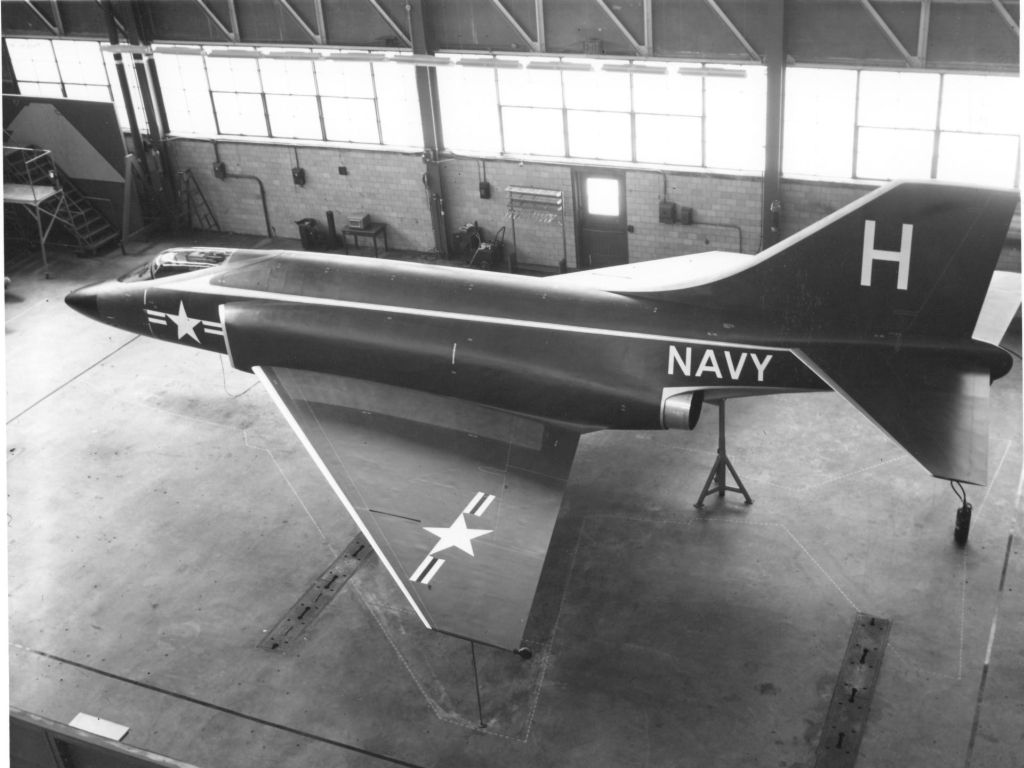
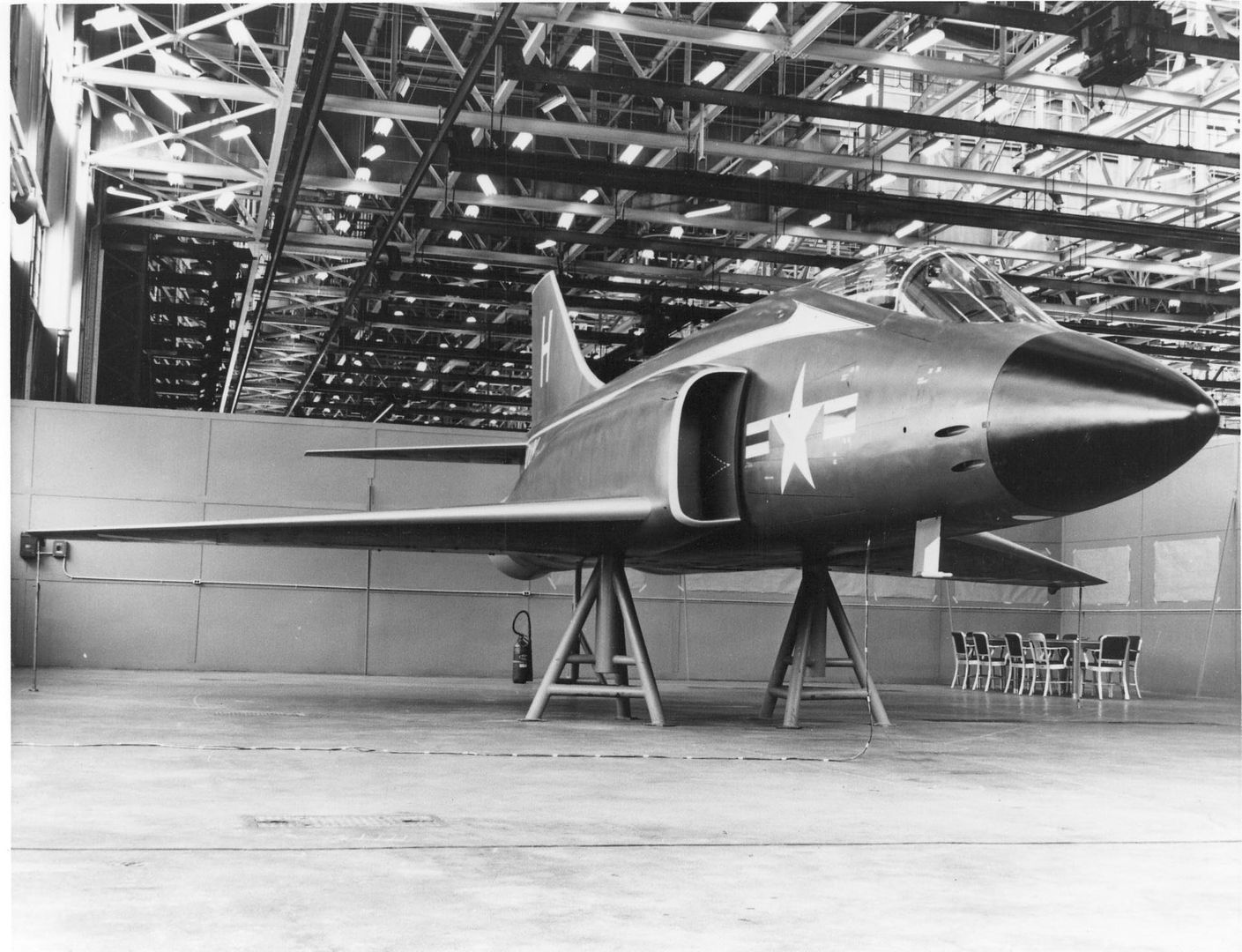
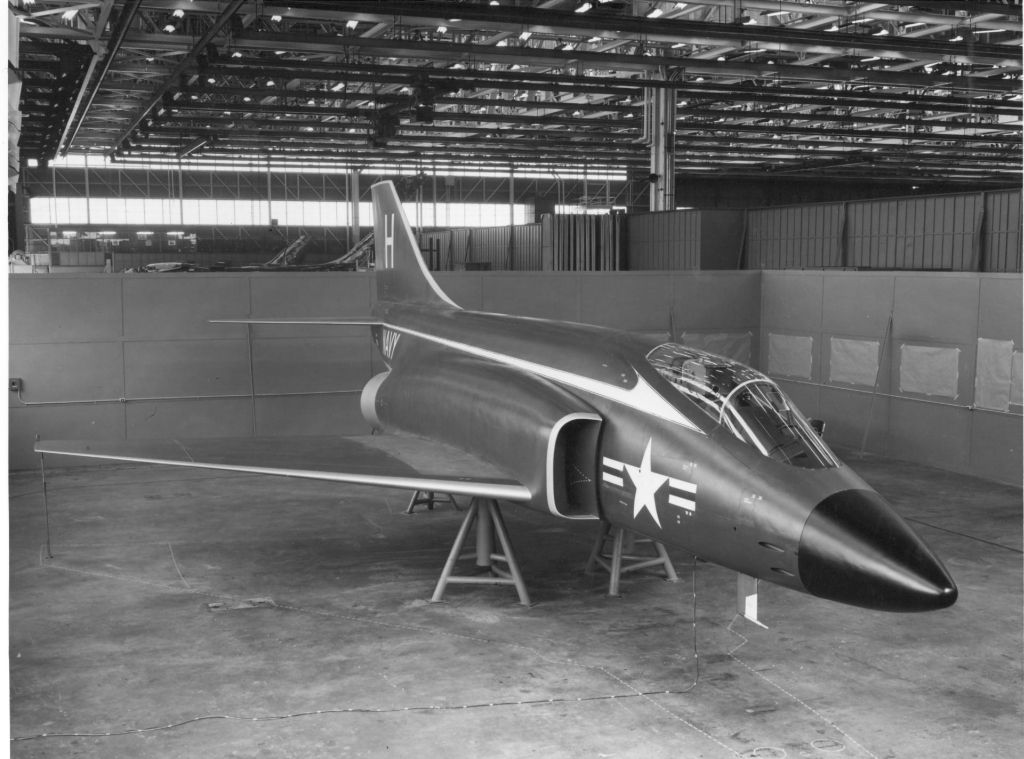
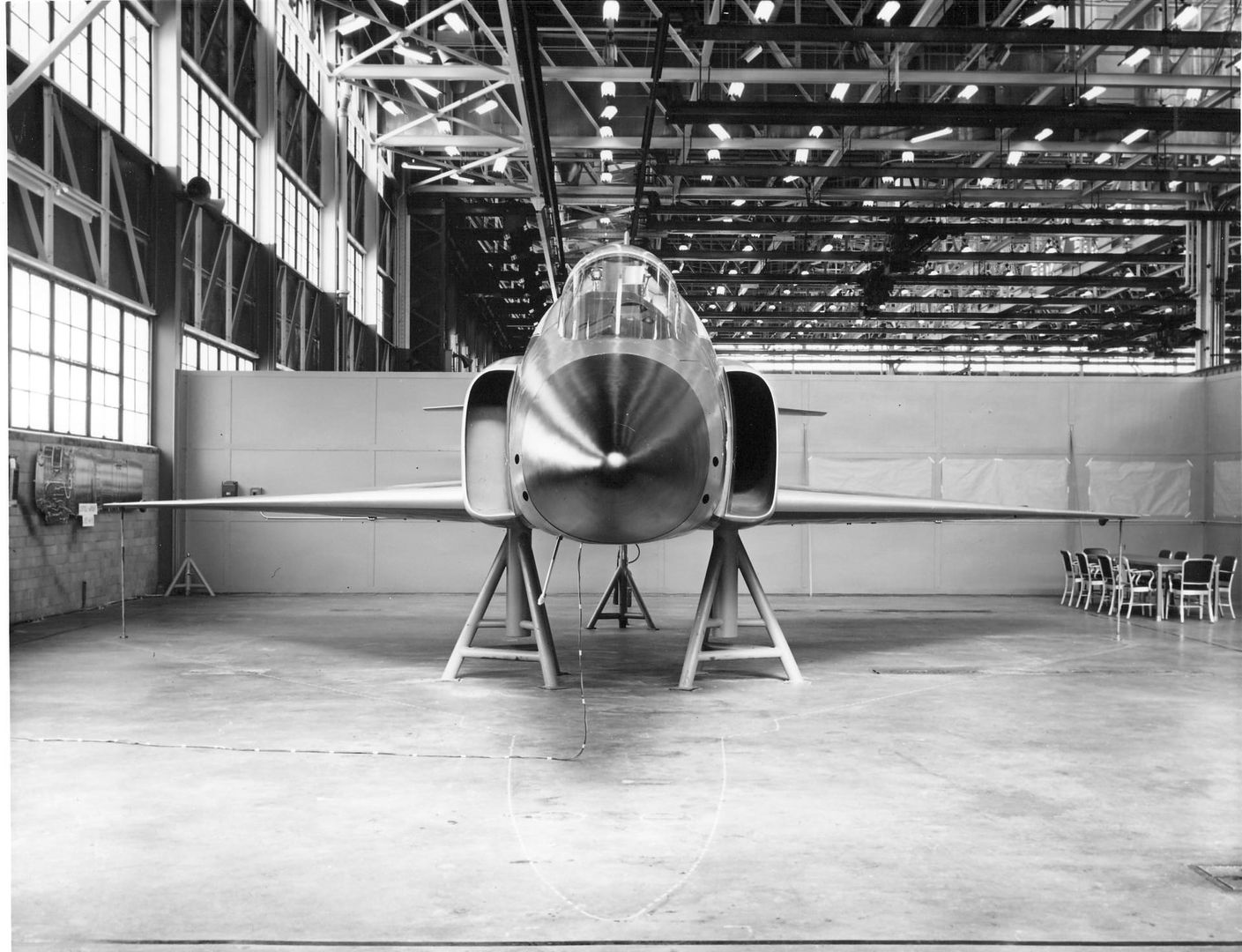
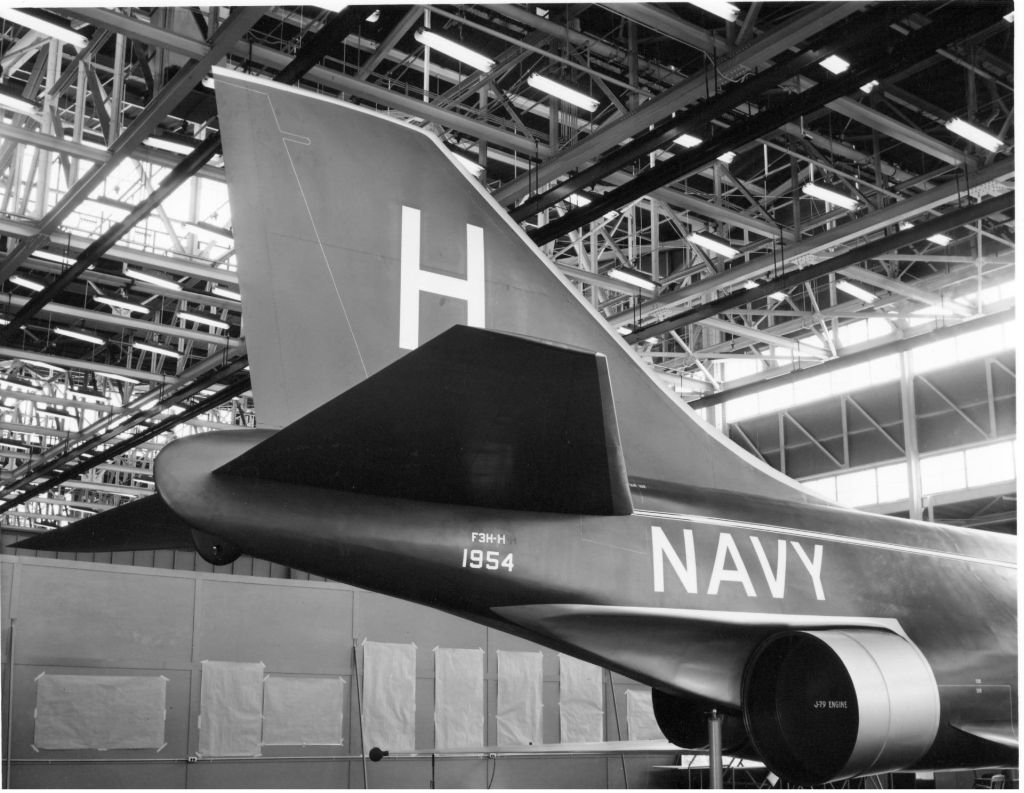
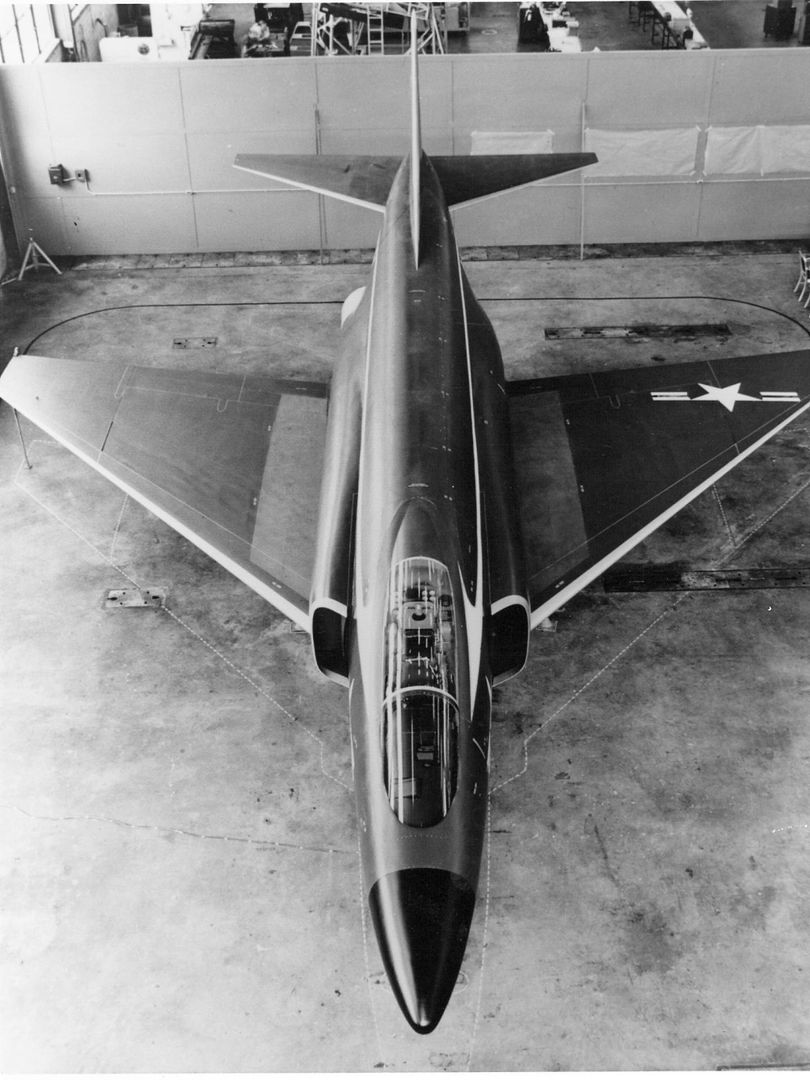
Regards Duggy
More to follow
-
12 years agoMon Feb 15 2016, 12:10am
 Main AdminXF4H-1 / EARLY PHANTOM PRODUCTION
Main AdminXF4H-1 / EARLY PHANTOM PRODUCTION
The first XF4H-1 was rolled out on 8 May 1958. Its initial flight was on 27 May 1958, with Robert C. Little, McDonnell's chief test pilot, at the controls. There were minor problems with the first few flights, but in a few days the aircraft was flying well.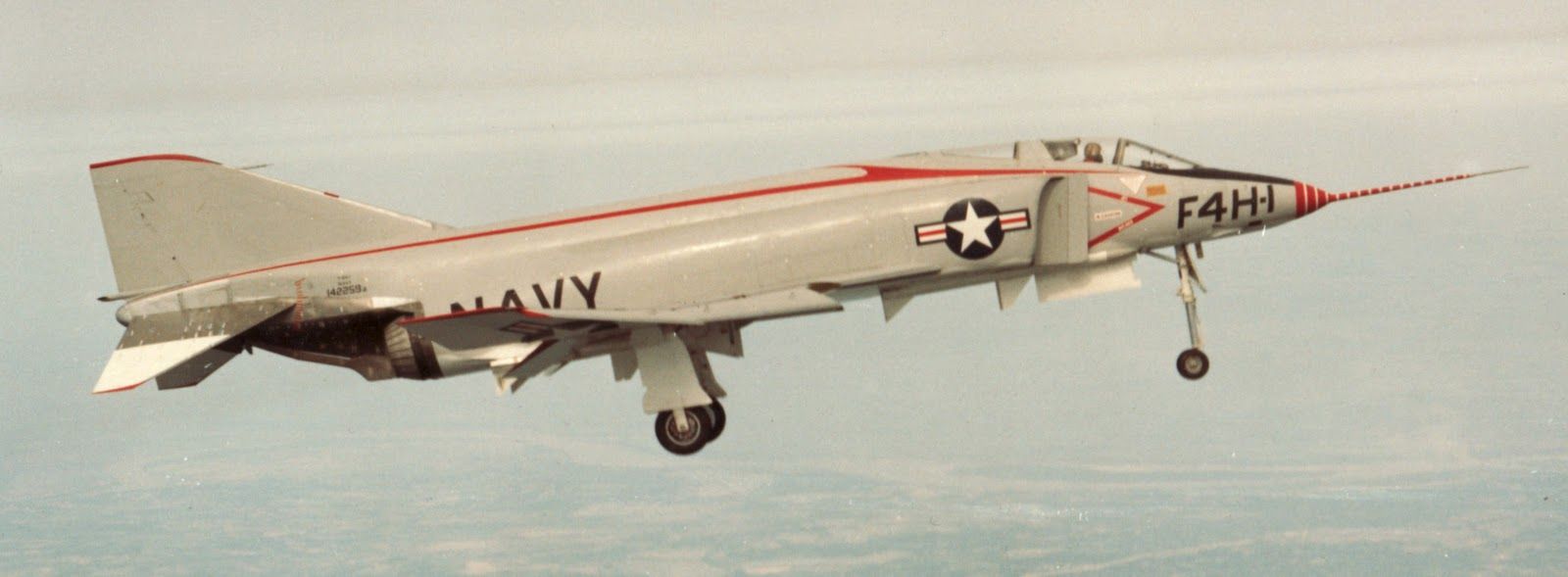
By this time, the XF4H-1 had competition. The Navy wanted to hedge bets on their new fleet-defense interceptor, and so the Vought company had submitted a rival design, the XF8U-3 Crusader III, a fast and powerful aircraft that amounted to a bigger and badder descendant of Vought's F8U-1 Crusader, then going into Navy service. There was a competitive fly-off between the XF4H-1 and the XF8U-3 in the fall of 1958. The McDonnell design was selected as the winner on 17 December 1958. Although the Crusader III was an impressive aircraft and might have been capable of Mach 3, it was a single-seat, single-engine aircraft. The Navy felt, correctly, that a back-seater was required to handle the electronic systems of a modern fighter, and that twin engines offered greater survivability.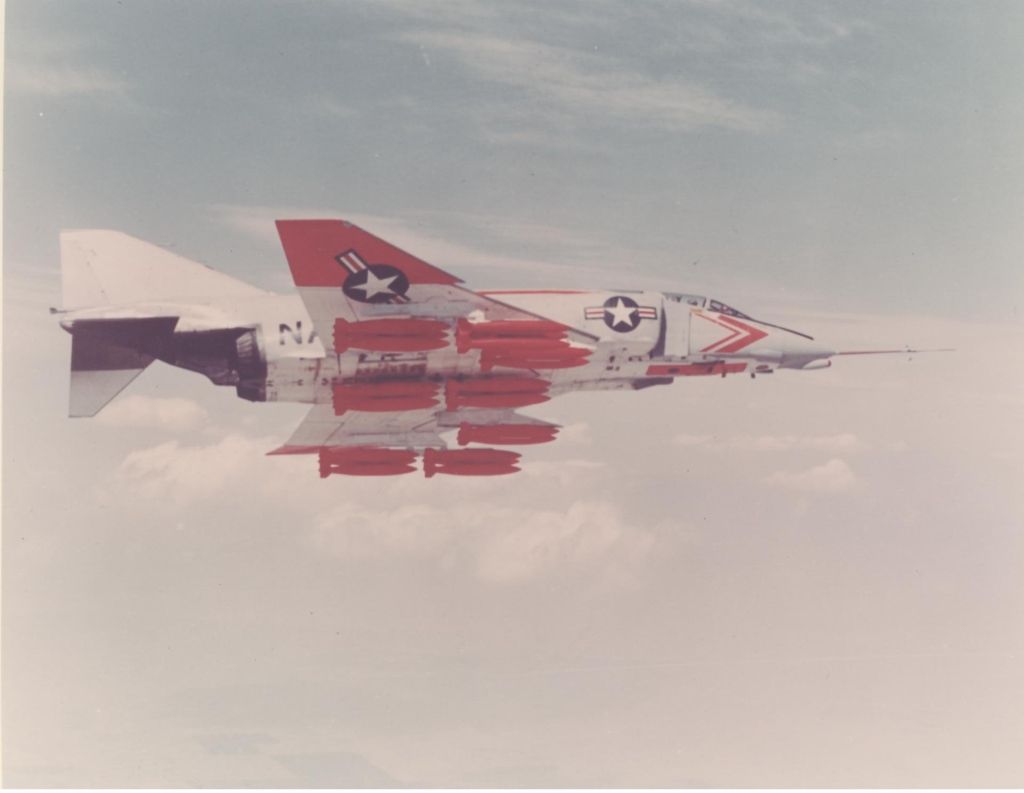
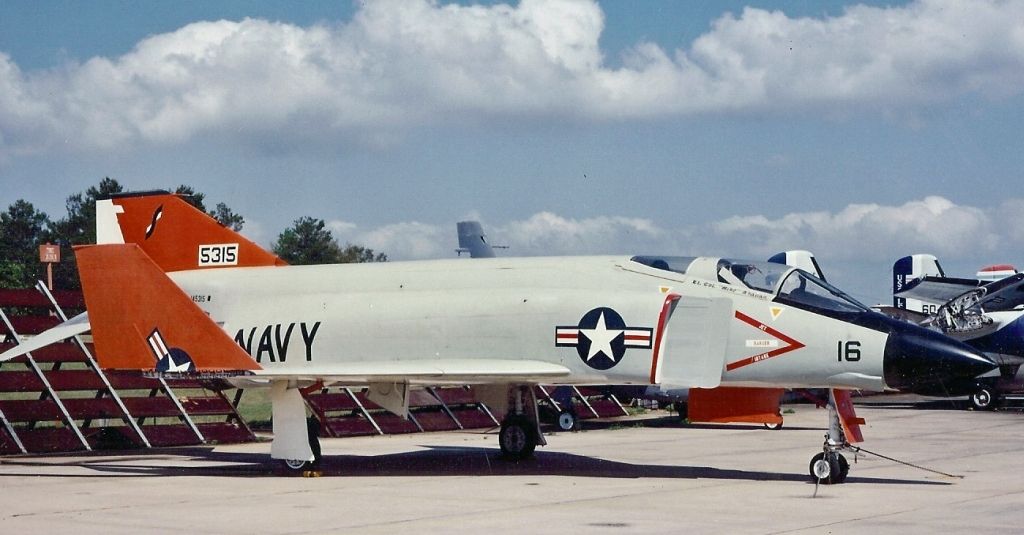
By the spring of 1959, McDonnell had orders for 40 more F4H-1s, in addition to the original order for seven, and by summer eight machines were flying. On 3 July 1959, the McDonnell Corporation celebrated its 20th anniversary, and the F4H-1 was formally given the name "Phantom II", in honor of the FH-1 Phantom. However, the FH-1 hadn't been produced in quantity, didn't have a long service life, and had been largely forgotten, so the "Phantom II" quickly became the "Phantom".
* The Phantom began carrier trials began in the fall of 1959, with the first carrier take-off performed on 15 February 1960. In the meantime, while the type was being qualified for operational service, it was also breaking speed and altitude records.
The second XF4H-1 set the first record, reaching an altitude of 30,048 meters (98,557 feet) with a "zoom climb" under Operation TOP FLIGHT on 6 December 1959. Similar exercises were conducted over the next 28 months. Highlights included:
On December 6, 1959, while flying a YF4H-1 Phantom II, Commander Lawrence E, Flint, Jr., established an absolute manned-flight altitude record of 98,556 feet as part of Project Top Flight. This mark eclipsed by nearly 4,000 ft. the record previously held by a Soviet aircraft.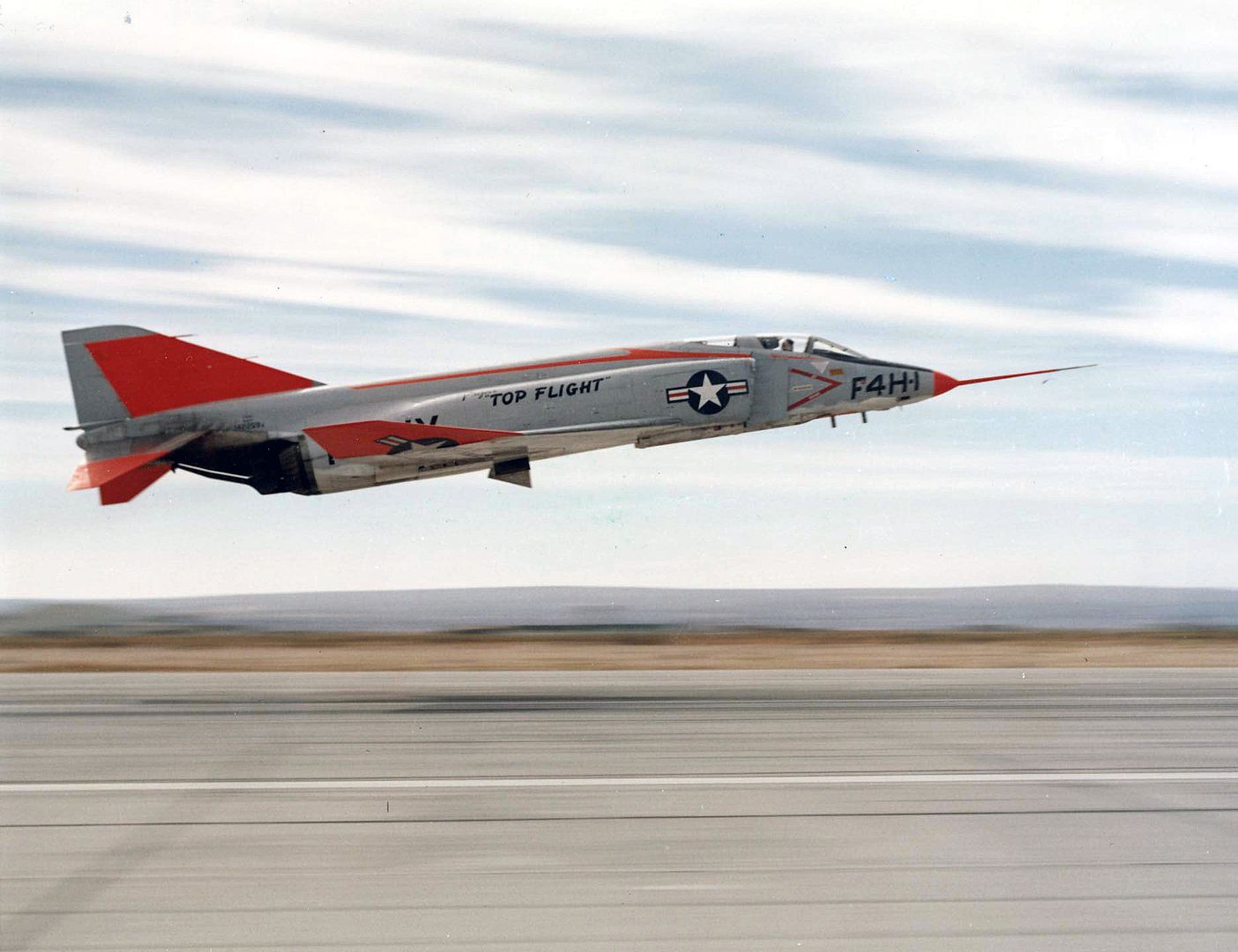
Under Operation LANA, on 24 May 1961 three Phantoms flew across the US in less than three hours, even with three tanker refuelings. The fastest of the three Phantoms, piloted by Navy Lieutenant R.F. Gordon with Lieutenant JG B.R. Young in the back seat, averaged 1,405 KPH (873 MPH). "LANA" was a tortured acronym for "50th Anniversary of Naval Aviation", the "L" standing for the Roman numeral for "50".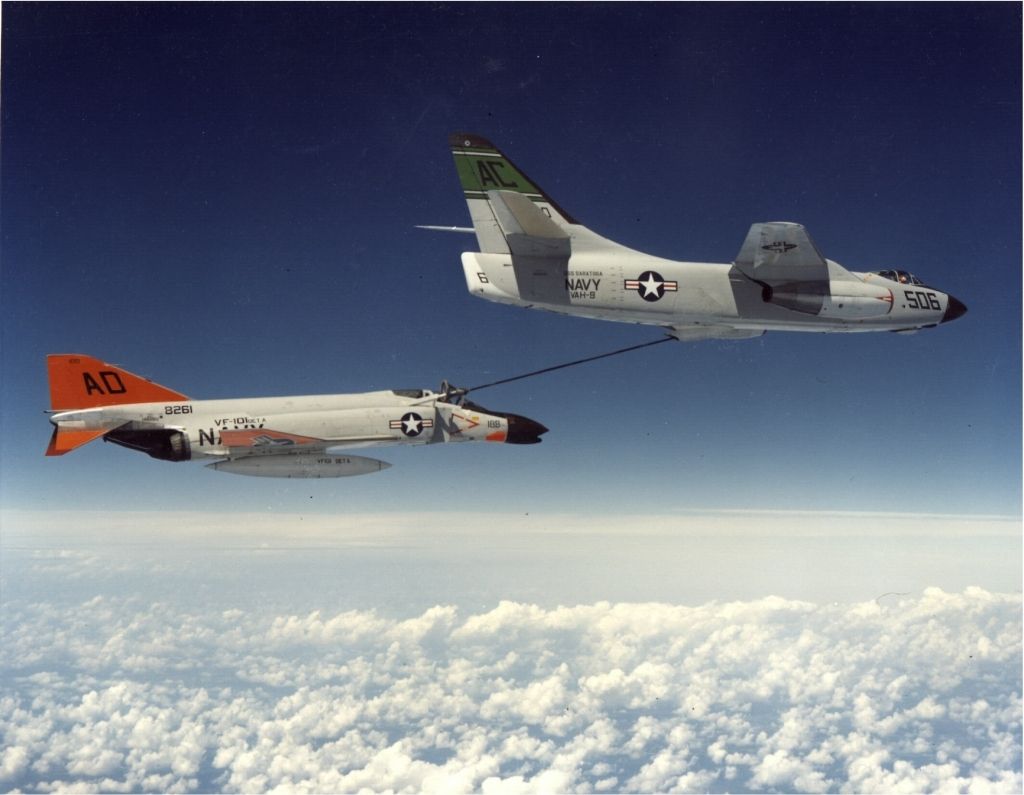
On 28 August 1961, under Operation SAGEBURNER, a Phantom piloted by Navy Lieutenant Huntington Hardisty, with Lieutenant Earl De Esch in the back seat, set a low-altitude speed record, flying at an average of 1,453 KPH (903 MPH) over a three kilometer (1.86 mile) course at White Sands Missile Range in New Mexico, at an altitude of no more than 40 meters (125 feet). An attempt to take the low-altitude record had been conducted a few months earlier, but had ended in tragedy on 18 May 1961 when the aircraft smashed into the desert, killing Navy Commander J.L. Felsman.
On 22 November 1961, under Operation SKYBURNER, a Phantom piloted by US Marine Corps (USMC) Lieutenant Colonel Bob Robinson set a world speed record of 2,585 KPH (1,606 MPH). Robinson's Phantom was fitted with specially modified J79s featuring water-methanol injection, which cooled the engines to raise the redline limit and provided greater exhaust mass flow to increase thrust. It was the only one of the records aircraft with any serious modifications.
On 6 December 1961, Navy Commander George W. Ellis set a sustained altitude record, flying a measured course at an altitude of about 20,200 meters (66,300 meters),
The Phantom was proving it could fly. The next step was to see if it could fight, but that would have to wait a few years.
THE PHANTOM IN DETAIL
* The XF4H-1 Phantom provided a baseline for the Phantom family that would, with various changes, be retained through the production life of the type.
The Phantom that was rolled out of the McDonnell factory very much resembled the original F4H-1 concept, but also unsurprisingly incorporated a number of refinements dictated by changed requirements; wind-tunnel tests; and improved design calculations.
The general configuration of the aircraft remained unchanged. As with the initial design, the XF4H-1 featured twin engines, one mounted on each side of the fuselage, with intakes just behind the pilot and next to the back-seat position, and exhausts under the tail. A stinger-type arresting hook was mounted on the tail between the exhausts. The single-wheel main gear hinged in the wings, retracting towards the fuselage, and the twin-wheel nose gear retracted backwards. The nose gear was steerable through 360 degrees, and had hydraulically-boosted steering.
The low-mounted wings retained their broad, strongly sweptback configuration. In the original F3H-G design they had no dihedral, but in development the outer wing panels were given 12 degrees of dihedral to provide stability about the roll axis. The panels were also extended forward to create a distinctive "dogtooth" that helped prevent wingtip airflow separation, and they folded upward using a hydraulic actuation system for carrier storage. Some variants of the Phantom would delete the hydraulics for the wing fold, but every Phantom ever built would have folding wings, even though the majority of them never flew off a carrier deck.
The Phantom did not have traditional ailerons that could tilt up and down to provide roll control. It instead used "flaperons", flaplike underwing surfaces outboard of the main flaps. The flaperons, like the flaps, could only tilt down, but worked in conjunction with overwing spoilers to provide roll control.
The Phantom was also fitted with leading-edge flaps. The trailing-edge flaps and the flaperons deflected 60 degrees, while the inboard leading-edge flaps deflected 30 degrees. In addition, the aircraft featured a "boundary layer control (BLC)" or "blown flaps" scheme, in which engine bleed air was blown over the flaps and flaperons to increase their effectiveness at low speed, improving low-speed handling for carrier landings. The Phantom was one of the first operational aircraft to use BLC.
The horizontal tailplane, which was of "all-flying" or "all-moving" configuration and called a "stabilator", had been flat in the original F3H-G concept, but had acquired a distinctive 23 degree anhedral droop. This was done to ensure that the stabilator remained effective at high angles of attack, while keeping it out of the engine exhaust flow.
* Considerable thought was put into the J79 engine installation. A large, fixed, sharp-edged "ramp" or "splitter plate" was installed in front of each inlet, set off from the fuselage about 5 centimeters (2 inches) to ensure that turbulent, sluggish "boundary layer" air hugging the fuselage stayed out of the inlets. The ramp included a hinged plate set back from its leading edge that was automatically moved in and out by hydraulic actuators at different speeds, providing a variable inlet "throat" that reduced drag-inducing excess airflow at high speeds. The ramp was perforated with a grid of holes to tap the airflow for the engine-bleed system. This innovative variable-inlet scheme was used by later aircraft, such as the Soviet Mikoyan MiG-23.
There was also an auxiliary intake door on the bottom of each engine housing. This was opened for ground taxi operation, when the aircraft wasn't moving or moving slowly and the airflow was inadequate. The intake doors were also hydraulically "loaded" to pop open in flight under excess-pressure conditions, such as might occur when the engines were abruptly throttled back, causing an airflow "hammer".
* The four Sparrow missiles were mounted in recesses under the fuselage, instead of on extensible rails as in the original F4H-1 concept. A pylon was added under each wing for another Sparrow, for a total of six. Each pylon could alternatively be fitted with a rack for two Sidewinder heat-seeking AAMs, for a total of four Sparrows and four Sidewinders.
Another pylon was fitted under each wing for carriage of a 1,400 liter (370 US gallon) external tank. During evaluations, McDonnell had demonstrated fitting the five stores pylons -- the centerline pylon and the two pylons on each wing -- with "multiple ejector racks (MERs)" to allow carriage of bombs, and evaluations showed that the Phantom could handle an external load of up to 10,200 kilograms (22,500 pounds), though in practice 7,250 kilograms (16,000 pounds) was the limit. Although the Navy had ordered the Phantom as an interceptor, it had originally been designed as a multirole aircraft, and the creeping reinstatement of stores pylons plus the simple logic of usefulness brought it quickly back to its multirole roots -- though the Navy would be reluctant to use it as an attack aircraft for several years.
The Phantom was fitted with a suite of avionics gear, including a "Tactical Air Navigation (TACAN)" system, which used ground beacons for guidance; a radiocompass; a radio altimeter for low-altitude flight; an air data computer; "identification friend or foe (IFF)" gear; and a UHF radio.
* The two crewmen sat in tandem configuration, each with their own clamshell canopy, and rode on British Martin-Baker Mark 5 ejection seats. The back-seater, known in Navy and Marine terminology as the "Radar Intercept Officer (RIO)", had a poor forward view and did not have flight controls, though the aircraft had been designed to allow them if desired.
A retractable mid-air refueling probe was installed on the right side of the aircraft, alongside the back-seat cockpit. The initial prototypes did not have the refueling probe, and fit of the probe required some rearrangement of the rear cockpit layout.
Considerable thought had gone into making the Phantom serviceable. 199 access doors were fitted. Two huge doors allowed the engines to be removed without pulling the aircraft apart, and the radar set, a temperamental piece of electronics gear at the time, could be slid out on rails for servicing. Initially, the Phantom was fitted with the AMCS "Aero-1A" fire control system (FCS) built around a Westinghouse "AN/APQ-50" radar set, a vacuum-tube set that was part of the Westinghouse "Aero-13" family. This system had been designed for the Douglas F4D Skyray naval fighter, and introduced the notion of building a radar set as an integrated cylindrical module that could be plugged into the nose of an aircraft, instead of a set of semi-independent black boxes. The Aero-1A included a "continuous wave" illuminator to "spotlight" a target for the Phantom's Sparrow missiles.
The Phantom also had an AN/AAA-4 "infrared search and track (IRST)" sensor mounted under the nose. The IRST could provide direction but not range data on a target.
* The Phantom was made mostly of aviation aluminum alloys, but about 10% of the aircraft was built of titanium, a new metals technology at the time. There were seven major aircraft subassemblies, including forward, center, and aft fuselage assemblies; a wing center section; wing outer panels; and the tail assembly. There were initially six fuel cells in the aircraft, four in the fuselage and one in each wing. Flight controls were operated by a triple-redundant hydraulic system.
* The Phantom was, overall, a big, angular, brutish-looking aircraft, and at first glance many Navy and Marine aviators didn't think much of it, believing it was a "triumph of thrust over aerodynamics." One disgusted observed said that it looked like "someone had stepped on its nose and kicked it in the butt." However, the many virtues of the aircraft won most of them over, and eventually it didn't seem so strange-looking after all.
US Navy Lieutenant-Commander Paul Spencer, who flew the first carrier takeoff with the Phantom, praised it to help encourage the doubters to take a second look: "The F4H is a big airplane. It is twice the weight of the F-11F Tiger and nearly three times the weight of the A4D Skyhawk, but for all its bulk, it handles better than any modern Navy fighter. Former single-engine fighter pilots will find the response of the F4H's twin J79 engines close to sensational."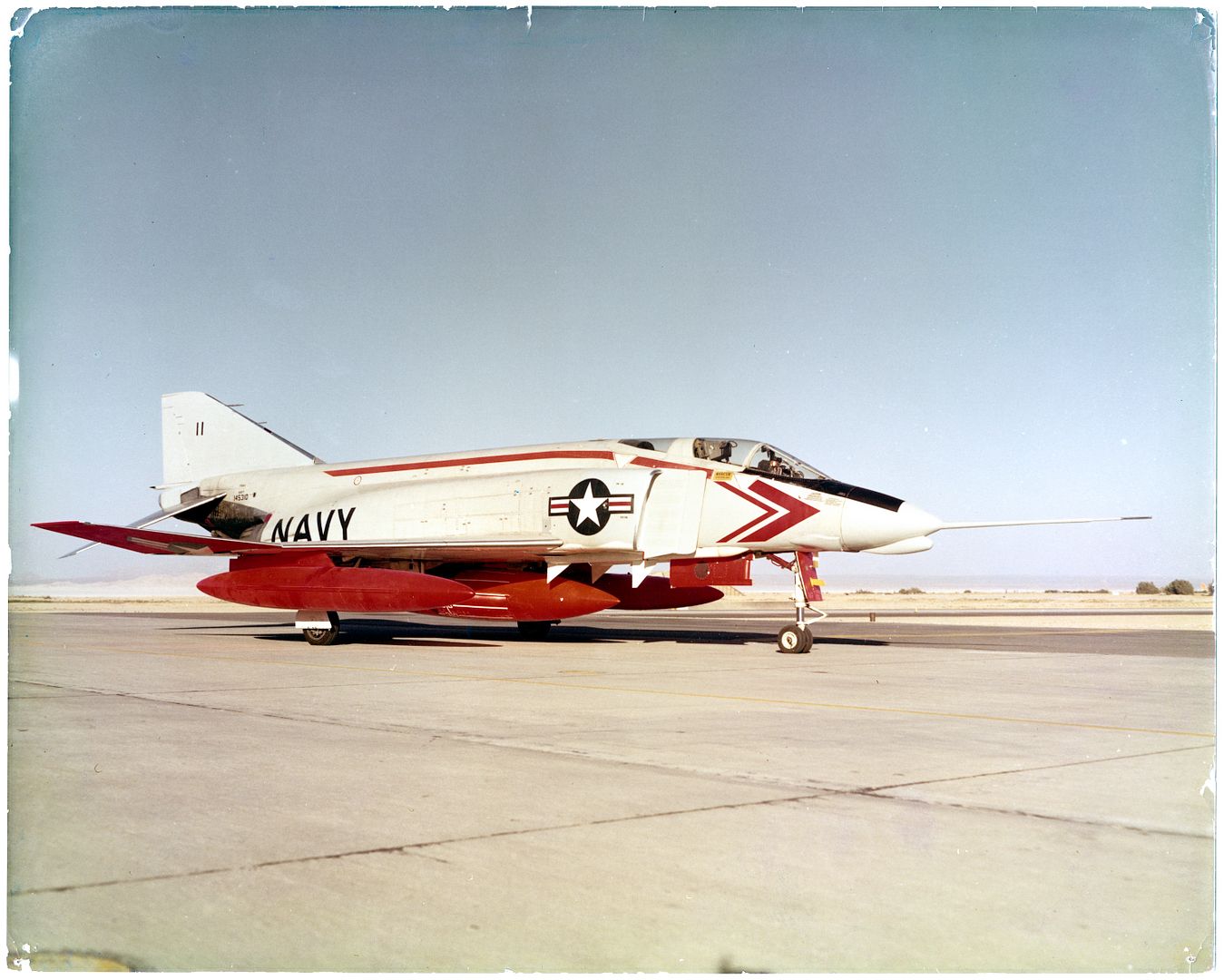
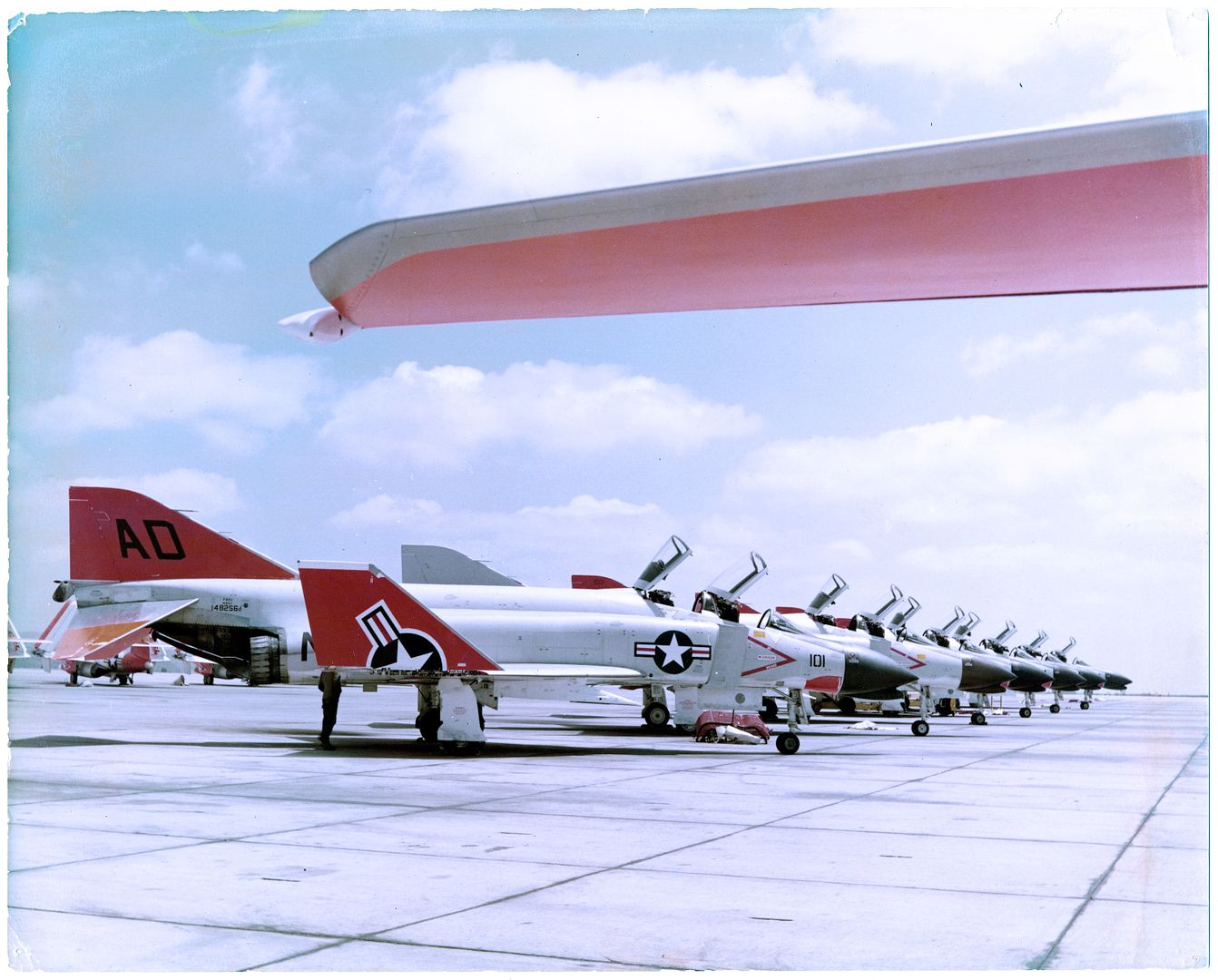
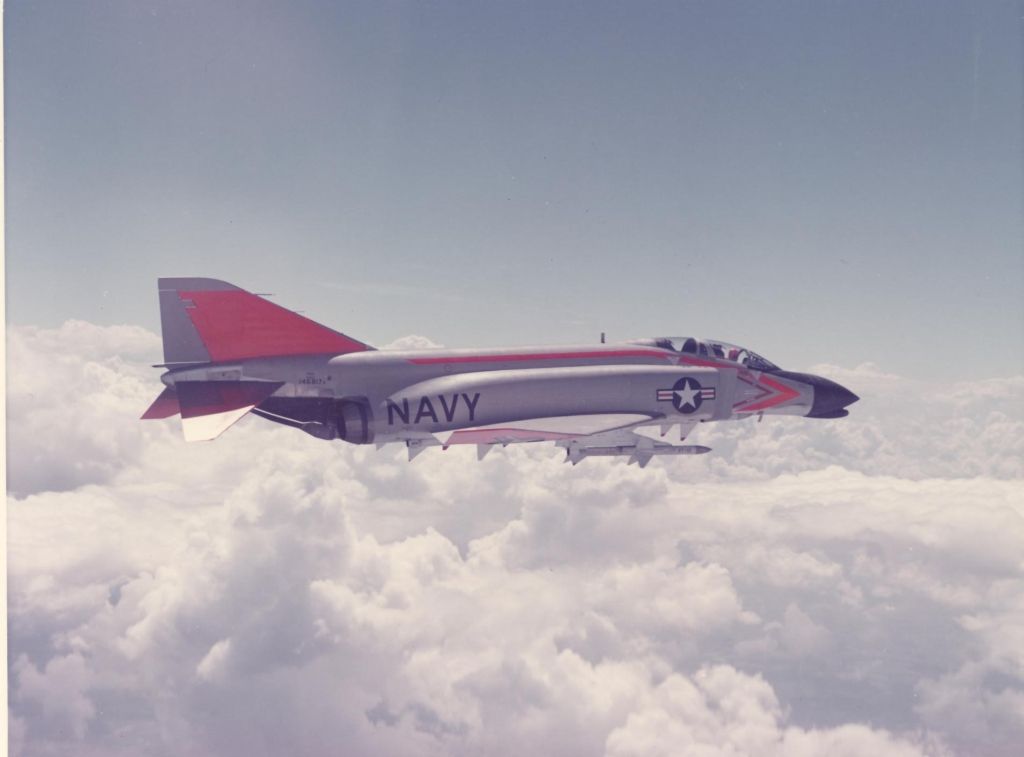
The initial XF4H-1 prototype performed its first flights with J79-GE-3 engines, but was then refitted with J79-GE-2s and finally J79-GE-2As, providing 46.0 kN (4,695 kgp / 10,350 lbf) dry thrust and 71.8 kN (7,325 kgp / 16,150 lbf) afterburning thrust each.
The 19th aircraft built replaced the AN/APQ-50 radar set with the evolved AN/APQ-72, which had a larger antenna that required fit of a new and bigger nose. This gave the Phantom a "droopy nose" appearance that made it look even more awkward, and also dictated a new canopy scheme. Earlier aircraft had a canopy that was flush with the aircraft's spine, but with the 19th aircraft and every other Phantom ever built, the cockpit was raised and bulged to give a better view over the big nose. Forward visibility was still not the best and rearward visibility was terrible, though the raised cockpit did also improve the view to the back a bit.
The 46th aircraft introduced fully-rated J79-GE-8 engines with 48.5 kN (4,945 kgp / 10,900 lbf) dry thrust and 75.6 kN (7,710 kgp / 17,000 lbf) afterburning thrust each, along with minor modifications to the engine installation.
In March 1961, the first 45 Phantoms, following the two XF4H-1 prototypes, were retroactively given the new designation of "F4H-1F", while the others in this series retained the F4H-1 designation. The F4H-1Fs were all evaluation and test aircraft; none of them ever reached operational service.
Full-production F4H-1s were in service with the US Navy and Marine Corps by 1962. In September of that year, the US military adopted a tri-service aircraft designation scheme, and the F4H-1F became the "F-4A" and the F4H-1 became the "F-4B". A total of 649 F-4Bs was built from 1961 into 1967.
On 30 December 1960, the VF-121 "Pacemakers" at NAS Miramar became the first Phantom operator with its F4H-1Fs (F-4As).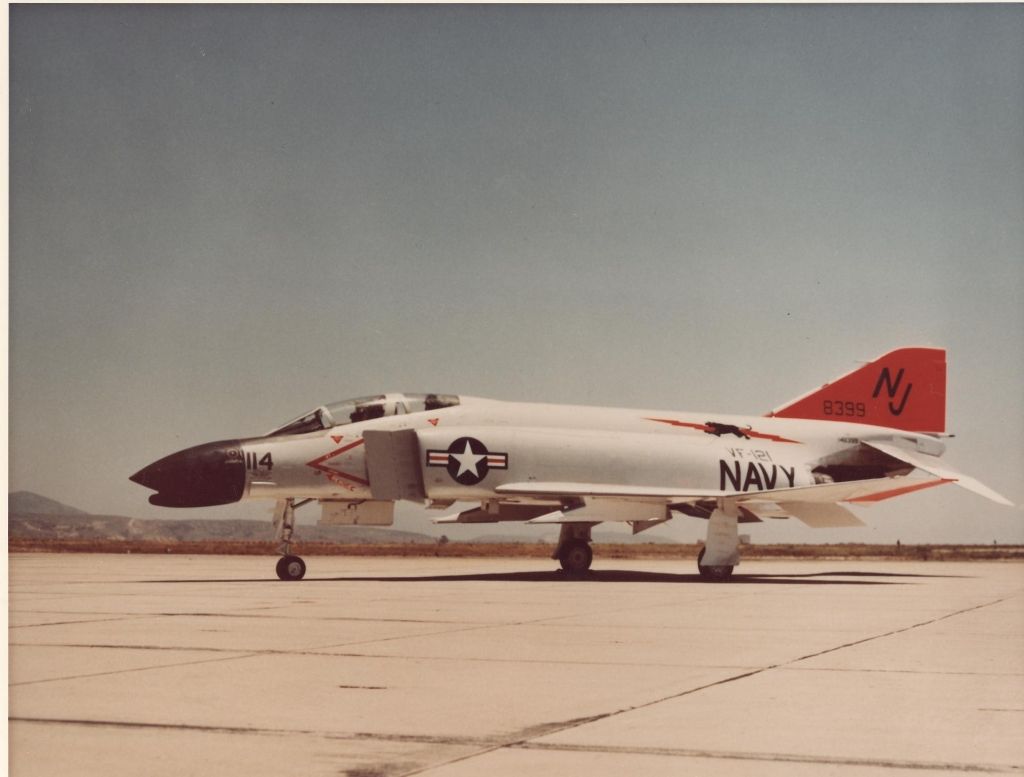
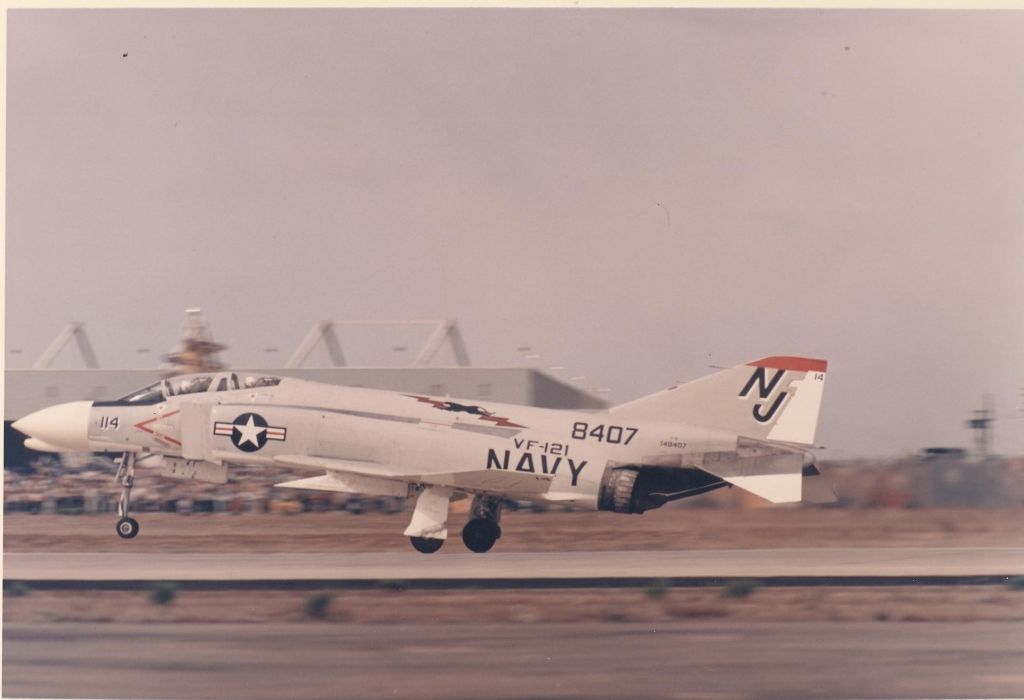
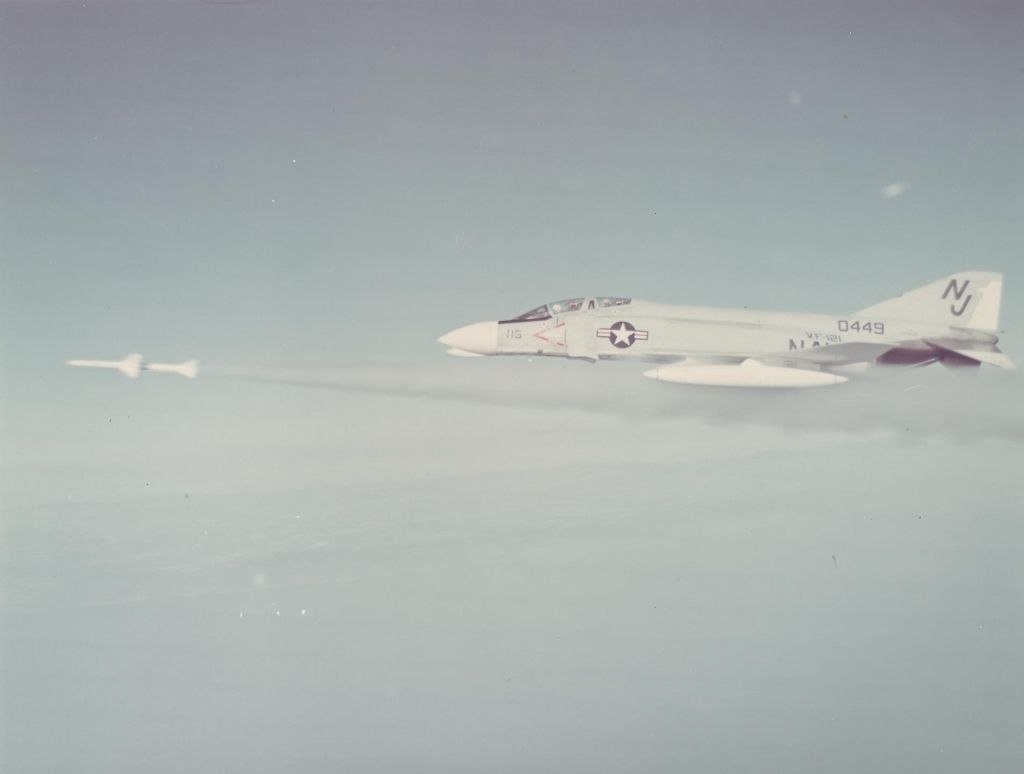
The VF-74 "Be-devilers" at NAS Oceana became the first deployable Phantom squadron when it received its F4H-1s (F-4Bs) on 8 July 1961. The squadron completed carrier qualifications in October 1961 and Phantom's first full carrier deployment between August 1962 and March 1963 aboard USS Forrestal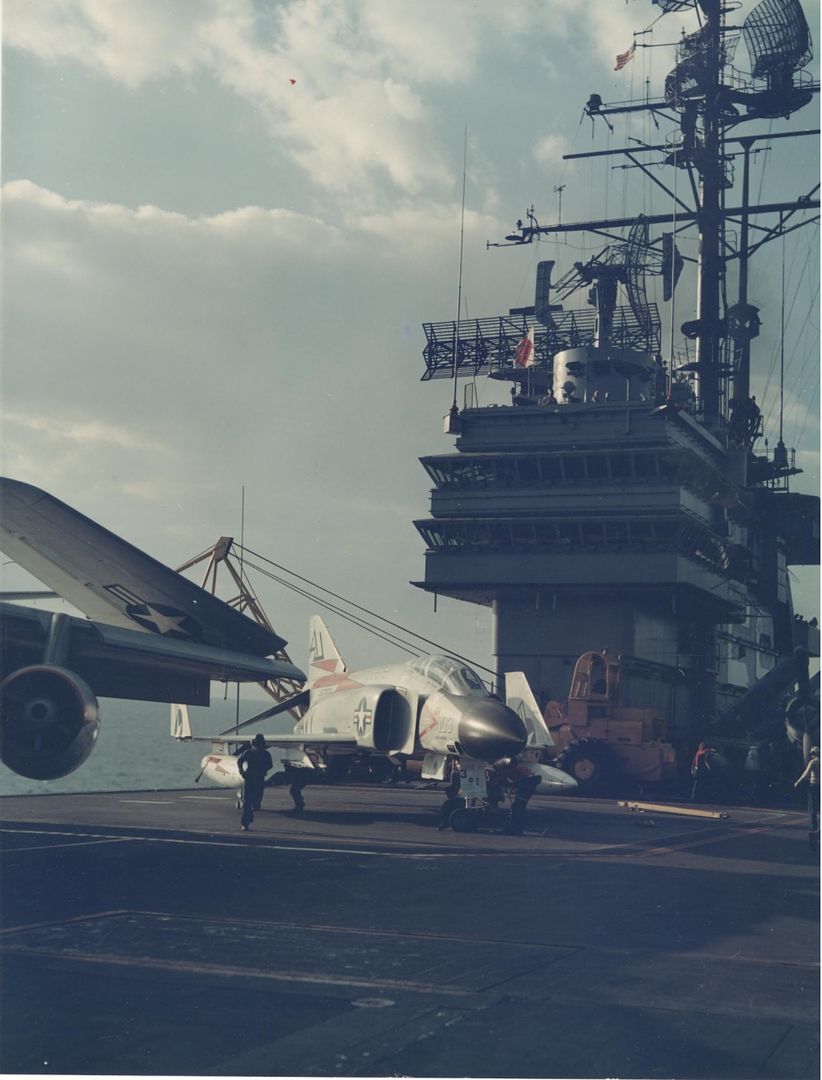
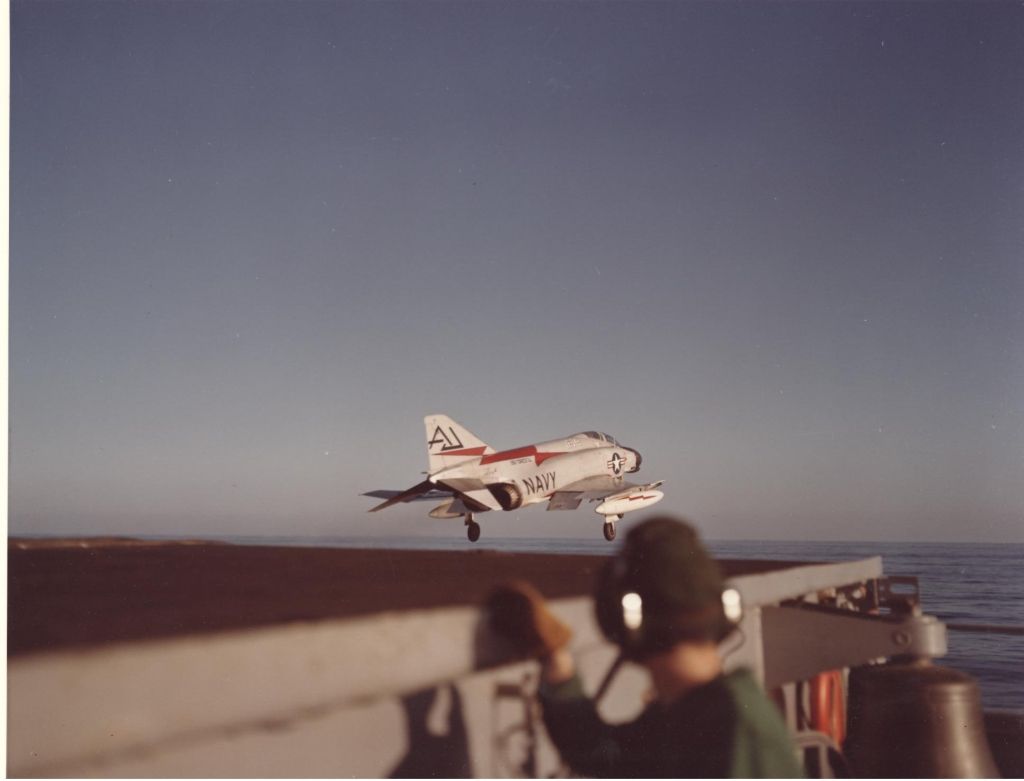
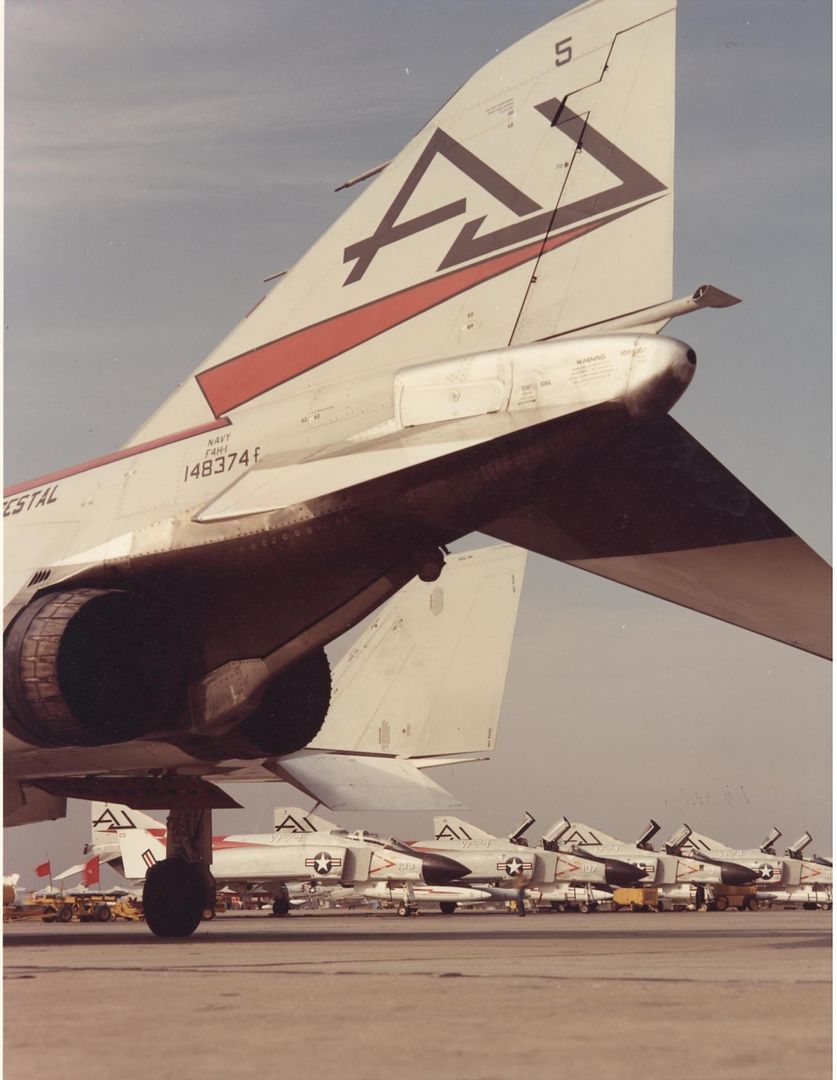
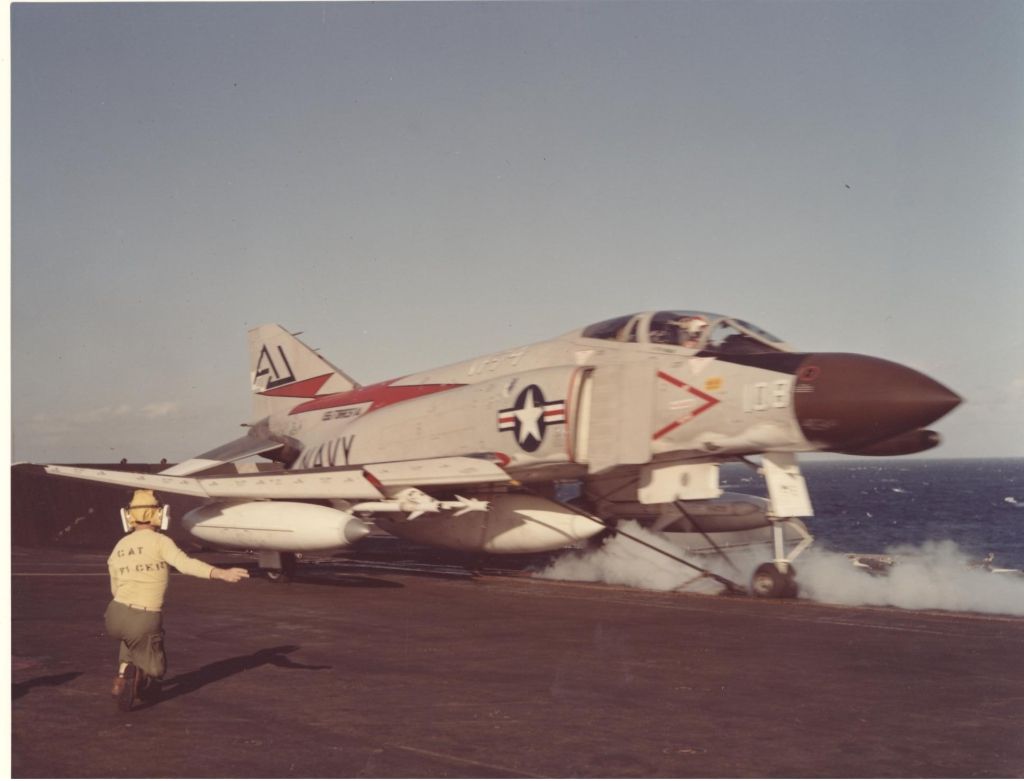
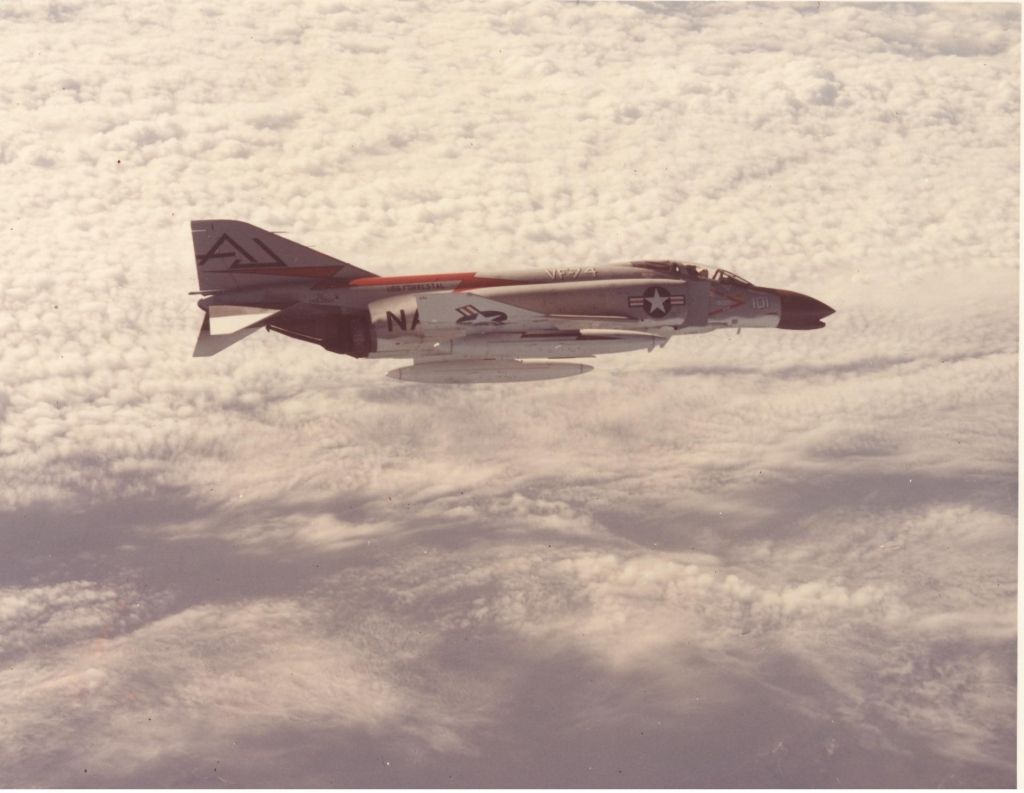

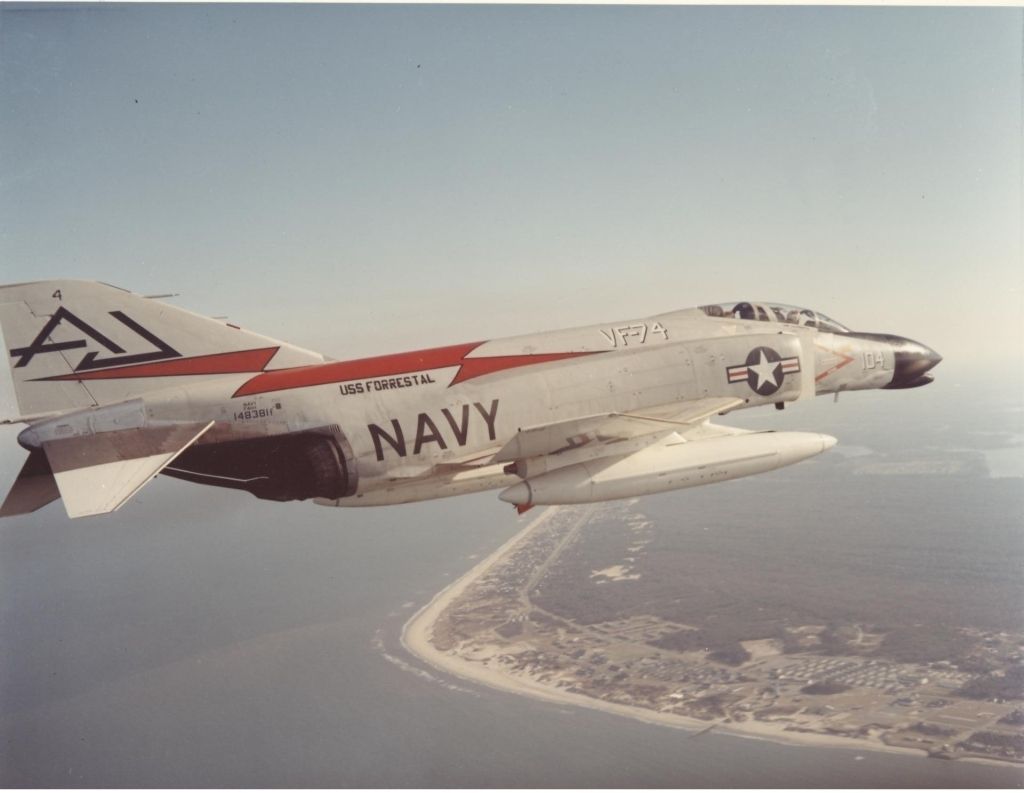
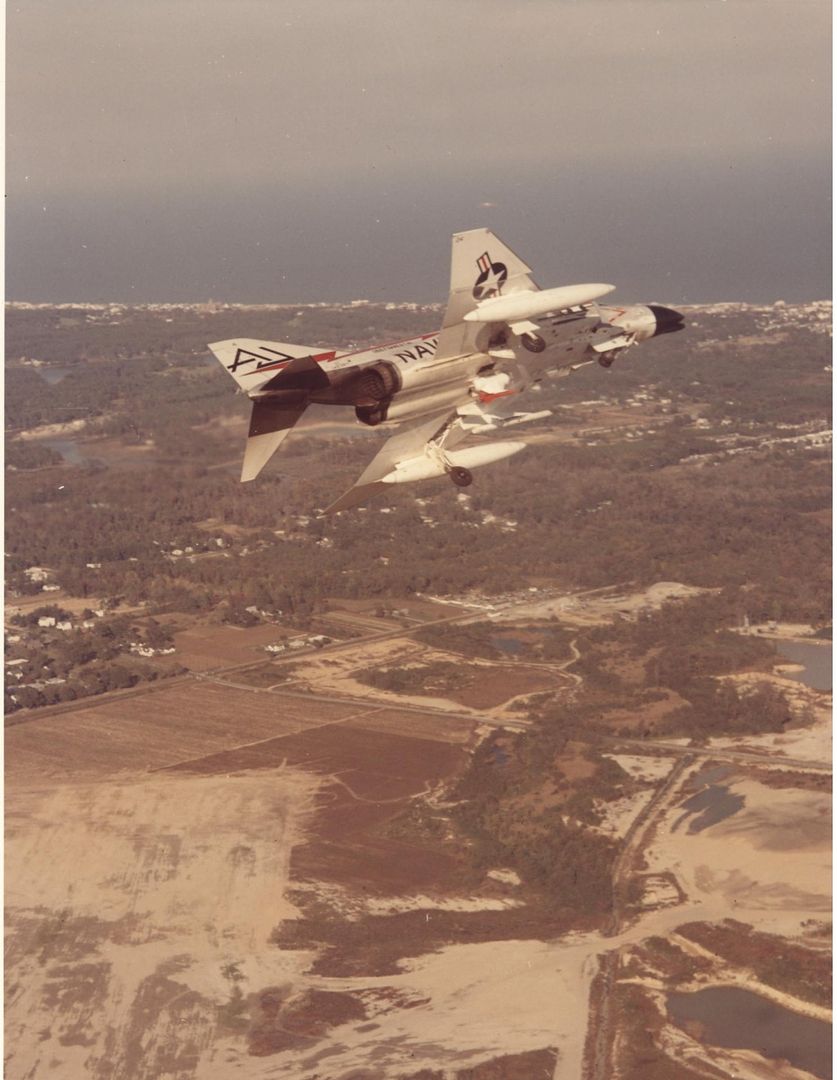
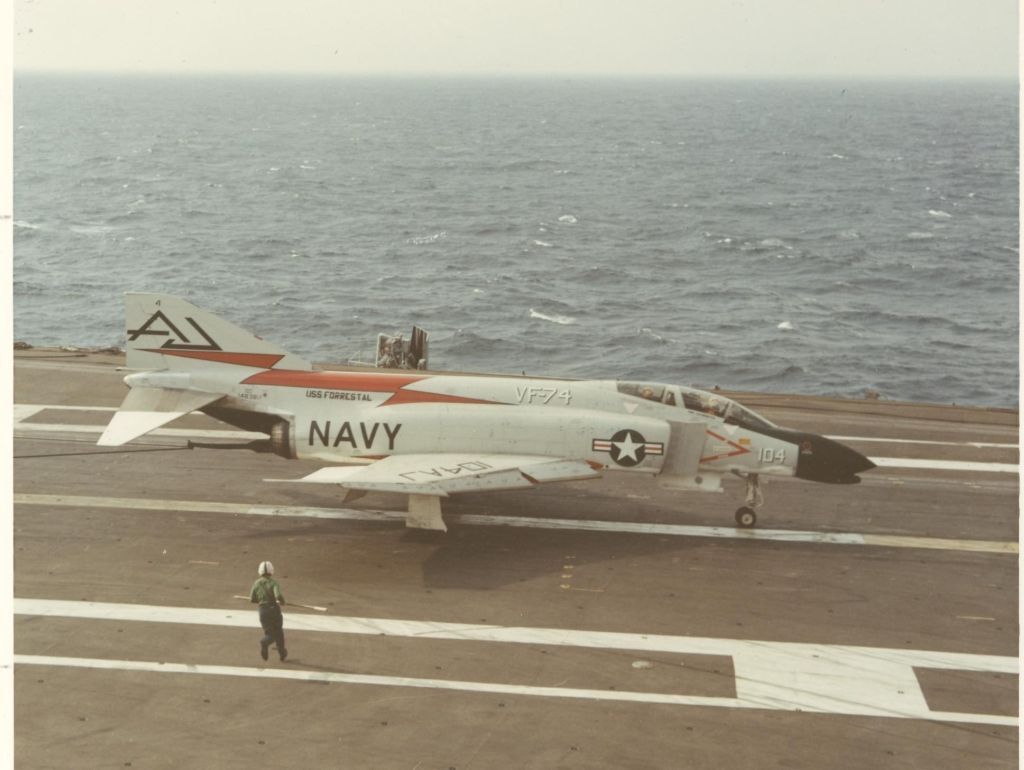
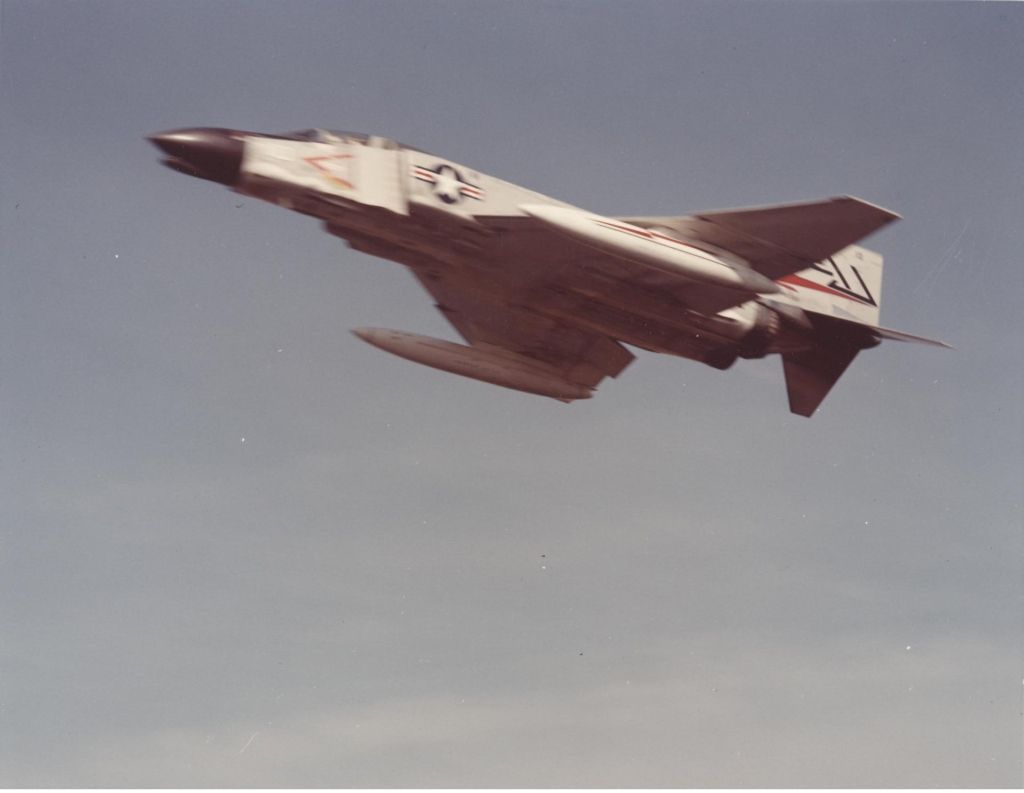
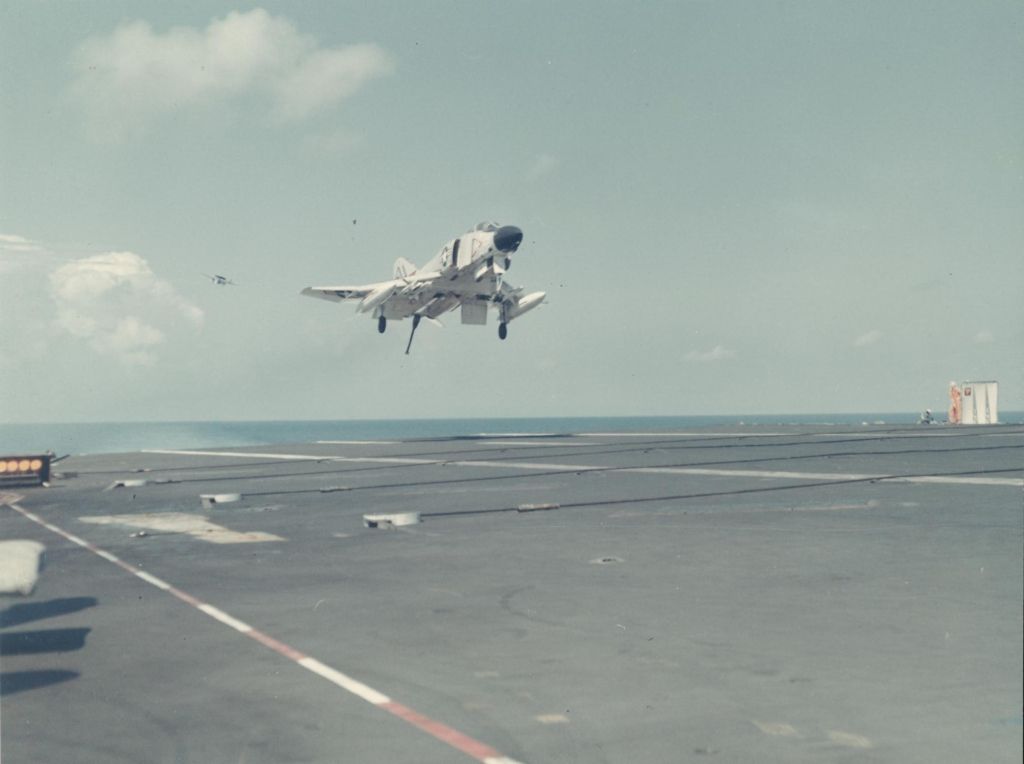
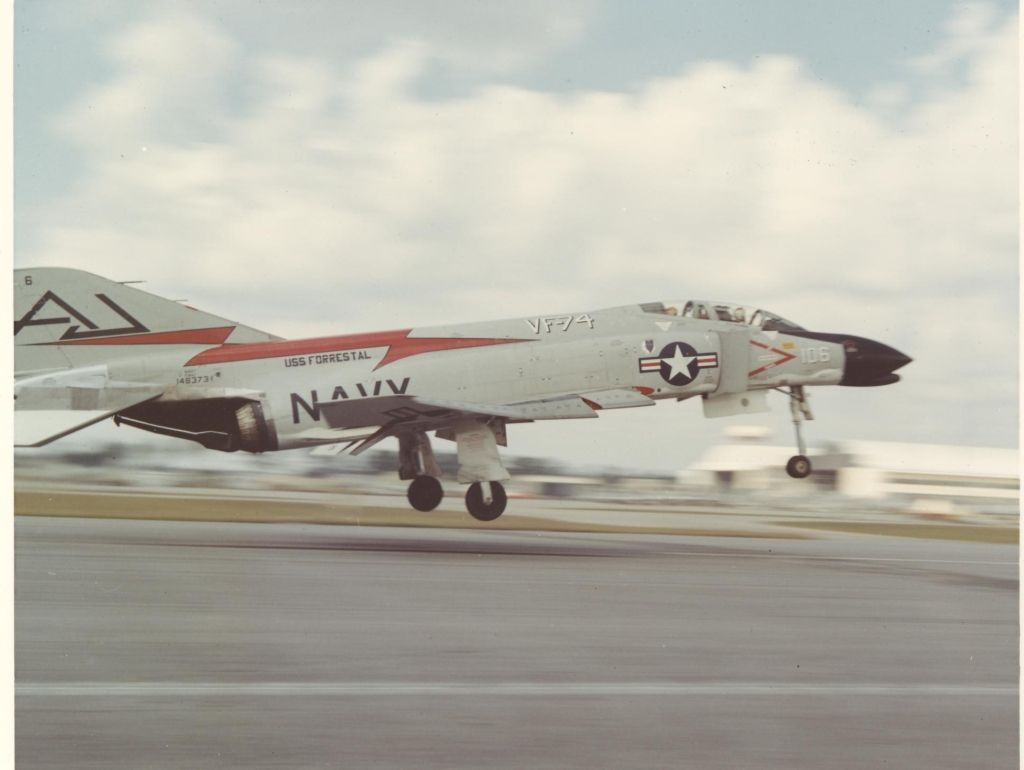

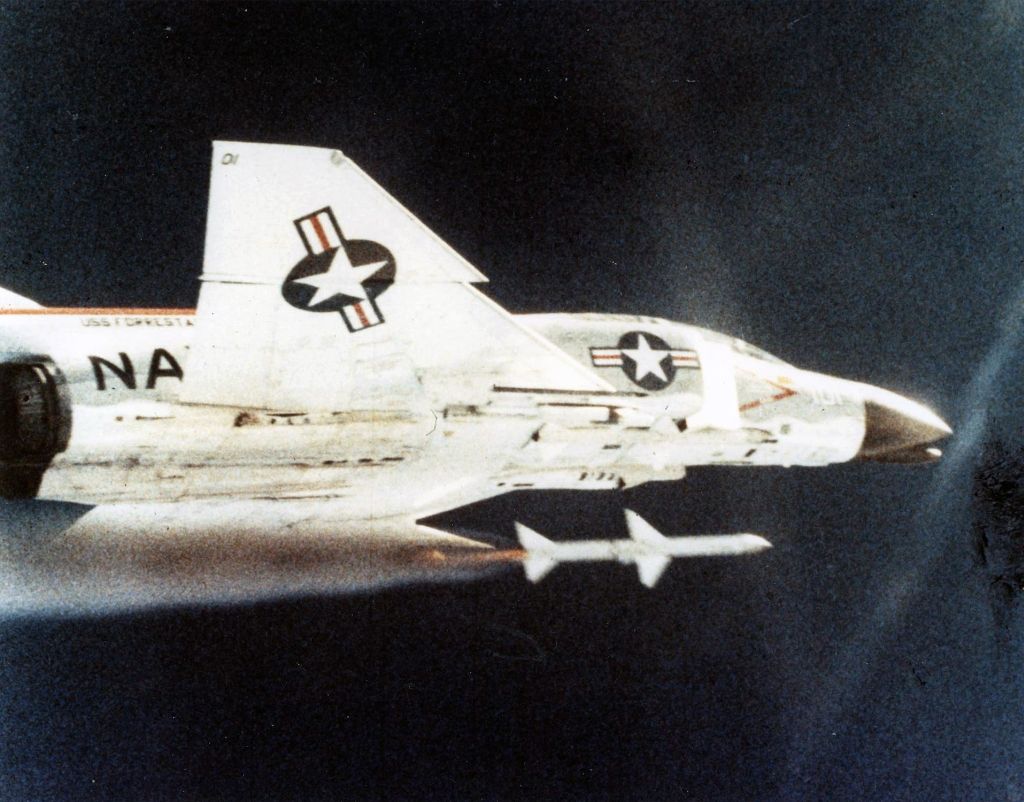

The second deployable U.S. Atlantic Fleet squadron to receive F-4Bs was the VF-102 "Diamondbacks", who promptly took their new aircraft on the shakedown cruise of USS Enterprise.
Although below photos are on Independance ??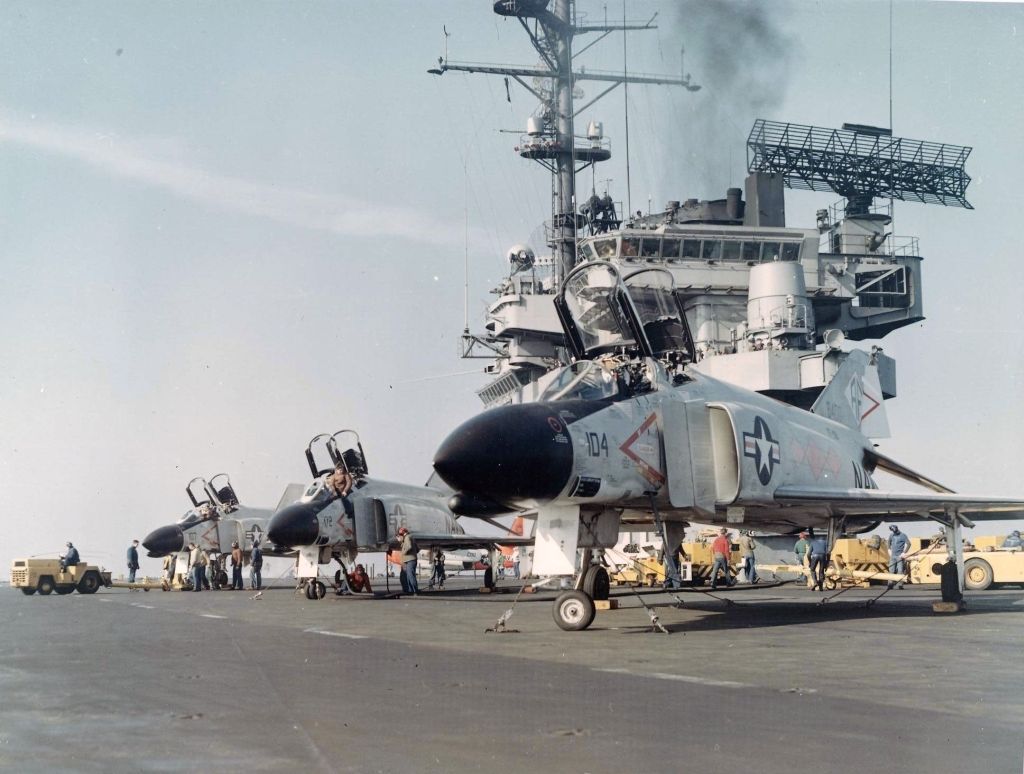
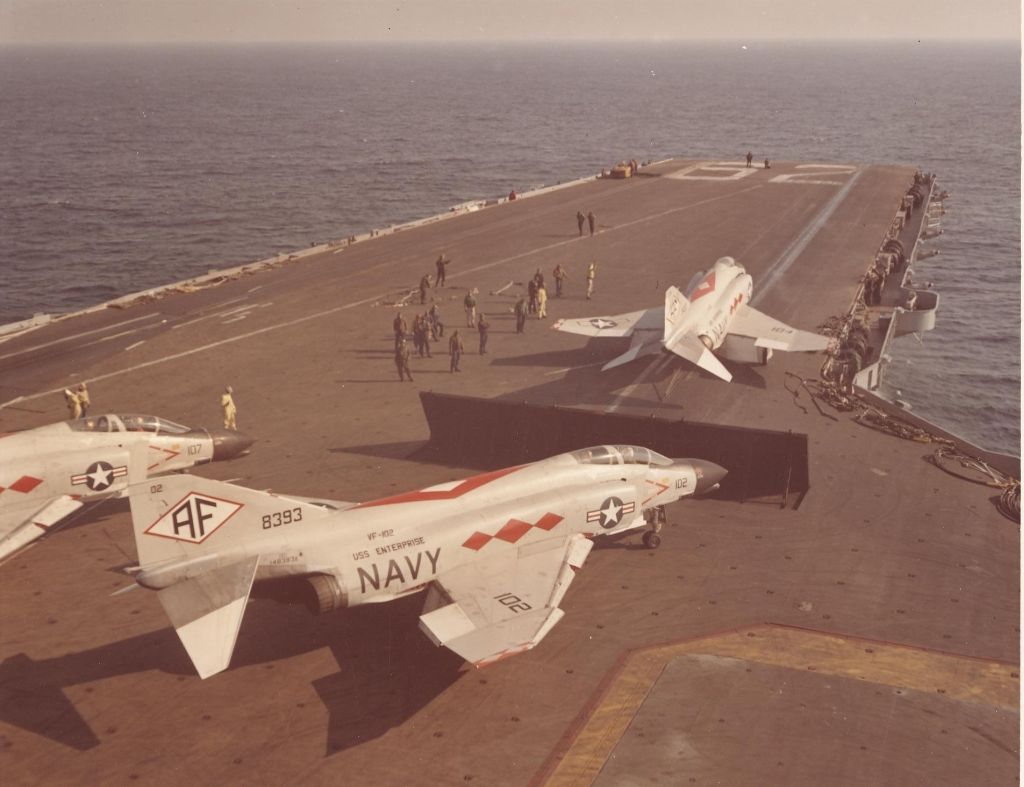
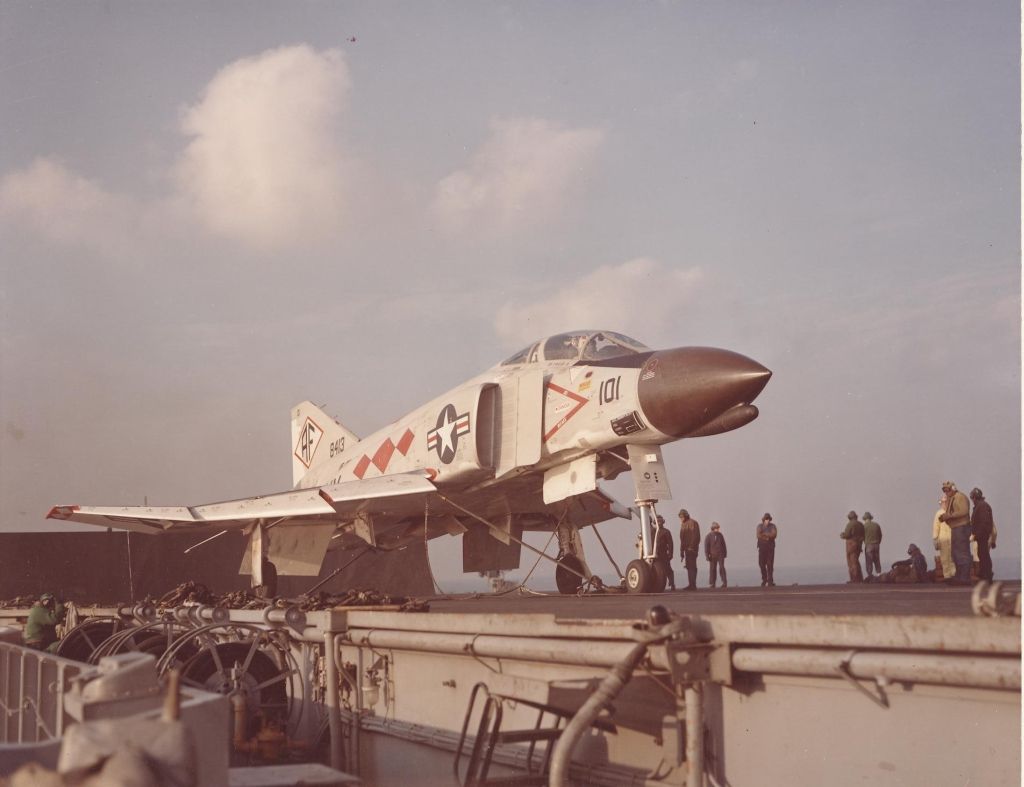

Below test aircraft with Nava lMissile Center at Mugu CA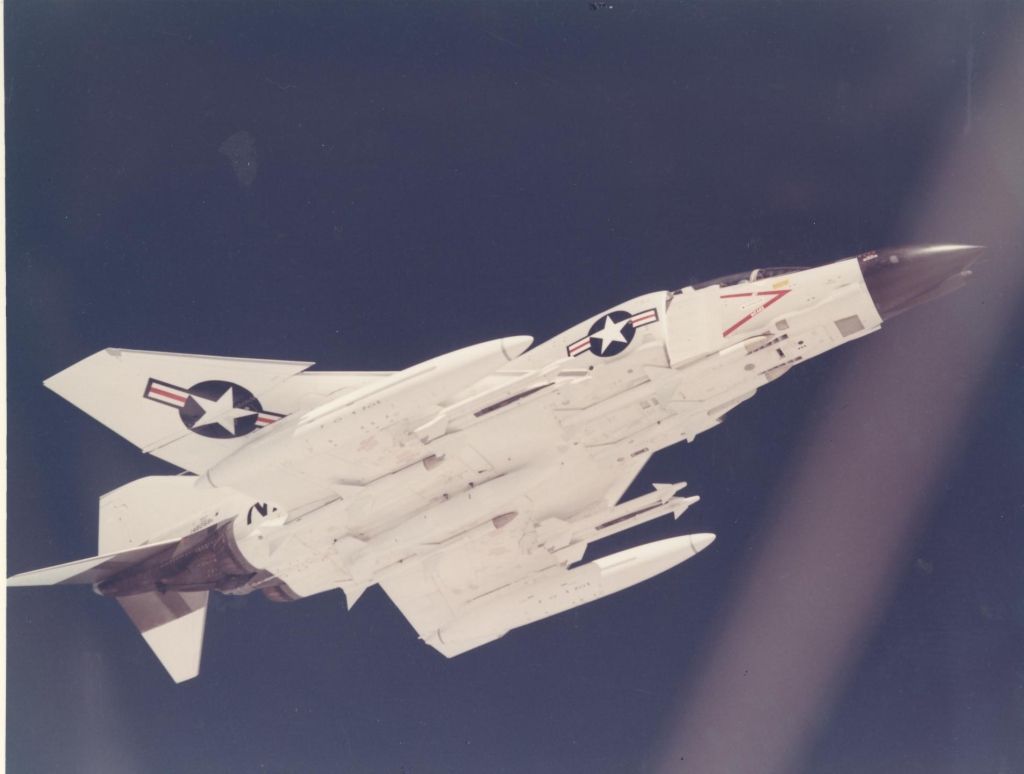
Regards Duggy
-
 Admin
Admin -
12 years agoSat Oct 12 2013, 12:34pm
 Main Admin
Main Admin -
12 years agoThu Oct 17 2013, 01:40am
 Main Admin
Main Admin -
12 years ago
 Main Admin
Main Admin -
12 years ago
 Main Admin
Main Admin -
12 years ago
 Main Admin
Main Admin -
12 years agoSat Oct 12 2013, 12:58pm
 Main Admin
Main Admin -
12 years agoSat Oct 12 2013, 01:49pm
 Main AdminOf total F-4B production, 12 were built with an AN/ASW-21 datalink for an automatic carrier landing system, along with an "automatic approach compensation (AAC)" system that performed automatic throttle control on carrier approaches to ensure constant speed. These aircraft were designated "F-4G", with the first flying in March 1963. The new electronics gear was fitted in a compartment in the upper forward fuselage created by chopping off an edge of the forward fuselage fuel cell.
Main AdminOf total F-4B production, 12 were built with an AN/ASW-21 datalink for an automatic carrier landing system, along with an "automatic approach compensation (AAC)" system that performed automatic throttle control on carrier approaches to ensure constant speed. These aircraft were designated "F-4G", with the first flying in March 1963. The new electronics gear was fitted in a compartment in the upper forward fuselage created by chopping off an edge of the forward fuselage fuel cell.
The F-4Gs went through operational evaluation in Southeast Asia in 1965:1966. They were then returned to the F-4B specification, suggesting that the AAC system was unsuccessful, but the F-4G designation would be "recycled" in a later Phantom variant. The new avionics compartment was carried on to other variants.

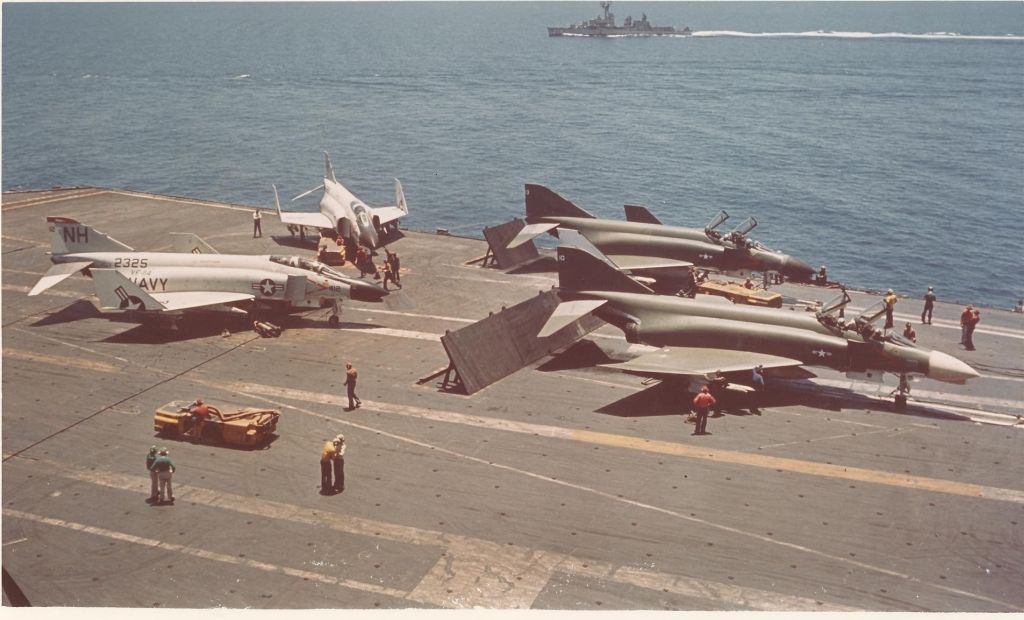

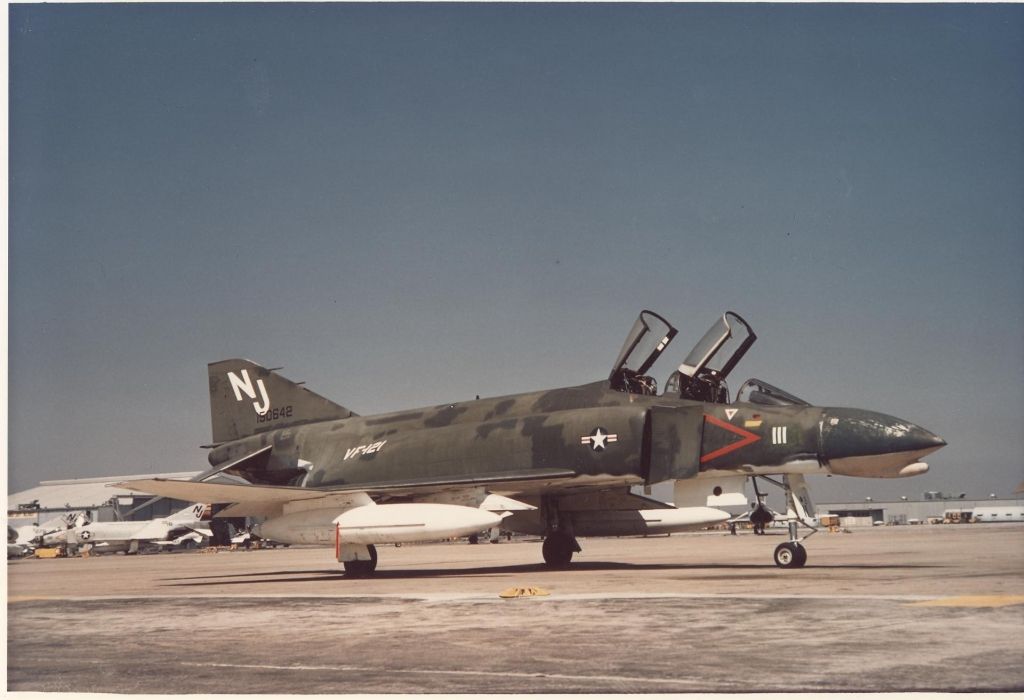
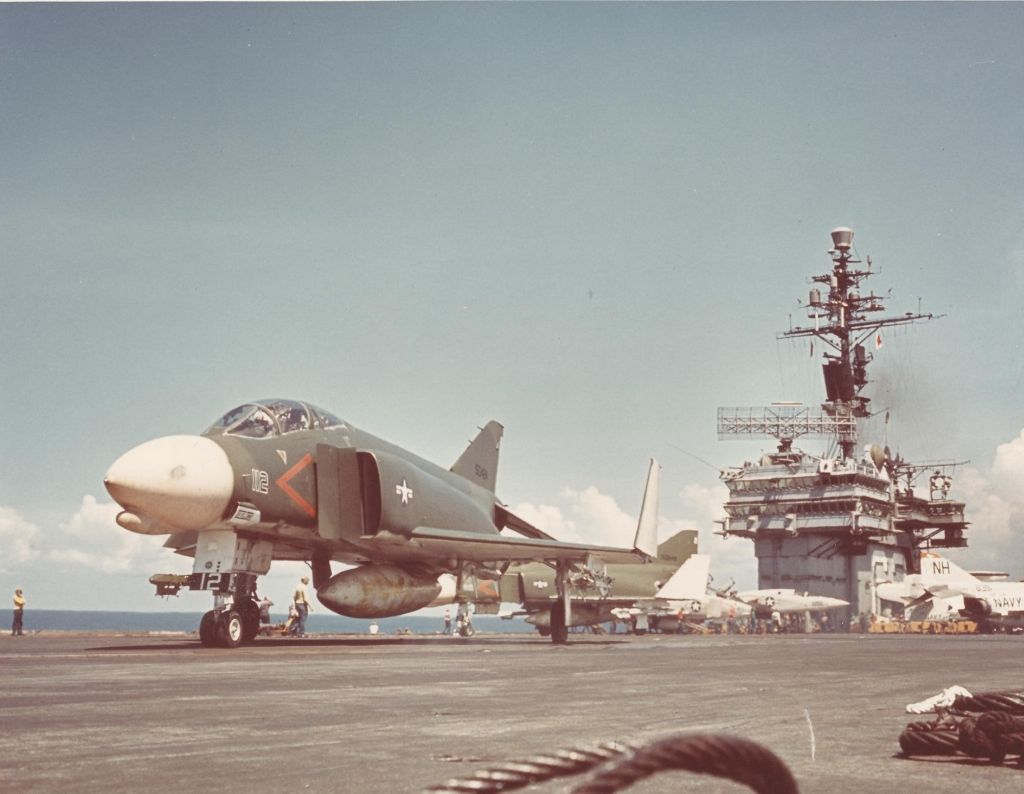
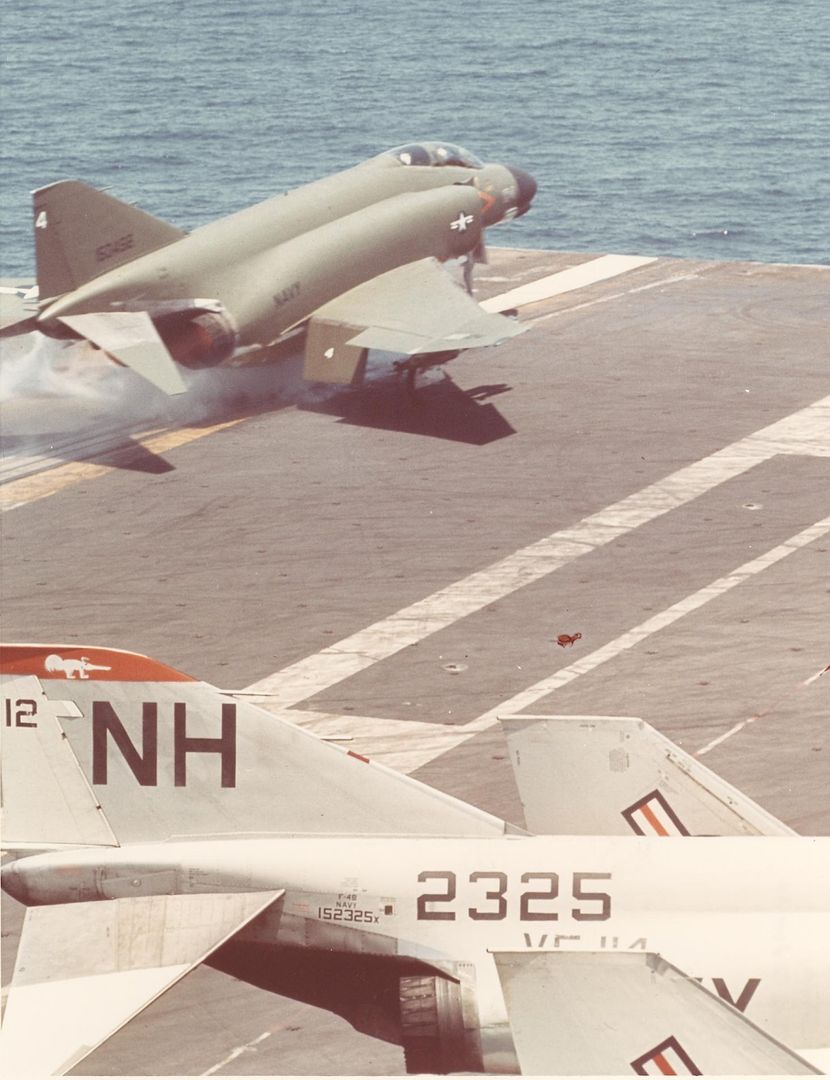
Post a reply
- Go to Previous topic
- Go to Next topic
- Go to Welcome
- Go to Introduce Yourself
- Go to General Discussion
- Go to Screenshots, Images and Videos
- Go to Off topic
- Go to Works in Progress
- Go to Skinning Tips / Tutorials
- Go to Skin Requests
- Go to IJAAF Library
- Go to Luftwaffe Library
- Go to RAF Library
- Go to USAAF / USN Library
- Go to Misc Library
- Go to The Ops Room
- Go to Made in Germany
- Go to Campaigns and Missions
- Go to Works in Progress
- Go to Juri's Air-Raid Shelter
- Go to Campaigns and Missions
- Go to Works in Progress
- Go to Skinpacks
- Go to External Projects Discussion
- Go to Books & Resources
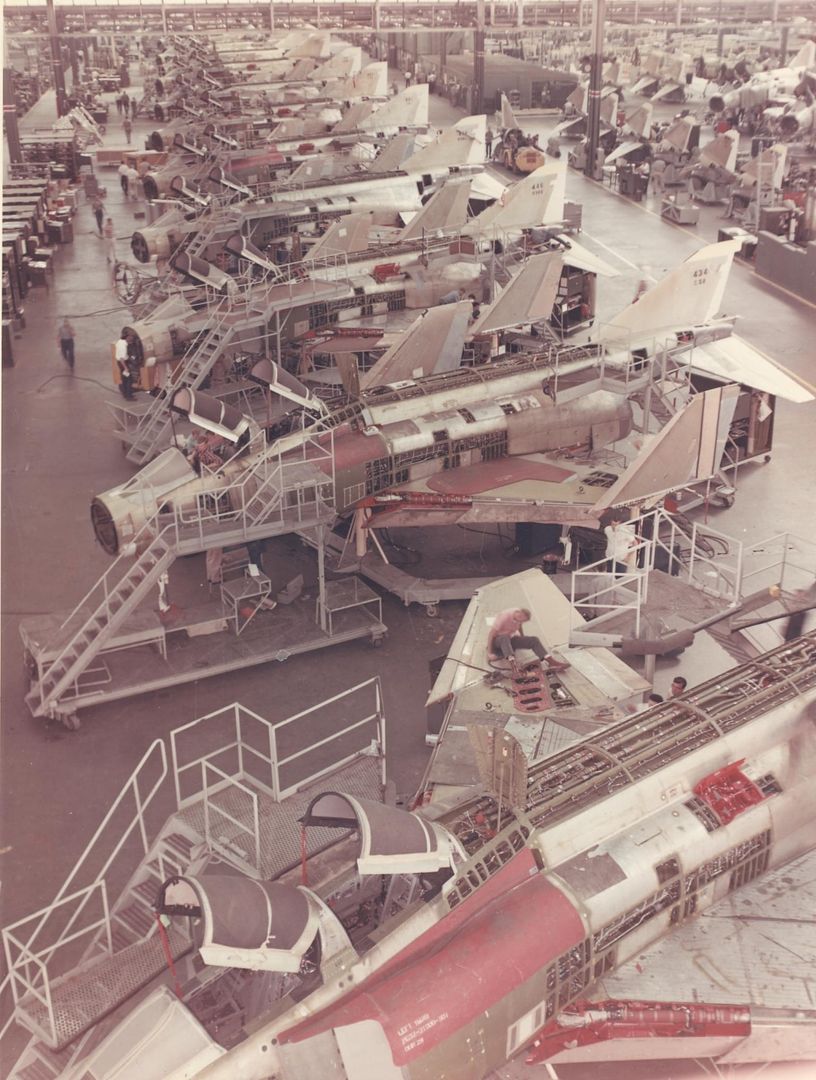
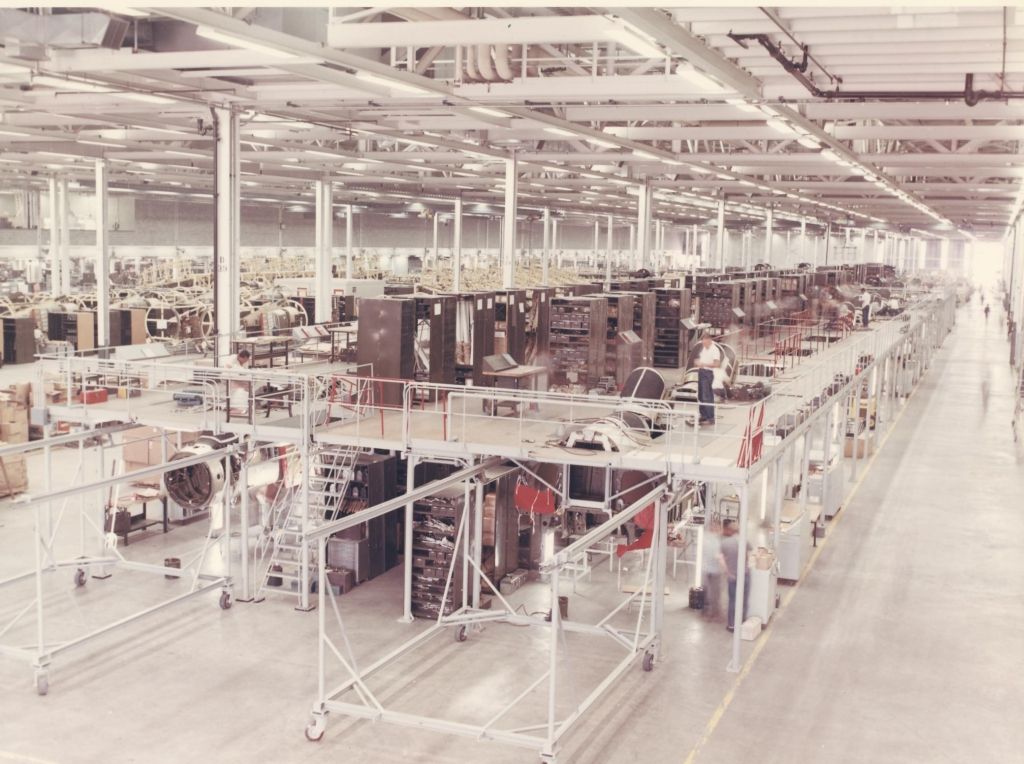
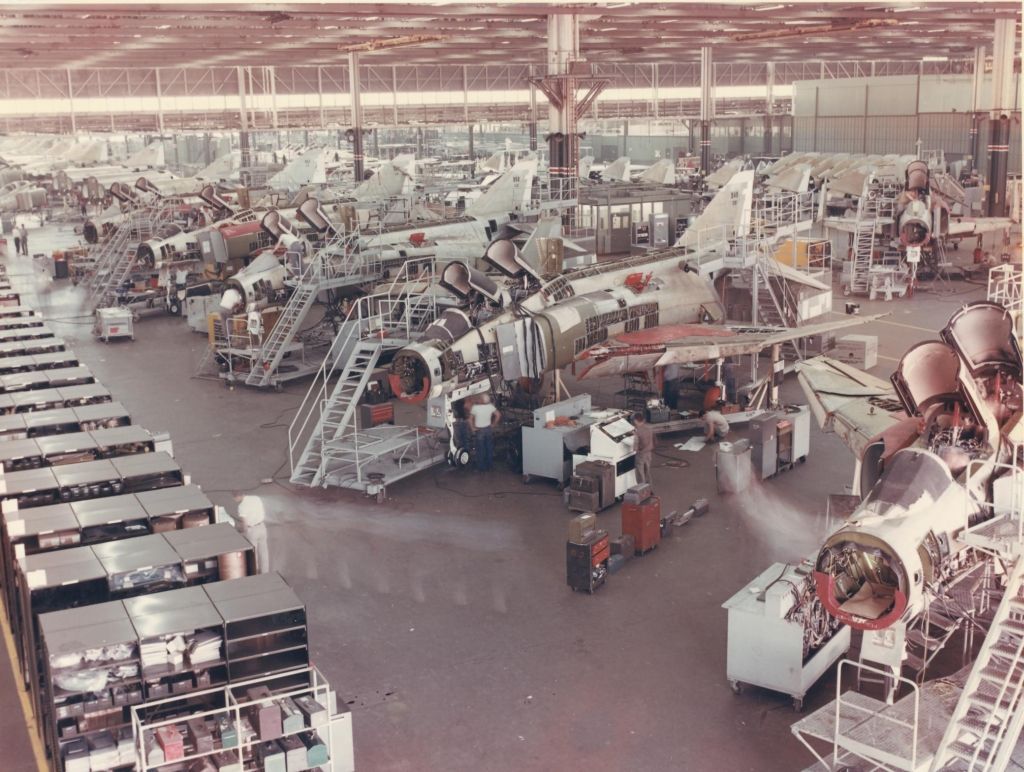
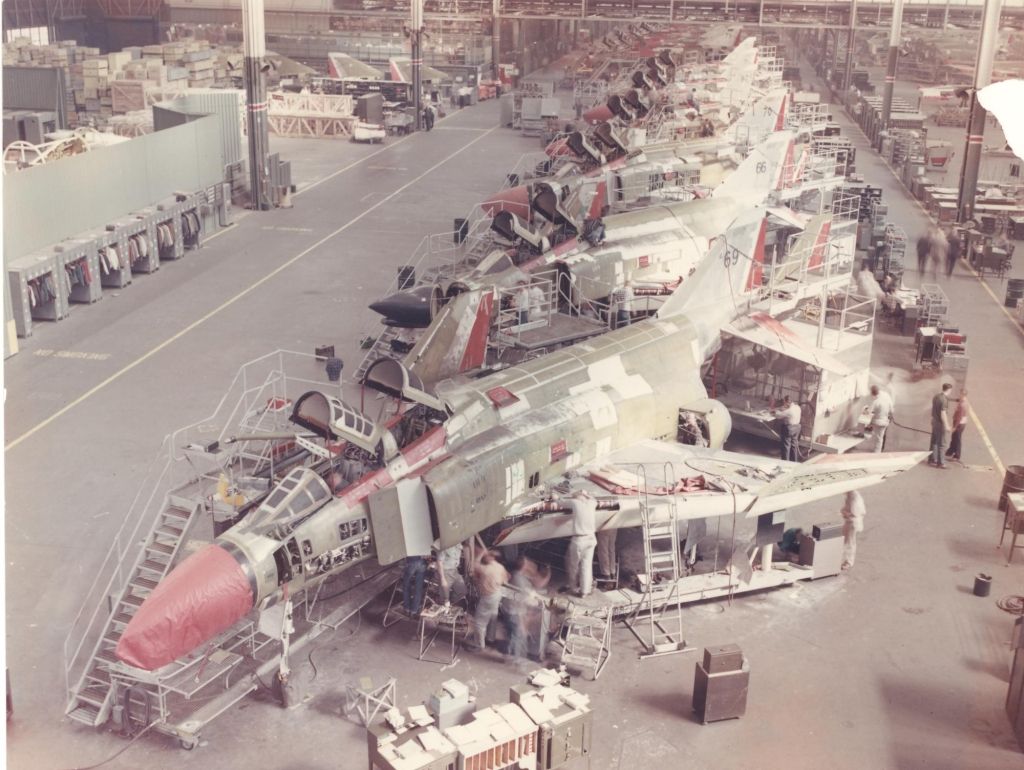
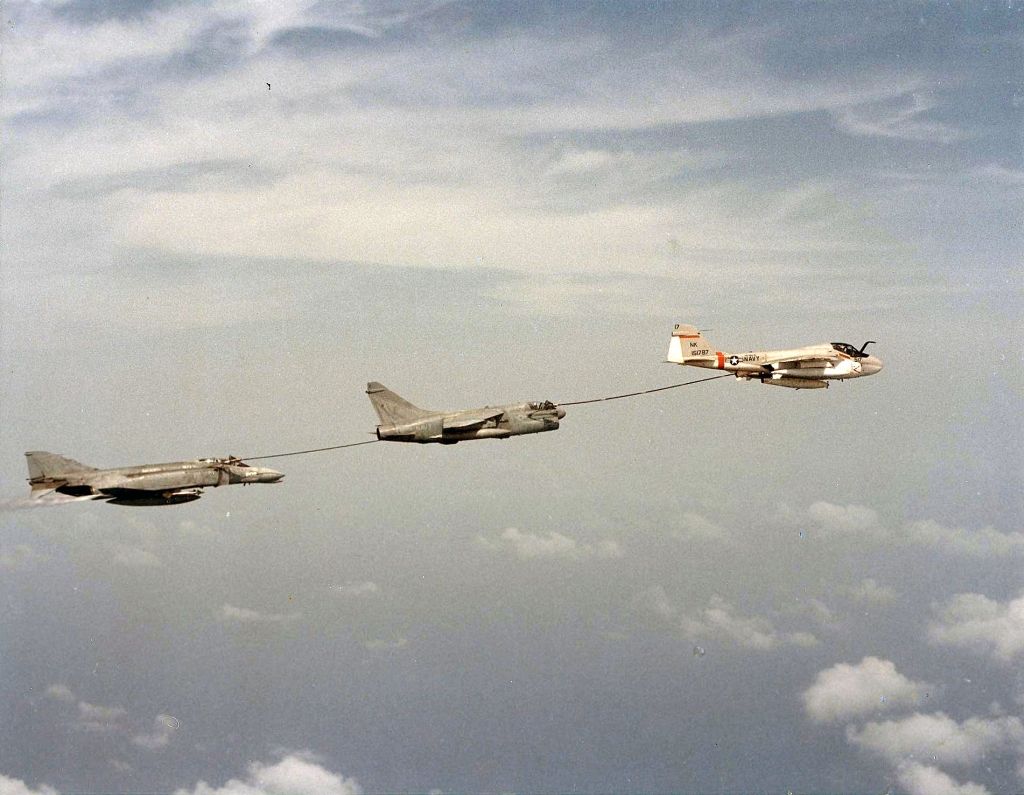


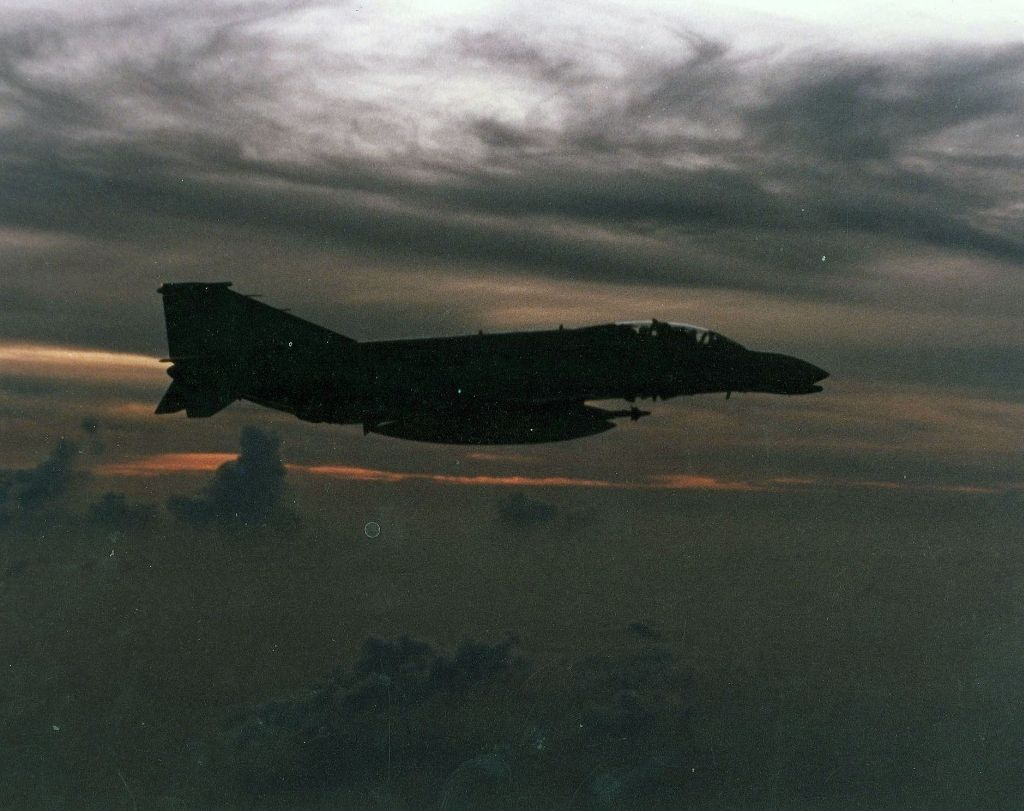
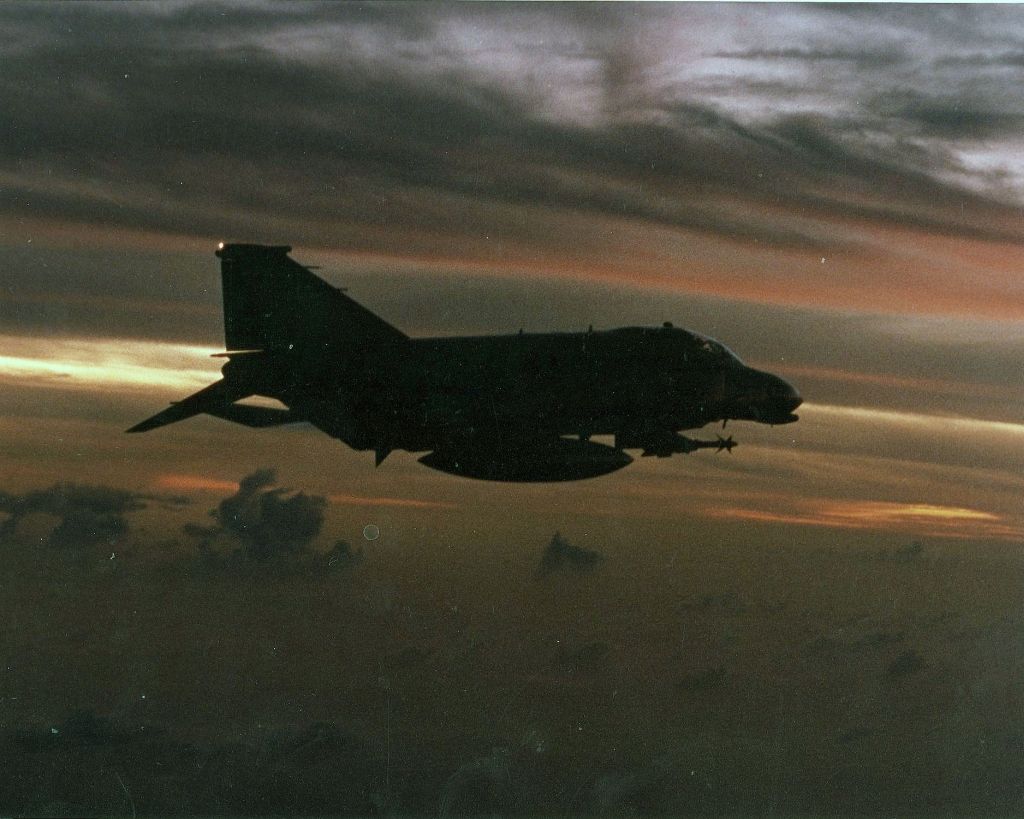
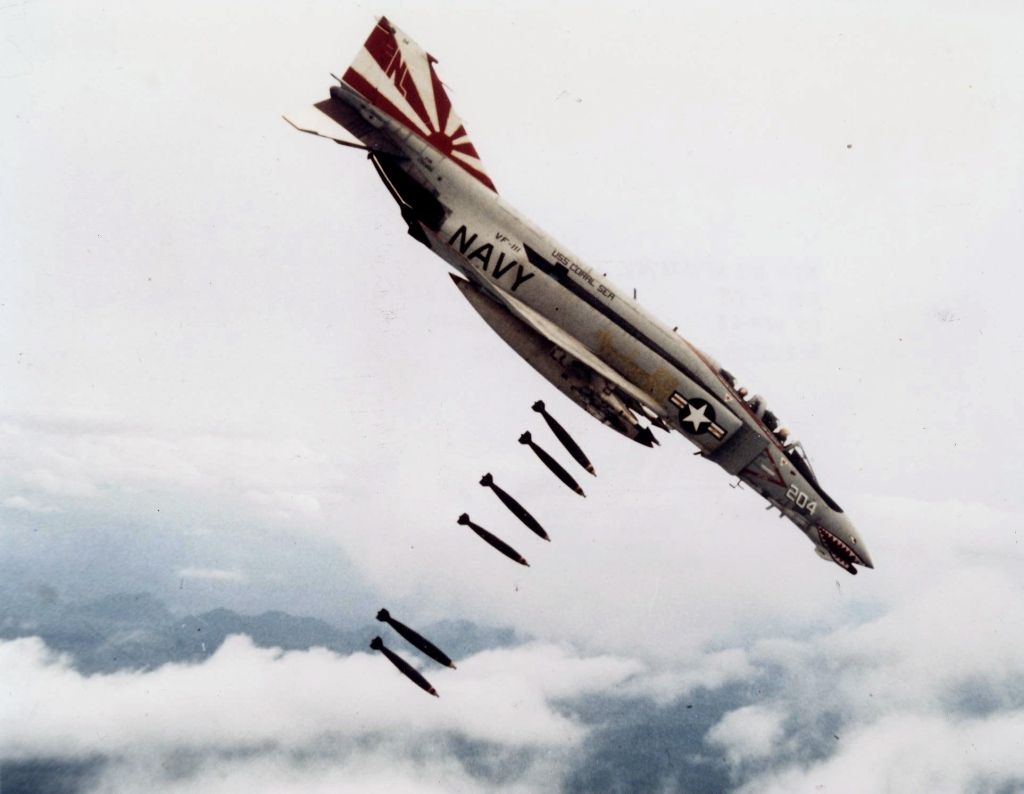
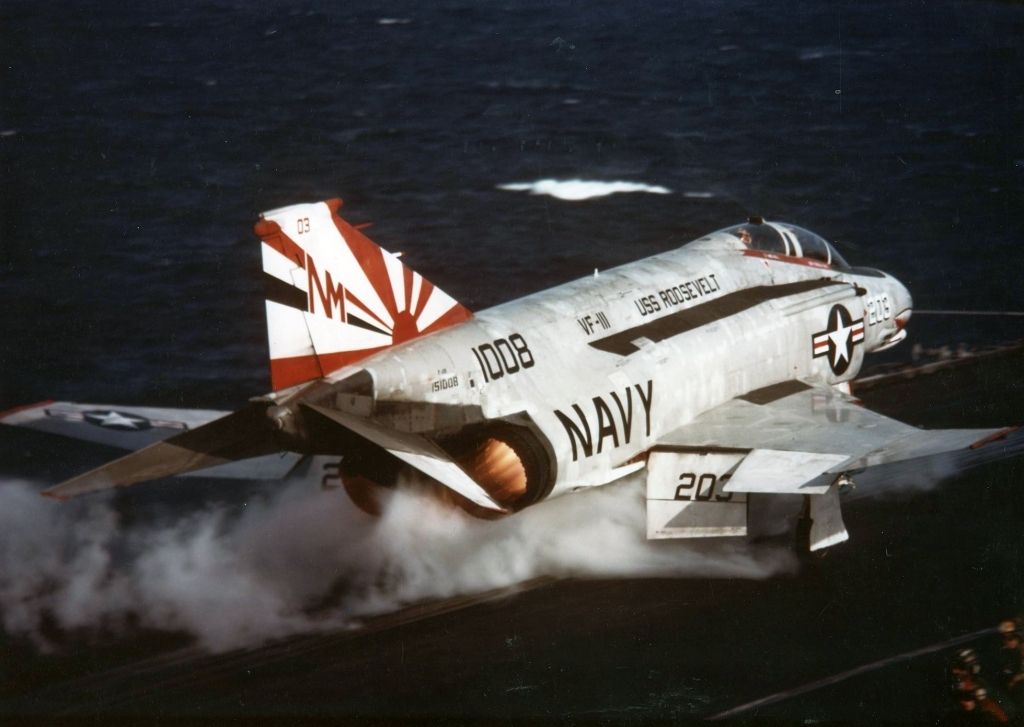
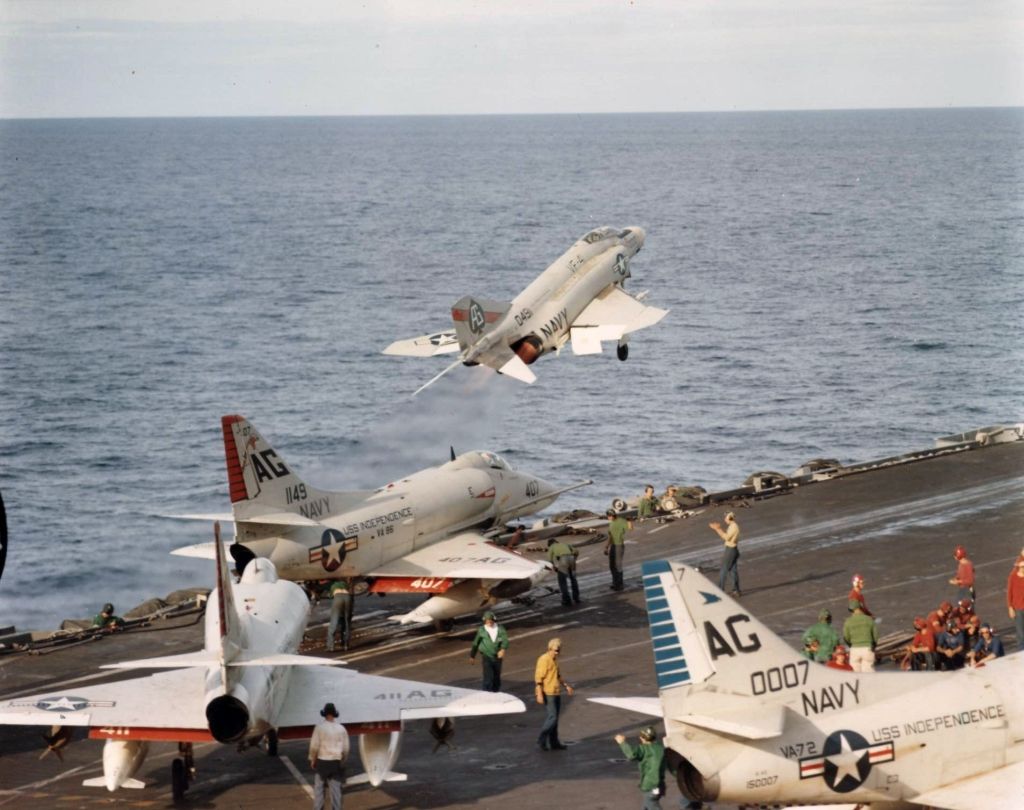

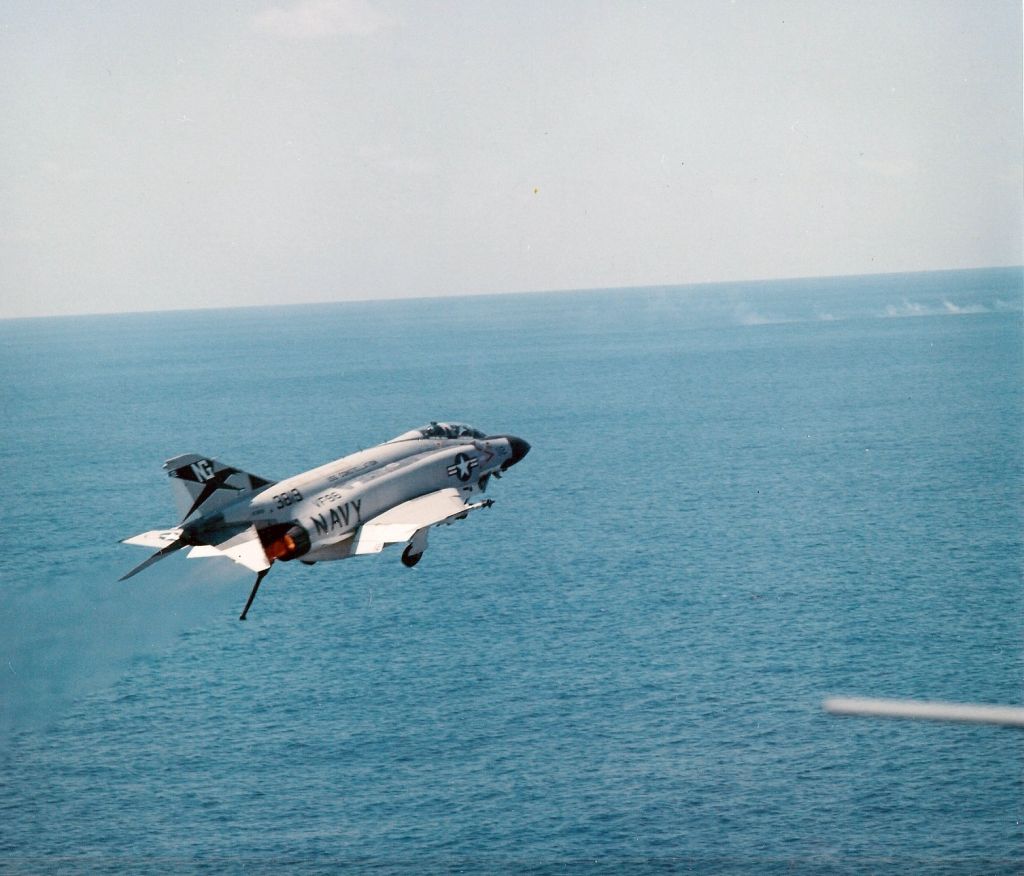
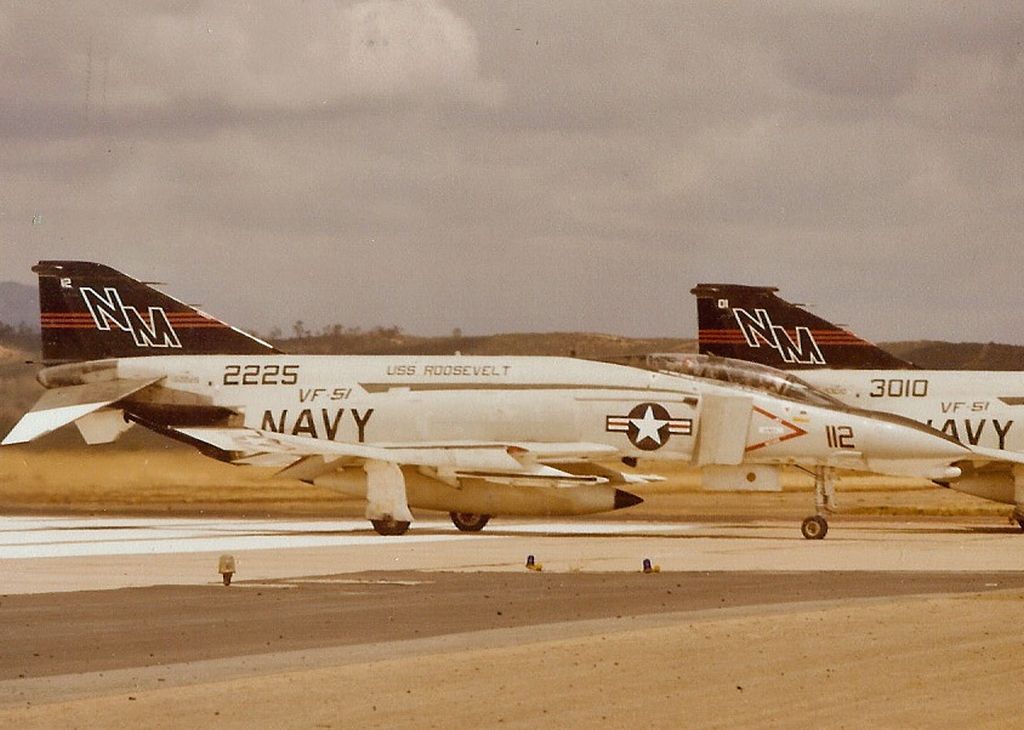
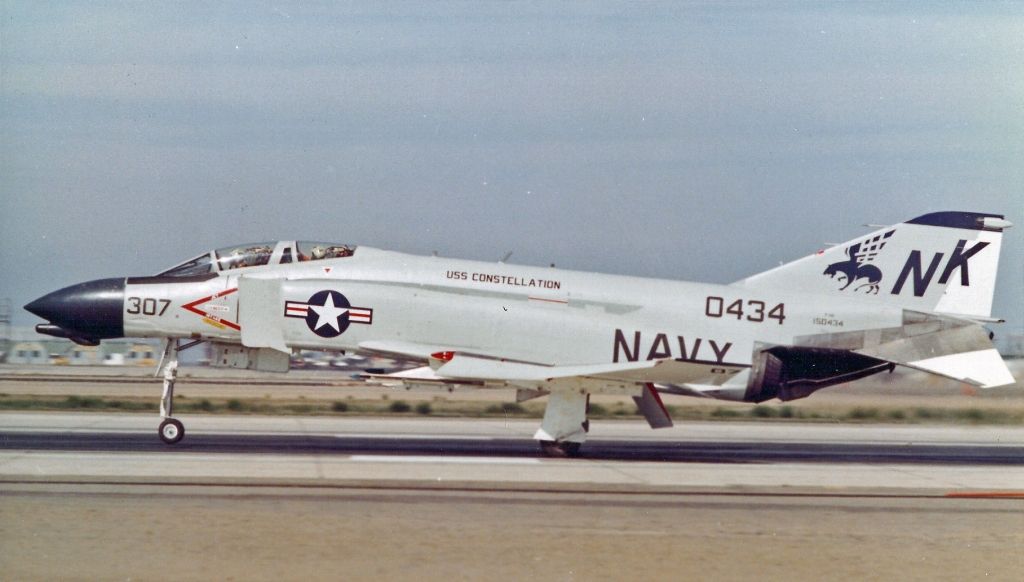
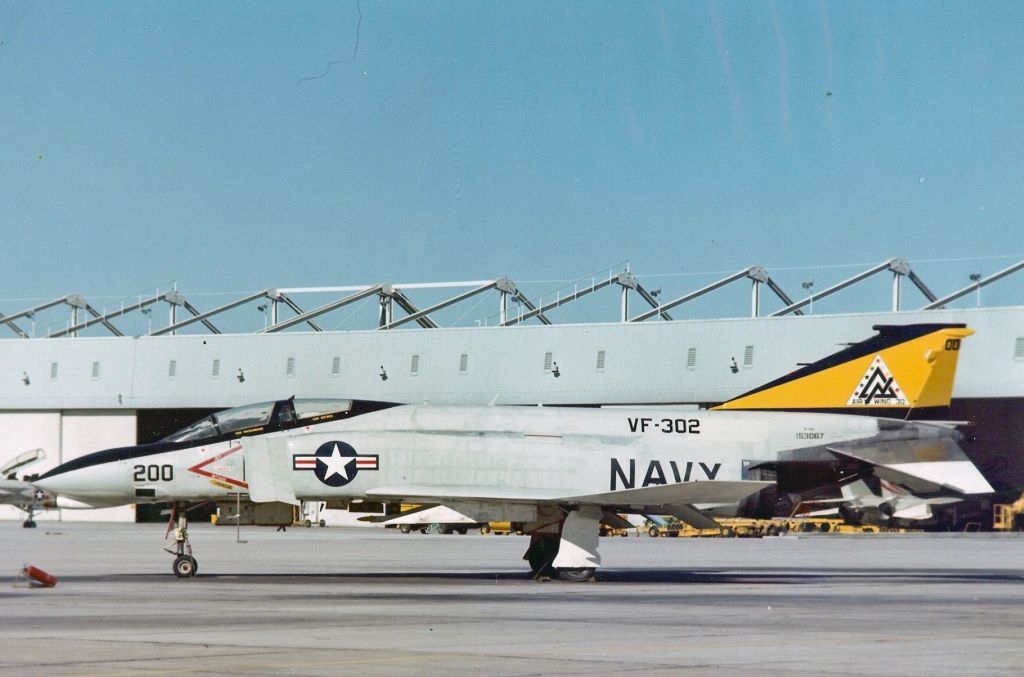
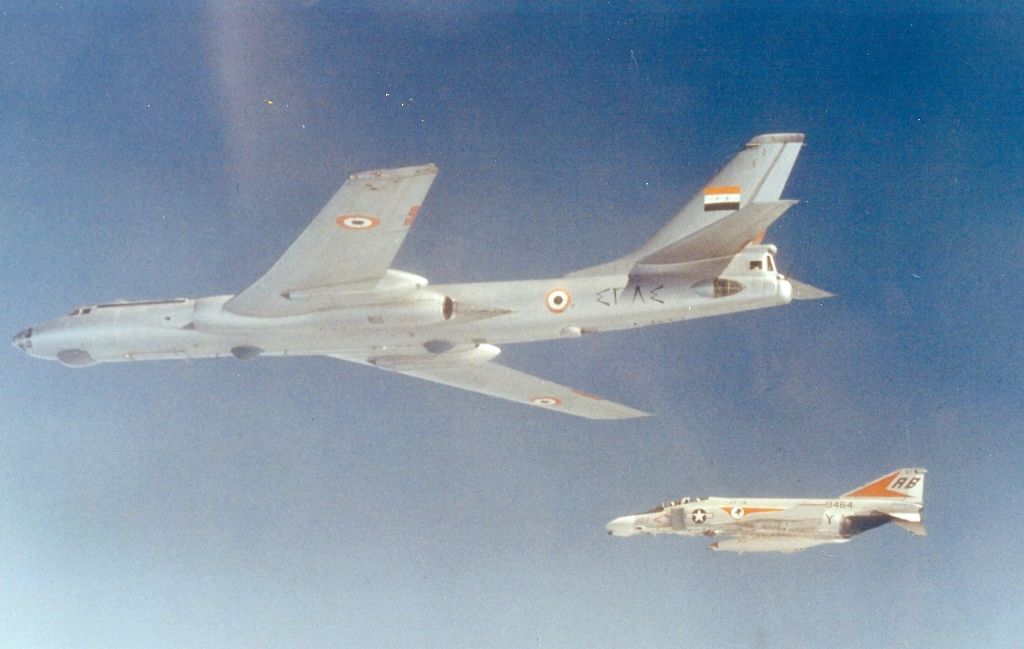


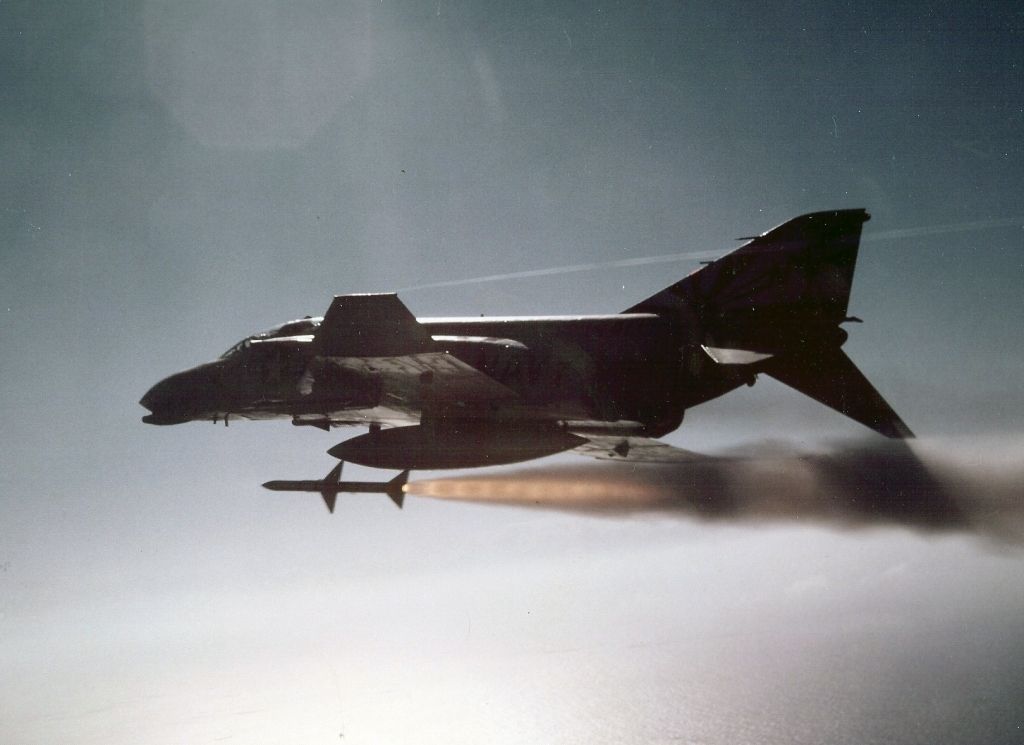
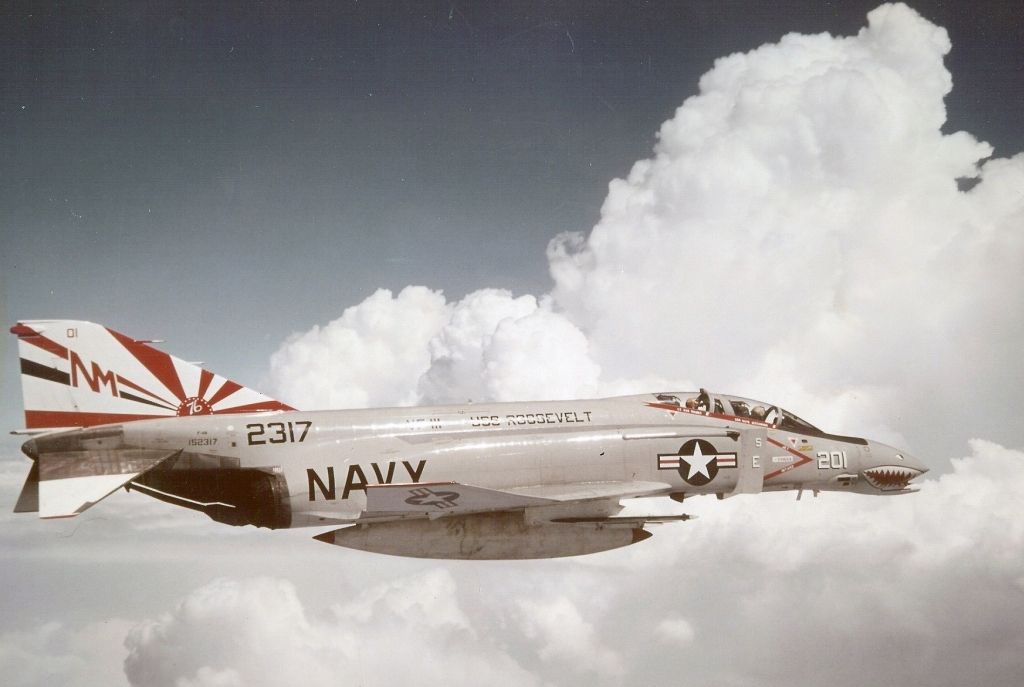
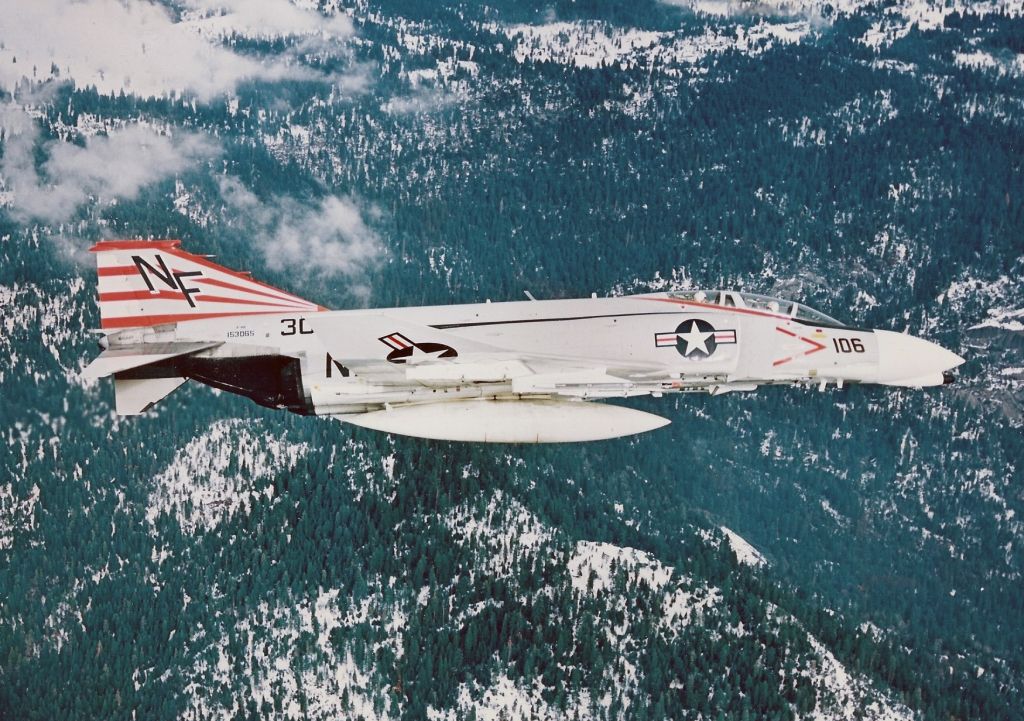
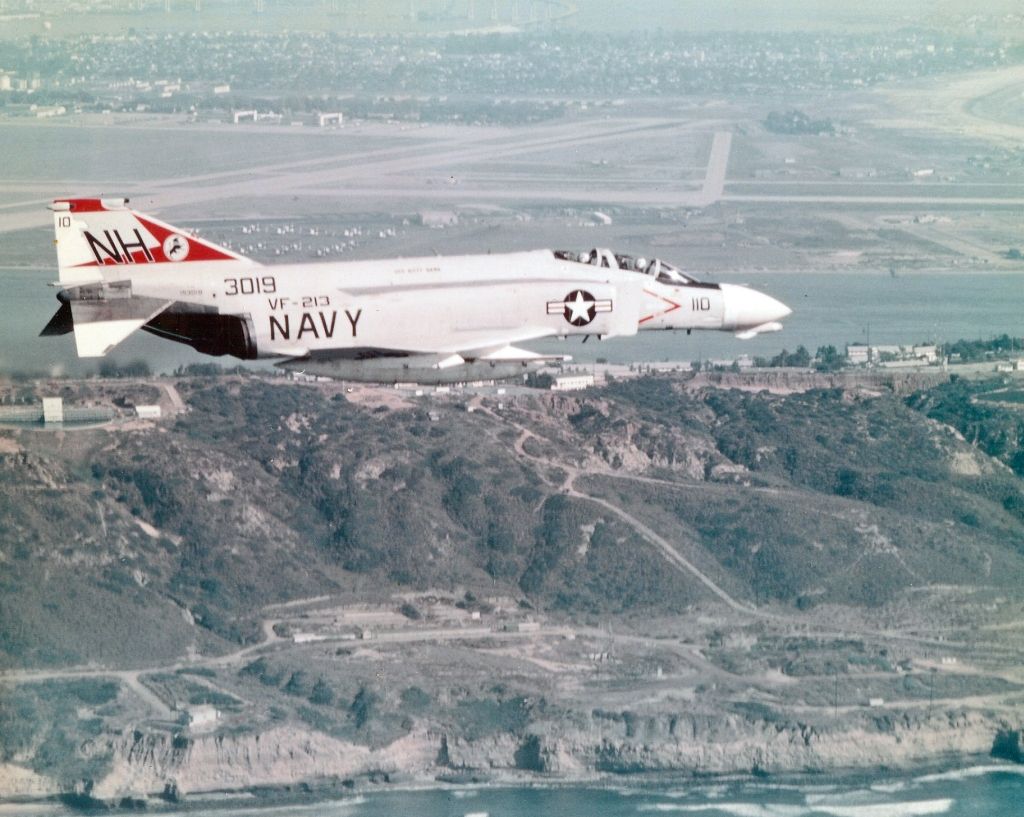
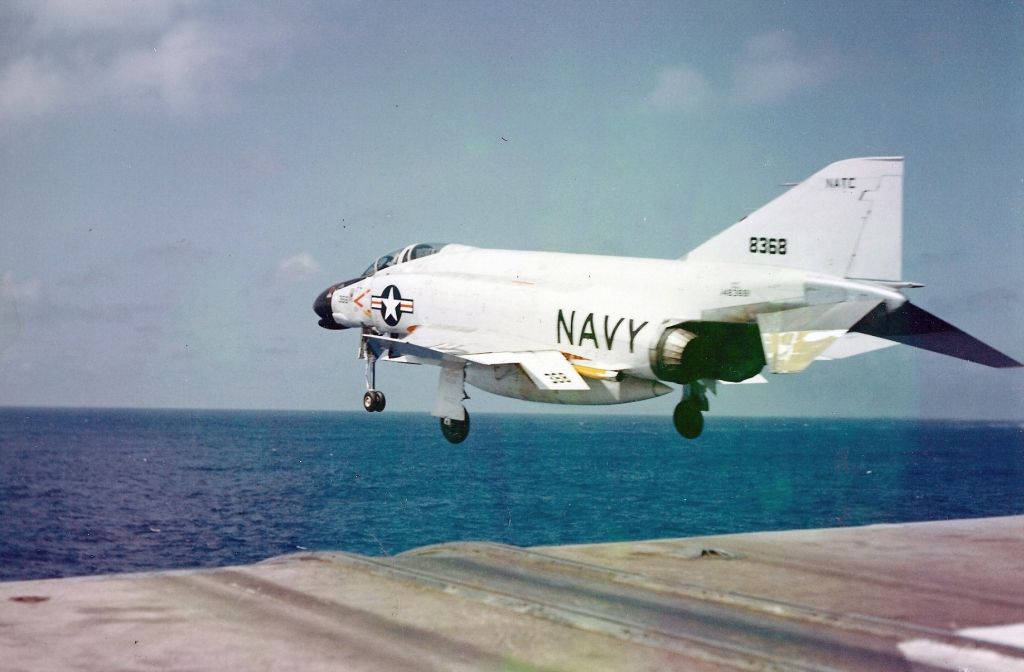
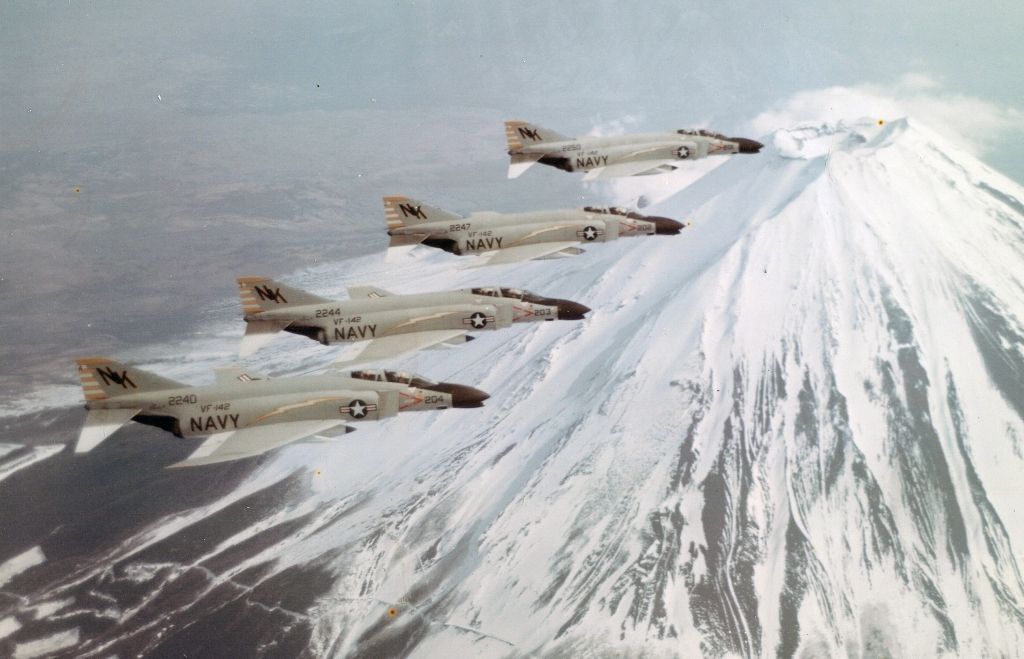

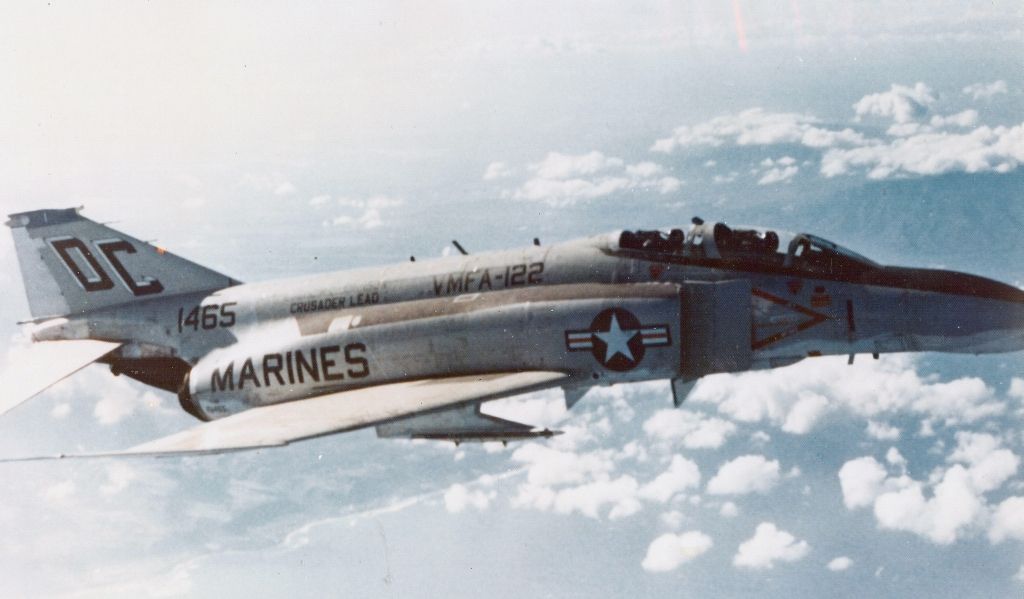
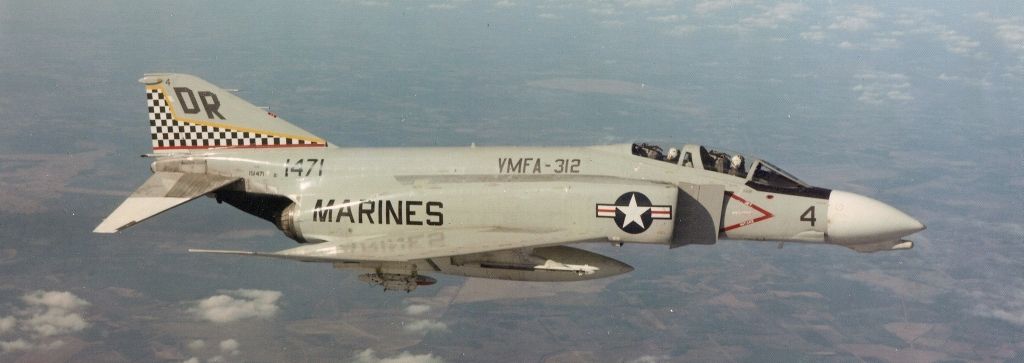
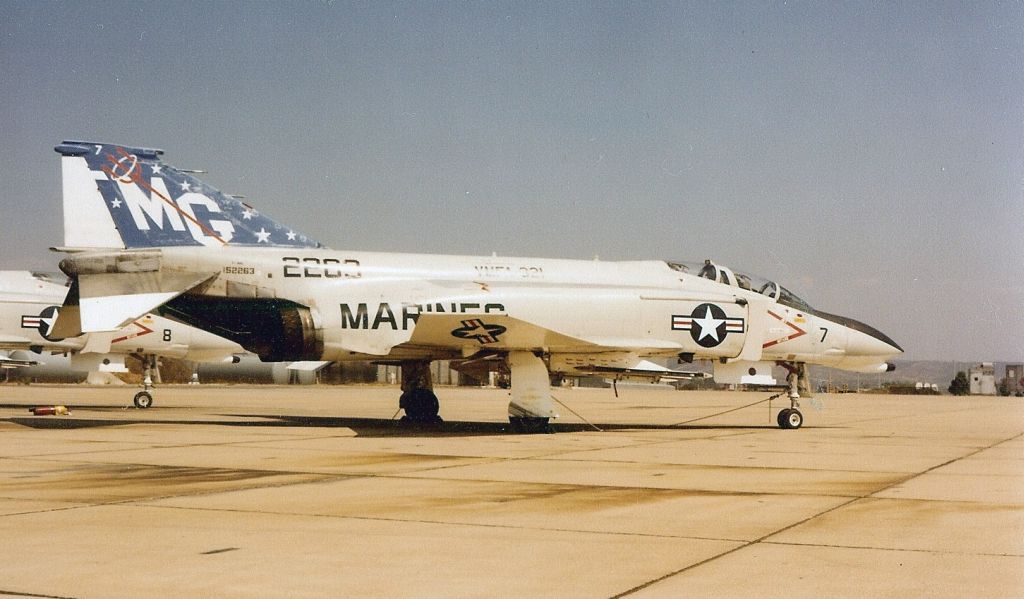

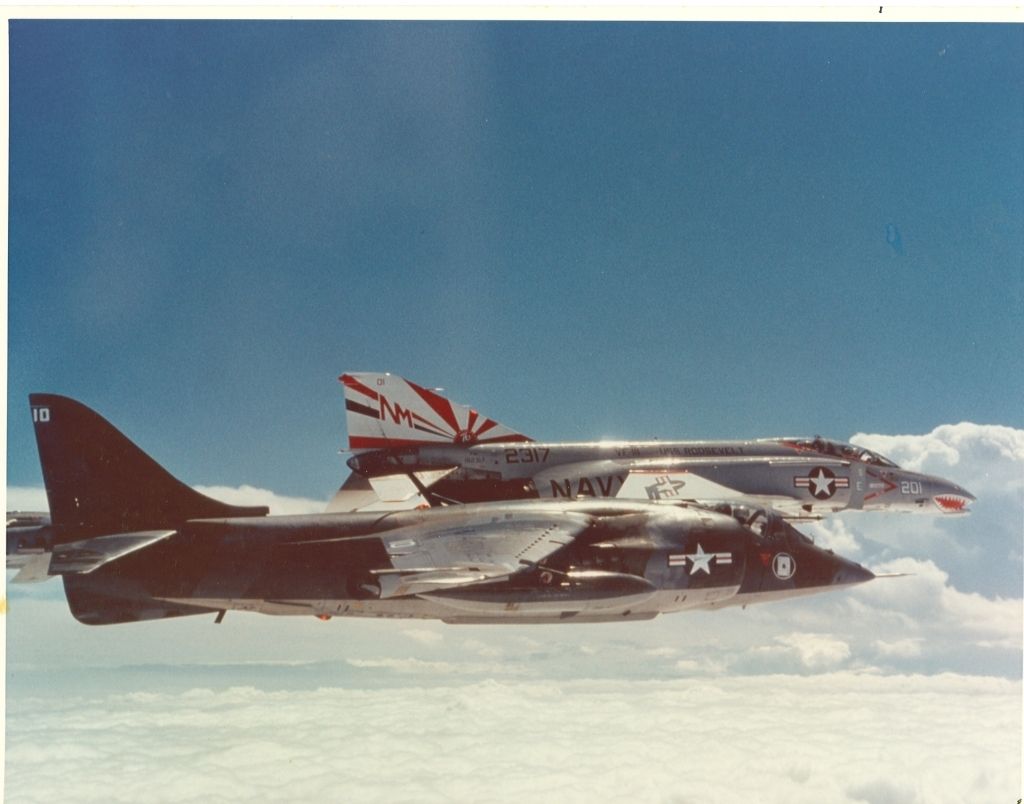
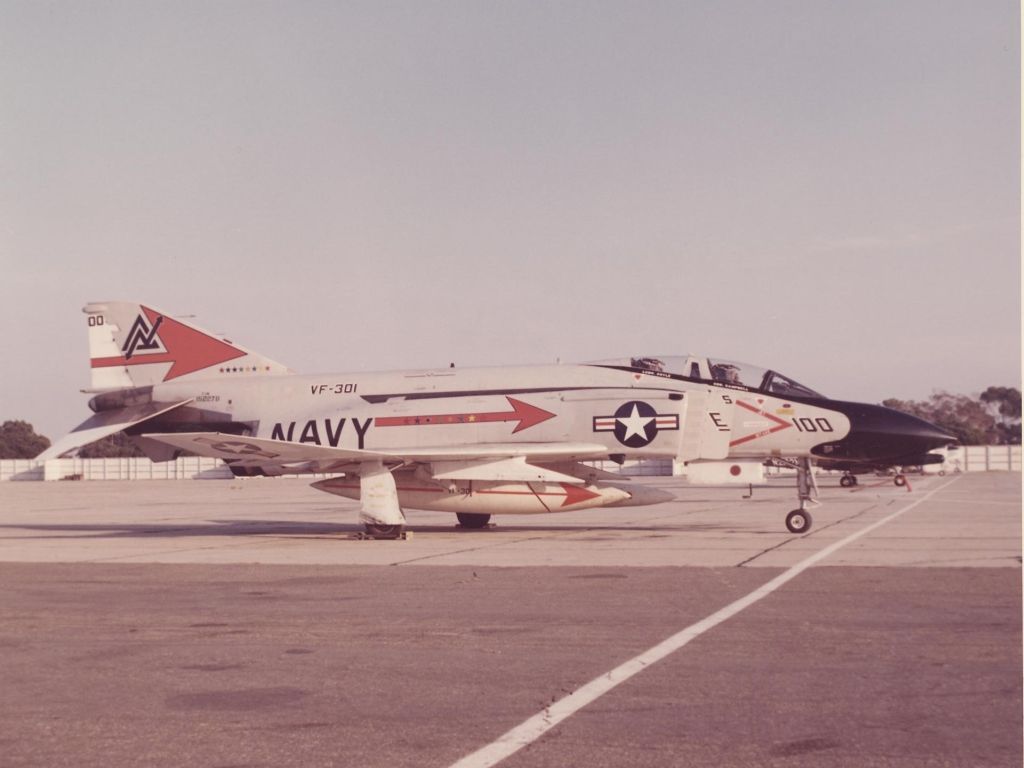

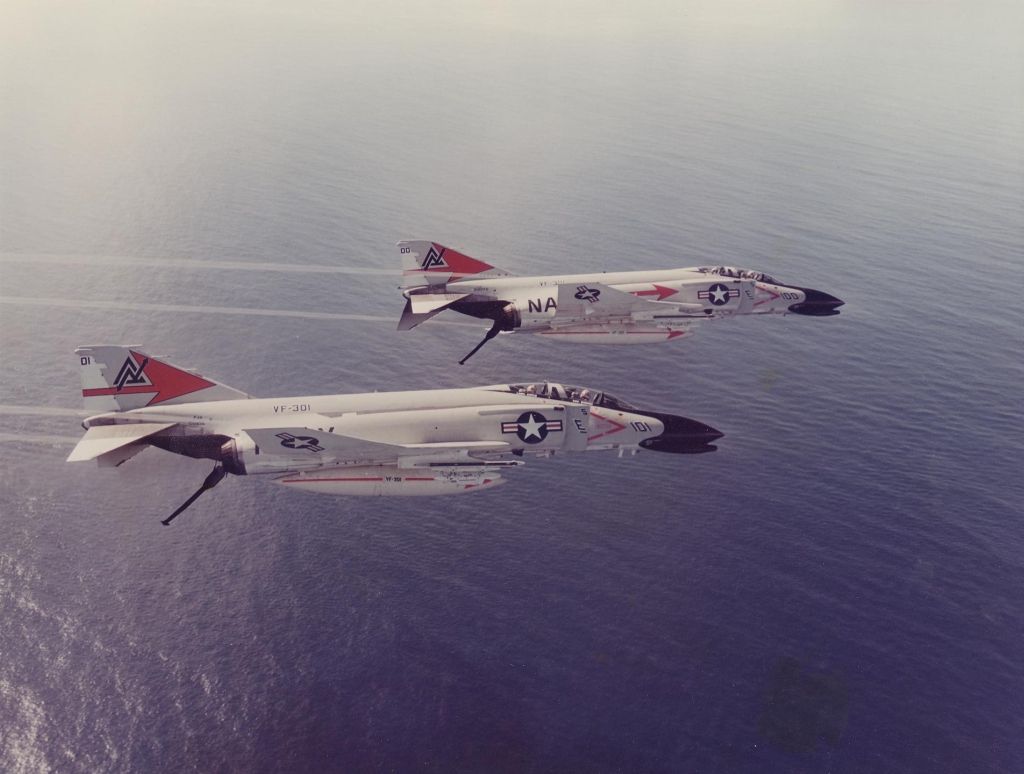
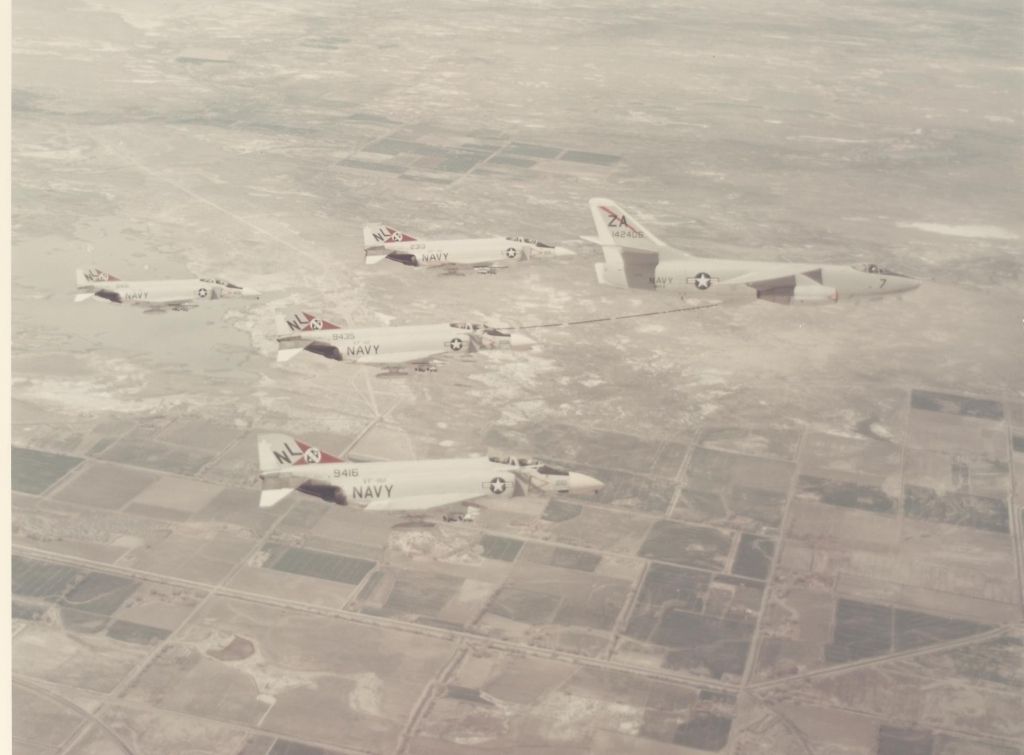
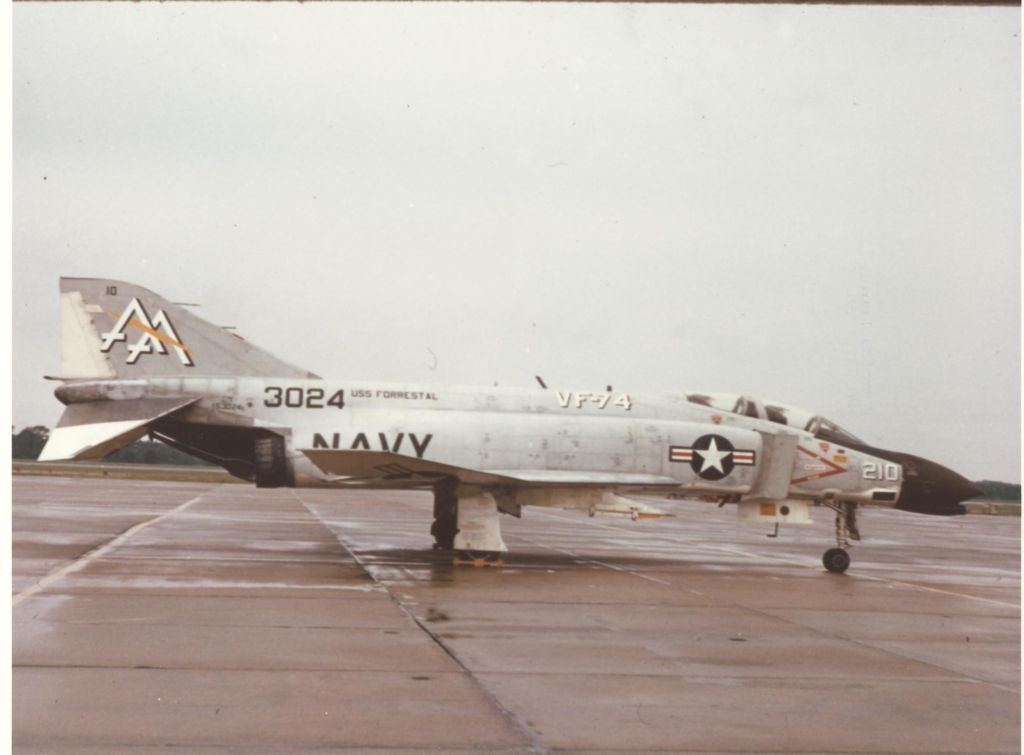

 [/URL]
[/URL]